














Experience effortless luxury with near-silent fully electric propulsion and access to the fastest public charging networks using Range Rover Electric vehicle 800v electrical architecture.
MSRP from $107,900.
Land Rover Louisville
4700 Bowling Blvd Louisville, Ky 40207
Sales (502) 429-8085
Landroverlouisville.com







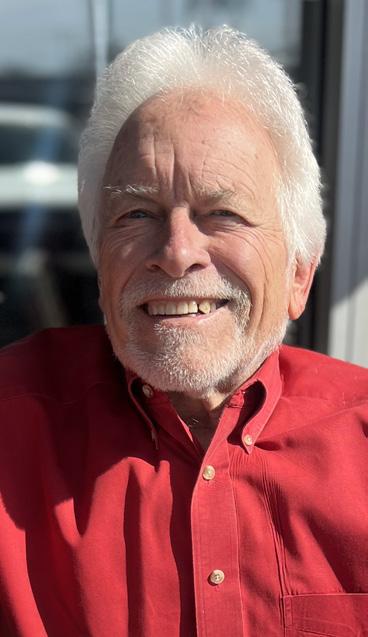
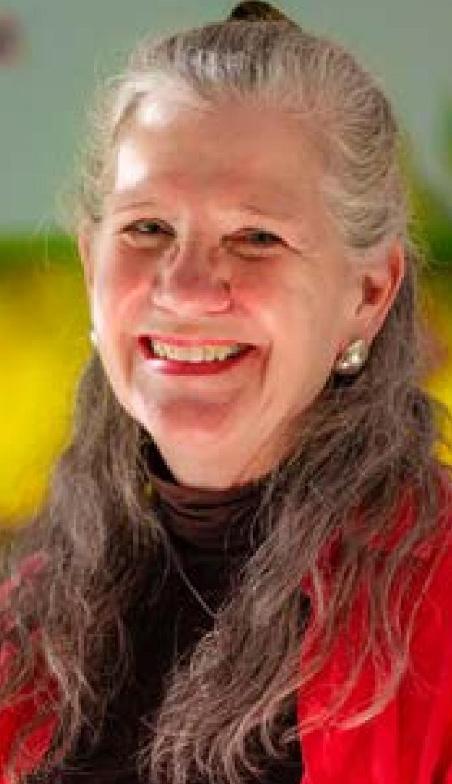
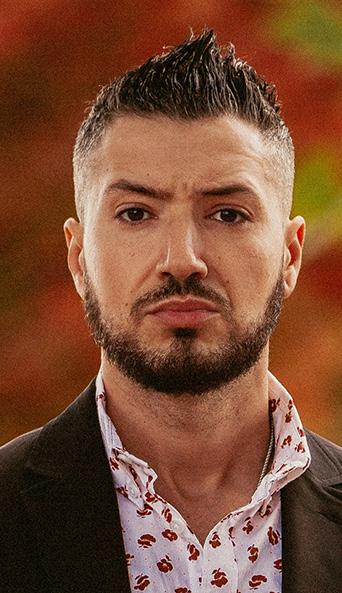






PRESIDENT/CEO, AMELIA FRAZIER THEOBALD
OPERATIONS MANAGER, MARY ZOELLER
CHIEF REVENUE OFFICER, JULIE KOENIG
CHIEF DIRECTOR OF EDITORIAL, ALISHA PROFFITT EDITOR, RAGAN VAN HECKE
CHIEF EVENT PHOTOGRAPHER & DIRECTOR, GRAPHIC DESIGNER, KATHRYN HARRINGTON
CHIEF GRAPHIC DESIGNER, JOSH ISON FASHION & EDITORIAL PHOTOGRAPHER, MATT JOHNSON FASHION & EDITORIAL PHOTOGRAPHER, ANTONIO PANTOJA
FASHION STYLIST, ASHLEA SPEARS
DISTRIBUTION: KELLI VAN HECKE, JILL & JOHN MINNIX
CONTRIBUTING WRITERS: ALISON CARDOZA, ALISHA PROFFITT, ASHLEA SPEARS, BILL DOOLITTLE, CAROLYN GREER, DR. RANDY WHETSTONE, JACKIE ZYKAN, LISA HORNUNG, MATT COLEMAN, MCKENNA GRAHAM, NAILAH SPENCER, REMY SISK, ROGER BAYLOR, RUSS BROWN
CONTRIBUTING PHOTOGRAPHERS: CAM ANDERSON/LOUISVILLE BATS, DUCKWORTH PHOTO, GIOIA PATTON, JACKIE ZYKAN, JOHN NATION, KEVIN S
Dear Louisville Voices & Readers,
As we venture into the dynamic business world of Men, I want to spotlight those in our community who have truly made their mark in many different ways in this community, including Harald Uwe Kern, pictured on our cover. By day, Uwe is the Artistic Director of the Louisville Ballet, by night, he is a DJ, scooter enthusiast and member of international scooter club The Vulcans. We also extend heartfelt congratulations to Uwe and his wife, Ashley, on the birth of their daughter, Astrid Elizabeth!
As Louisville gets back outside for the warmer weather, we have several ideas in this volume, including a group in our community worth knowing if you are interested in safely riding motorcycles, scooters, or vintage bikes: Louisville Vintage Motorworks. Or If you’re looking for room to include the whole family, consider visiting Jim Haynes, at Blue Grass Motorsport to find the ideal car for your summer adventures.
For those eager to explore the Ohio River, we’re excited about Morgan Atkinson’s “Ohio River” documentary. Scan our QR code to watch the full feature film and learn how you can help keep our river clean this season. Our own Matt Coleman, who began his career at the VOICE-TRIBUNE as a paperboy and is now the president of Discount Equity Services Inc., shares his extensive experiences on the Ohio River and his adventures around the world, including Antarctica.
In sports, let’s celebrate Russ Brown, who has been inducted into the Indiana Sportswriters and Sportscasters Hall of Fame. Additionally, we feature Daniel Hudson, CEO of Frazier Rehabilitation Institute, as he marks over a year in his role and more than 30 years in the industry, leading the next chapter of Frazier Rehab.
Men’s fashion is on the rise with our beloved Mamili 502 Boutique moving to Chenoweth Square and launching an expanded men’s department. This month, we showcase some of the stylish men’s items you’ll find at Mamili this season.
Thank you for being part of our vibrant community. Together, we celebrate, connect, and inspire, making Louisville a city where every story matters.
Don’t Miss Out!
Subscribe to our Curated Citywide Calendar to stay updated on all Louisville events and explore our new Society website.
Highlights:
New Society Website: Explore the latest features and updates.
VOICE INTERVIEWS: Join us for insightful conversations with Dr. Randy Wetstone. New Columnist: Welcome Jackie Zykan, Maître Liquoriste, Perfumer, and Herbalist, to our team.
Cheers to the many VOICES of Louisville!

Amelia Frazier Theobald

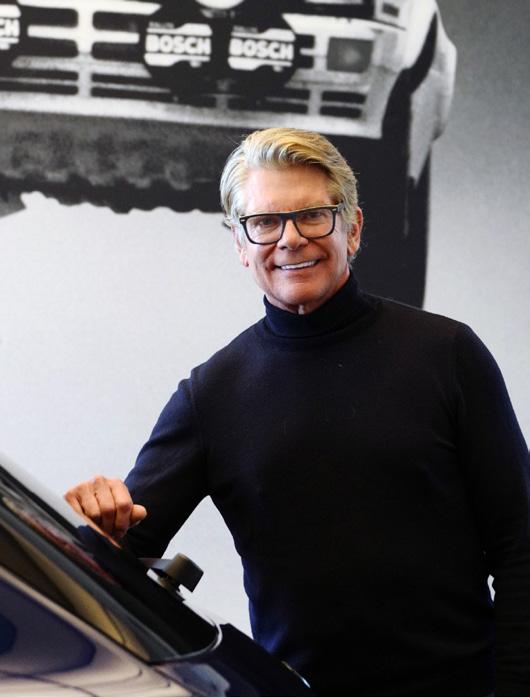




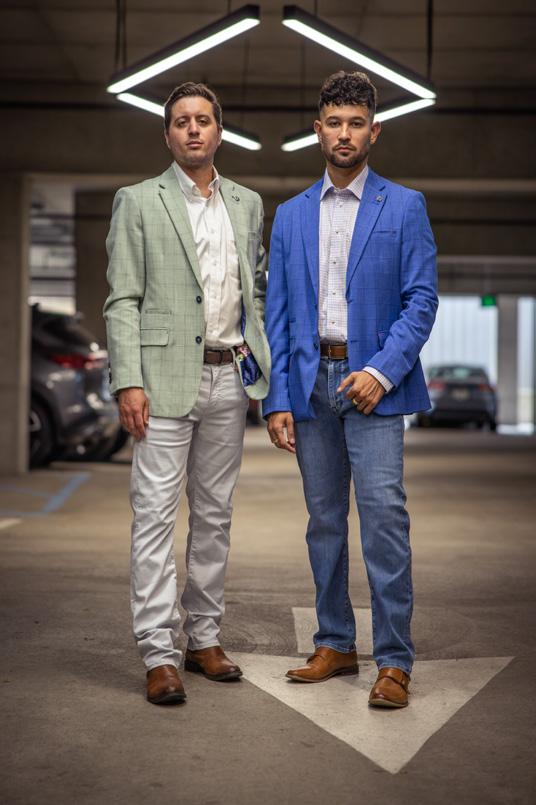
Musician Tyrone Cotton
By Lisa Hornung
Photos by Matt Johnson
Vincenzo’s: “Siamo una combinazione vincente!”
Dr. Randy Whetstone, Jr.
Photos by Antonio Pantoja
94 From VOICE-TRIBUNE Paperboy to Adrenaline Seeking Sailor: Meet Matt Coleman
By: VOICE-TRIBUNE & Matt Coleman
Photos provided by Matt Johnson & Matt Coleman


In the StyleLOUp: The Luxury Resale Market By Ashlea Spears
Hold Each Other Accountable: Dynamic Duo
128
High standards of first UofL team
By Russ Brown
Photos by UofL Athletics/Adam Creech
Jackie Zykan: Maître Liquoriste + Perfumer + Herbalist
By
Jackie Zykan
Photos by Jackie Zykan
Navigating Men’s
Skincare with CaloSpa’s
Dr. Bradley Calobrace & Dr. Juan Quintero
By VOICE-TRIBUNE
Photos by Matt Johnson
Levi Jordan quietly fills the bill for the Louisville Bats
By Bill Doolittle
Men’s Fashion with Mamili 502
Photos by: Kathryn Harrington
Styled by: Mike Tomes
Models: Alan Micheal & Raul Funes
Russ Brown: Indiana Sportswriters Hall of Fame
By VOICE-TRIBUNE
Photos by the Brown Family
Photos by Cam Anderson/ Louisville Bats Photo
By: Alison Cardoza Photos by Matt Johnson 132 Calendar of Events 141
This Month in Society 187
Thank You to Our Sponsors

By Carolyn Greer
Photos By Jim Haynes and Kathryn Harrington
Jim Haynes, Principal and President of Blue Grass Motorsport, didn’t intend to go into the car business when he was starting out. And he didn’t intend to spend most of his life in the bluegrass state.
Haynes was born and grew up in El Paso, Texas. He attended the University of Texas at Austin and got a degree in accounting before pursuing a career in that field.
While in college, he met his future wife, Sara Vine. Sara’s father, Herb Vine, owned Blue Grass Lincoln Mercury in Louisville. Sara wanted to return to her hometown, and Haynes, who had been working with regulated industries and the oil and gas fields for Arthur Anderson & Co., had been thinking that he should be moving up at the company.
“I was 24, and I thought I deserved this big promotion,” Haynes said. “I’m 24 years old and four years, probably, in retrospect, I didn’t need to be a four-year manager, even though I was working a lot. And so I went into the car business.”
Blue Grass Motorsport today has Porsche, Audi, Land Rover, Jaguar, Maserati and Alfa Romeo dealerships at a gleaming campus on Bowling Boulevard, and Haynes owns the business with his brothers-in-law, Andy and Mike Vine. But there were lots of steps on the way from Blue Grass Lincoln Mercury to becoming the purveyor of high-end European vehicles that the company is today.
Herb Vine started Blue Grass Mercury in 1966 and added Lincoln in 1973. The dealership was located at 4301 Shelbyville Road, the site of a Planet Fitness today.
Haynes said that when he joined the company, “I knew it gave my father-in-law a nice living. But he had two other sons who were coming to the business. And I knew everybody was going to want to live as nice as their father. So I knew I was going to have to expand the business.”
“Taking what he called a conservative approach, we just added franchises as they came available. And we tried a lot of different franchises.”

“We were Saab dealers, Alfa Romeo dealers, Isuzu dealers, Hyundai. And then in 1991, we bought the Audi dealership from Don Corlett, and then the following year in November of ‘92, we bought Don Corlett’s Porsche and Mazda business.”
That transaction occurred not long before Corlett’s death, Haynes said. “I remember when we bought the Audi from him, he said, ‘If I was young, I would get on this bandwagon. I think Audi’s going to go places’ Because in 1991, Audi was really nothing at that time. So his words were prophetic.”
At the same time, he and his brothers bought out Herb Vine and took over the business.
The company’s growth continued.
“In 2000, we were given the Land Rover franchise, and we built a little Land Rover center on Shelbyville Road. Part of it was on property Don Corlett had, the other part was a closed Chevron gas station. Today, that building has been converted into a Mazda dealership, which we sold. Then later, we bought out Tom Payette when he wanted to sell his Jaguar franchise.”
With the purchase of the Jaguar dealership, Blue Grass bought its property on Frankfort and Bauer avenues. That acquisition from Tom Payette resulted into a real estate development venture for the partners.
The owner of Land Rover and Jaguar wanted Blue Grass to combine them in one location, so Haynes began looking for companies that might be interested in the Payette site.
He went to a retail real estate conference and learned that Walgreens was interested in the site, but first, he had to work with Masonic Home to have a traffic light installed. Starbucks was thinking of putting a store at the corner of Lexington Road and Bauer, but the company opted for Frankfort Avenue instead. The partners also made a deal for a National City Bank office on the site.
Meanwhile, they had just opened the campus on Bowling Boulevard.


“And so we were just getting thin on capital. And that’s when we sold the Lincoln Mercury, Isuzu Hyundai and Mazda to Tracy Farmer and the real estate associated with it.”
In addition to the Bowling Boulevard site, Blue Grass has “a little satellite on Shelbyville Road, next to the American Legion. We have a photo booth there. And we do repairs to electrical vehicles there.”
The company also is “looking at building a new building for Porsche and opening a body shop, a collision repair center. It’ll be a different location,” he said, although he declined to say where.
Haynes was clear on what’s behind the growth and staying power of Blue Grass Motorsport.
“I have two wonderful partners,” he said. “And between the three of us, we’ve worked well together. And the success here is as much credit to them as it is to me.”
Knowing the story of Blue Grass Motorsport, then, it’s probably not surprising that Haynes said his “real passion is cars. And business. I enjoy the engagement in business.”
His day-to-day car is a Porsche 911 Cabriolet. And his dream car? “My next Porsche, I guess.”
Jim and Sara Vine live in Glenview and have two sons. Their youngest son, Jeffrey, is mentally disabled and lives at Cedar Lake Lodge in La Grange. Their oldest son, Travis, is an associate
Haynes has served on the Louisville Ballet board for years, though “it’s been way too long” to recall just when he started there.
“It’s turned around and ever since we got Leslie Smart (as executive director),” he said. “The ballet was in a tenuous situation, but it’s gaining firm footing, and I expect it to get stronger under Leslie’s solid leadership.”
Haynes also was on the Kentucky Opera board, and now he’s president of the Kilgore Counseling Center board, which is a mission of Second Presbyterian Church, where he’s a member. He also is on the boards of River Fields and the Filson Society.








July 12, 2024–January 12, 2025
Enter an infinite world of wonder, mystery, and imagination.
Yayoi Kusama: Infinity Mirrored Room– LET’S SURVIVE FOREVER, on special loan from the Art Gallery of Ontario, explores ideas of “self-obliteration” through repetition and play with space, light, color, and time. This immersive presentation will mark the first time that a major work by Yayoi Kusama (b. 1929, Japan) has ever been on view in Kentucky.
Leading Sponsors:
Brooke Brown Barzun and Matthew Barzun
Victoria and Paul J. Diaz
Susan and Allan Lavin
Exhibition season sponsored by:
Cary Brown and Steven E. Epstein
Debra and Ronald Murphy
Sociable Weaver Foundation
Tickets at speedmuseum.org

Bob Owings and his son Sam, 25, represent the second and third generations of Owings Patterns, Inc. in Sellersburg, Ind. The company recently earned small business awards from both Indiana and Louisville organizations.
By Russ Brown
Photos By Matt Johnson
Robert Owings’ path to becoming an award-winning small business owner started at a young age, although it was quite a few years down the road before he came to the realization that he was destined to follow in the footsteps of his father, the late Robert Owings Sr. -- or “Big Bob,” as he was called to distinguish himself from his only son.
The younger Owings, 55, is president and CEO of family-owned Owings Patterns, a manufacturing business based in the Sellersburg (IN) industrial park that recently won two prestigious awards. Nearing its 50th anniversary, Owings Patterns was named Family-Owned Business of the Year by the Indiana Small Business Development Center and received the Family Business Award, Small Company, from Louisville Business First.
Owings Patterns, which has 32 employees, designs and manufactures custom thermoform tooling, plastic thermoformed parts and packaging solutions for automotive, appliance, food and beverage and recreational industries. Among its major clients are Link Belt Cranes, GE, Whirlpool and Samtec, a global leader in the electronic interconnect industry whose headquarters are in New Albany, IN.
Big Bob was a pattern-maker for International Harvester when he started a business in his garage and basement in 1975 to supplement his income, and when IH closed its Louisville plant in 1981, it became a full-time endeavor.
Following his death in 2006, the younger Owings took over after receiving his degree in Business Management from IU Southeast, and using state-of-the art technology, has taken the business to new heights. With the addition of his own son, 25-year old Sam, it is now a third-generation company. Sam holds the dual titles of quality manager and Entrepreneurial Operating System (EOS) manager for the company, in addition to being in charge of other projects. Bob’s wife and Sam’s mother, Michelle, is administrative assistant with duties that include customer service and culture development. The Owings are hopeful that their younger son, Seth, who is majoring in finance at Butler University, might eventually join the company.
Bob says Owings Patterns is on track for 50% growth over the next five years. He describes his leadership style as collaborative. “’That’s the way we have always done it,’” can be an expensive statement. Get the input of others and let them see their contribution to the big plan.”
Signs throughout the building emphasize Owings Patterns’ core values of integrity, quality, safety and respectfulness, along with urging stewardship of company, clients and each other; production dependability and satisfaction in work and life.
Like his father, Bob has earned the reputation as a benevolent, generous and thoughtful employer.
“A family business has unique characteristics that, if maintained with love, respect and compassion, offer an environment that only a few are fortunate enough to enjoy,” he says.
Bob recalled the early days when his dad was just launching the business at home and sometimes called on him and his four sisters to help with piecework.
“When I was about seven, I remember late afternoons and early evenings, he would give us little jobs to do,” Bob said. “Then when Harvester closed it forced his hand and caused him to accelerate the process, and he ended up supporting us through his business full-time.”
Bob worked for his father while at IUS, but wasn’t sure he wanted to continue after graduating in 1991.
“At that time the business was really just my dad and me,” Bob said. “I was thinking about taking a career path that was something different. But as time went on, I circled back around to what I had kind of been programmed to do.”
Among the many lessons he learned from his dad was the importance of maintaining a work-family balance, something he himself has successfully managed. He says his favorite “unwind time” is entertaining family and friends aboard his twobedroom yacht that is moored at Captain’s Quarters. They took numerous family trips when the boys and their sister, Jacqueline, 23, were young and they have continued to travel extensively, both domestically and abroad. Several summers ago, Bob, Sam and Seth walked an 80-mile section of the Camino Trail in Spain.
“While my dad worked hard, often alone at nights, he always made time for family,” Bob said. “There is a delicate balance to family businesses and stress is omnipresent, so that balance can easily tip to ‘workaholic.’ It’s important to segregate your work and family life and remain committed to a healthy work life and home life balance.”
As the prospective successor to his father, Sam is learning the business, which he joined several years ago upon leaving Colorado State in Fort Collins, Col., where he was majoring in watershed management. Why such an abrupt U-turn?
“I wanted to move home and be closer to family,” he says. “Plus, lucrative positions in watershed management are few and far between.”
“I believe those three years away from home gave him a perspective and an appreciation for a family business and how rewarding it can be in a number of ways,” his dad observed.
Sam’s duties at Owings Patterns cover a wide range, all boiling down to one major goal: delivering a quality product on time.
As for any differences in his and his father’s approach, Sam says:
“He’s the visionary who looks at the big picture and sets goals. We are alike in that we get charged up about setting things in motion and building things. We like to brainstorm about where we want the business to go. I’m in charge of setting a road map to achieve those goals. He operates more by feeling, while I am more data-driven. I like to grab the data and see where it can take us.”
Outside of business, the Owings are active in church and civic affairs in the Louisville area. They serve in various capacities at the Cathedral of the Assumption downtown and support many charitable events, including Let’s Dance Louisville. Bob is currently president of the Prosser Career Education Center in New Albany, which assists students in the transition from graduation into meaningful employment in his or her field of study. He is also a former board member of One Southern Indiana and a supporter of the Family Business Center at the University of Louisville.

Awards presented to Owings Patterns, Inc. from the Indiana Small Business Development Center (Family-owned Business of the Year) and Louisville Business First (Family Business, Small Company).


By Mckenna Graham
Photos by Matt Johnson
Since 1954 UofL Health - Frazier Rehabilitation Institute has been offering patients high-quality rehabilitative care, boasting the latest technology, expert clinical support, and some of the best patient outcomes nationally. In February 2023, Frazier Rehab welcomed Daniel Hudson to the helm as their new CEO. Hudson, who has worked in the healthcare field for nearly 30 years, beginning as an Occupational Therapist, graciously offered to tell us a little more about himself, his experience in the healthcare field, and his hopes and aspirations for the future of the Frazier Rehabilitation Institute.
Q: Do you have any personal stories from your life and/or health journey that connect you to your work in the healthcare field?
Hudson: Being able to be part of a patient’s recovery is the ultimate reward. Since I have been at Frazier Rehab, I have gotten to know many patients and families that have faced significant medical and psychosocial challenges, through their hard work and the inspirational care provided at Frazier Rehab they were able to return home - at the end of the day that makes our work feel worthwhile.
Q: Are you from Louisville? If not, where do you consider your hometown?
Hudson: I am originally from Cincinnati but attended Eastern Kentucky University and have lived in Kentucky since 1993.
Q: For the readers who are unfamiliar with the Frazier Rehabilitation Institute, can you tell us a little about it in your own words?
Hudson: UofL Health – Frazier Rehabilitation Institute was established in 1954 by Amelia Brown Frazier. Following her own search for the best rehabilitative care in the U.S., she wanted to ensure that residents of Kentucky and our region had the same opportunity for high-quality rehab. At that time, a rehabilitation hospital was a new concept. So less than 10 years from the founding of rehab hospitals in places such as New York, Frazier Rehab was opened in Louisville. Since that time, the hospital has grown from 33 inpatient beds to 135 and is now one of the largest non-profit rehabilitation hospitals in the nation. Additionally, Frazier Rehab has more than 20 outpatient locations so individuals can receive therapy close to their homes.
Q: What makes Frazier Rehab unique?
Hudson: A number of factors differentiate Frazier Rehab from other rehab hospitals. First, we serve patients of all ages – from pediatric to geriatric. We also treat patients with a wide variety of conditions – caring for patients who have neurological disorders, amputations, other orthopedic conditions, those recovering from transplants, individuals on ventilators, and those needing pulmonary care. Frazier Rehab also has nationally accredited programs for brain injury, stroke, neurological disorders, and spinal cord injury. Our Frazier Rehab and UofL Health continuum of care takes patients from the acute hospital setting to inpatient rehabilitation, specialized centers, outpatient therapy, and wellness in our Community Fitness & Wellness gym.
Q: What are you excited about most in this new position?
Hudson: Our Frazier Rehab and UofL Health continuum of care has the potential to be recognized as one of the best both nationally and internationally. This continuum model of care is unique, and combined with our clinical expertise, care for the highest acuity, the variety of diagnoses served, exceptional clinical outcomes and cutting-edge technologies, Frazier Rehab truly is set apart from other rehab facilities. Frazier Rehab continues to clinically innovate by investing in new programs to better serve our patients – we recently opened our Center for Advanced NeroRehab on our downtown campus and Frazier Rehab Sports in several locations throughout the region.
Q: What are your hopes for the future of Frazier Rehab?
Hudson: Frazier Rehab’s solid reputation was established and has been nurtured by all of the previous leaders – people such as Joanne Berryman and Cathy Spalding. I want to help build the reputation further. I strongly believe Frazier Rehab will continue to be nationally and internationally known for the excellent services provided. Our city, region, and state also need to know what an asset Frazier Rehab is to our citizens.



Hildegard House Medical Director Dr. Chuck Anderson on the mission of the nonprofit and its upcoming fundraiser, Cocktails for Compassion
By Remy Sisk
Photos by Matt Johnson
In Louisville’s historic Butchertown neighborhood sits the two properties of Hildegard House, a nonprofit organization that is the only of its kind in the state; it is a comfort care home that provides compassionate care for individuals at the end of life who have no home or loved ones to care for them in order to allow them to die with dignity. Dr. Chuck Anderson is the resident medical director of Hildegard House.
The initial property – now known as the “Motherhouse” – opened in 2015 with its second location, just across the alley from the first, opening in 2023. Both offer three beds each to be filled by those at the end of life who have nowhere else to go. Thanks to the dedicated team of staff and volunteers at Hildegard House, including Anderson, those who come to Hildegard House may pass away in a safe and comforting place.
Anderson has been involved with it from the beginning. He’s a pulmonologist as well as a sleep medicine doctor and board-certified hospice doctor who serves as medical director of the Palliative Care Unit at Baptist Health Louisville. When Hildegard House Executive Director Karen Cassidy was working toward its opening, she was in talks with some Baptist Health nurses, and they encouraged Cassidy to reach out to Anderson.
“Initially when I got involved, I was the medical director of the house and I didn’t have a lot of involvement with patients,” Anderson recalls. “But after a couple years, Karen and I talked, and I said, ‘Hey, why don’t you let me be the attending of all the patients and they can call me and I will see the patients and I will take care of them.”
From that moment on, Anderson has streamlined the home’s care and been the sole attending doctor at Hildegard House, helping people in their final days to be the most at peace and the most comfortable they can be.


Part of what compels Anderson – whose palliative work extends from Hildegard to Baptist – to be involved with this side of medicine is the revolutionary newness of it and the self-sovereignty that is at its core. He remembers the dialogue surrounding the Supreme Court hearing right-to-die cases and understanding the agency these decisions now afforded the individual.
“The Supreme Court had a lot of decisions where you can make your own decision,” he shares. “It was legal to withdraw life support. It was legal to stop tube feedings – so people could have their own autonomy. That movement was underfoot in the nation.”
As this movement became practice and patients could choose to decline life support, it called on medical professionals to reconcile treatment of patients with knowing they were not going to survive. “Some people would say, ‘They’re withdrawing life support, so I’m signing off. I’m not taking care of them anymore,’” he remembers, “or, ‘There’s nothing else for us to do,’ which – there’s a lot to do! We can give them medicines to treat their shortness of breath, medicine to treat their pain, medicine to treat their nausea. People can help them with their spirituality. We can help them with end-of-life things as well.”
Anderson was so taken with this direction of medicine that he helped start the palliative unit at Baptist, and nearly 10 years later, he doesn’t think twice about giving his time, services and energy to those at Hildegard House.
Now, Hildegard House welcomes anyone who finds themselves needing its services. This can indeed include the homeless, but also the home serves as an extension of hospitals; for many, Hildegard House can be a better option than a nursing facility. Additionally, there are those who perhaps have a home and spouse but no one to adequately give them the care they need. Consequently, the organization serves a varied and diverse population but is equitable and intentional about the high level of comfort and care it provides to all.
In order to continue their ongoing impact they make daily in the community, Hildegard House will be hosting the large-scale fundraiser Cocktails for Compassion this September. The event aims to raise awareness as well as funds for the future of the nonprofit and will see Anderson and his wife, Denise, as honorary chairs.
Cocktails for Compassion will take place at Waterfront Botanical Gardens and offer guests music, drinks, heavy appetizers and a raffle, all in the name of fundraising for this imperative and impactful organization. “I hope if someone’s not familiar with Hildegard House, then this helps get the word out about what we’re doing,” Anderson says of the event. “Or if they have familiarity with it, then this will encourage them to continue supporting it.”
Tickets as well as sponsorship opportunities for Cocktails for Compassion are available at hildegardhouse.org on August 1st, where you can also get more information on volunteering or make a donation for any amount.



*Audi of America will pay the first invoiced finance or lease payment up to $1,000 on a
unused 2024
S3,
Sedan, S4, A5/S5 Coupe, A5/S5 Cabriolet, A5/S5 Sportback, Audi Q3, Q4 e-tron, Q4 Sportback e-tron, Audi Q5/Q5 55e/SQ5, Audi Q5/SQ5 Sportback; up to $1,500 on a
unused 2024 A6 Sedan, S6, A8/S8, Audi Q7/SQ7, Q8/SQ8, Q8/SQ8 e-tron, Q8/SQ8 Sportback e-tron; and up to $1,500 on a new, unused 2025 Audi Q7/SQ7. Customer is responsible for any amount in excess of these caps. Subject to credit approval. Offer expires July 31, 2024.


WATERWAYS
EXECUTIVE DIRECTOR MICHAEL WASHBURN BRINGS AN ON-THE-GROUND APPROACH TO HIS CAREER
By Remy Sisk • Photos by Matt Johnson
“The way that I approached everything in my life was really about creating the conditions that foster individual and community flourishing,” says Michael Washburn, a Louisville native and writer with a multifaceted cultural and academic background, currently serving as the executive director of Kentucky Waterways Alliance (KWA).
Washburn grew up in the Highlands of Louisville but spent a great deal of time in New York with his wife. There, he worked as director of programs for Humanities New York, “an organization that dealt with using literature and film as sort of lenses through which to view a series of social tensions,” Washburn relates. “It was a civic engagement organization – I used to say that my job was about getting people in rooms together who were never in rooms together to talk about things they didn’t normally talk about.”
In 2015, Washburn and his wife had their son, and the couple soon realized that “living on a nonprofit salary in New York with a kid was crazy, so we moved back where we had a support system in Louisville,” Washburn shares.
Although they relocated to Louisville, they both kept their New York jobs, leading to always one of them being in the city while the other stayed in Louisville solo parenting. “And then the pandemic stopped travel,” Washburn recounts. “And across the board, the pandemic provoked a lot of reflection in people. Once that thawed and it was time to start traveling again, we both realized that we really wanted to be working in the community we lived in and I also wanted to be working in a different sector, something that was a little bit more directly engaged in the world.”
And so Washburn arrived at KWA in December 2022 as its executive director. The organization has been around for 31 years; it’s an environmental nonprofit that is dedicated to protecting, restoring and celebrating the waterways of Kentucky. “We do that through a variety of things,” Washburn describes, “everything from a grants program to septic work in Eastern Kentucky to advocacy, lobbying and sometimes some litigation. So widely speaking, we just seek to preserve the water resources of the state. My job is to set the organizational direction and help facilitate resources so my staff can be out there and doing the real work.”
This very active and hands-on style of KWA’s operation and Washburn’s continued leadership of it was partially motivated by his work at Humanities New York. While that organization was finding innovative ways to make real community impact, Washburn was hungry for something more immediate, more direct, more concretely connected to the community. “I felt like that was what was right for the next phase of KWA,” he says, “not to move away from the scientific and the hardcore technical work that we’ve been doing but to expand also into an organization that really foregrounded individuals and communities and not necessarily aquatic wildlife.”
Simultaneous to his work at KWA and in New York, Washburn has enjoyed a career as a writer. Washburn has written a great deal about books, politics, and travel for such outlets as The Boston Globe, The New York Times, The Washington Post and more.
In 2019, he published an entry in Bloomsbury’s “33 1/3” collection, a music-focused series that dives deep into a single album at a time. Washburn’s contribution covers Tom Petty’s 1985 album “Southern Accents” and is an in-depth look not only at the album but its context and the state of the American South.
As Washburn continues to move forward, both with KWA and his writing, he remains grateful to be able to do it all right here in Louisville, a city where he can not only foster environmental and community engagement, awareness and empowerment, but also build a life with his family. “There’s often a debate over whether Louisville is Midwestern or Southern,’” he says. “And the way that I tend to think about it is that Louisville at its best exemplifies some great things that get attributed to Southern graciousness, such as friendliness, community and a frequently forgiving pace of life. Which isn’t to say that Louisville doesn’t also fall victim to many of the most vicious characteristics of the American South.”

How Kentucky Select Properties built a brokerage based on family and friendship
By Nailah Spencer • Photos by Matt Johnson
Kentucky Select Properties will celebrate 20 years of serving the Bluegrass State with unwavering dedication and local pride on July 15, 2024. Founded by John Stough Jr. and Sandy Gulick in Louisville, Kentucky, this brokerage emerged from a simple desire for a community-focused approach to real estate.
The decision to break away from a national franchise, where Stough Jr. held a management position, and Gulick excelled as a top agent for a decade, was driven by their vision for a more fulfilling real estate experience. In 2004, they launched Kentucky Select Properties, dedicated to providing “trusted direction in real estate,” a promise that has defined their journey and shaped their company culture ever since.
“We were just looking for a nice, pleasant, small company. We didn’t think we’d make as much money, but we thought we would have more fun. Because we were in a big corporate place that we didn’t love.” said Gulick.
“I’ll never forget, it was Bastille Day when we left. We opened the doors the next day and there were 18 agents who sort of flocked. Then we’d get a phone call every day, and 3, 5, or more would want to come on too". Said Stough Jr.
Today, Kentucky Select Properties has a team of 80 agents that serve Metro Louisville and its surrounding areas. They are led by founders Sandy Gulick and John Stough Jr., alongside partner and managing broker Jay Gulick, who has been integral to the company for 19 years. Their leadership continues to uphold local market expertise and a commitment to excellence in customer service.
“We’re not part of a bigger organization. So the Kentucky Select name and our colors, the way we advertise and market, and how we give back to the community are all unique to us, you know, many of the dollars that we make here go back to the community.” Jay Gulick said. “We are so intimately connected, it lends us to wanting to invest in community because we are invested in each other.”
KSP has supported over 20 local non-profit organizations, a testament to their commitment to the community. This dedication has earned them the title of “Most Generous Small Company” in the Business First of Louisville Partners in Philanthropy Awards five times. The Managing Director of Blessings in a Backpack, one of the organizations they support, shared her thoughts on their 13-year partnership with Kentucky Select Properties.
“They have generously given their time to distribute Blessings food on Friday mornings at Engelhard Elementary, sponsored various events throughout the years that benefited Blessings, and financially supported our program to allow us to feed more children over the weekend” said Kim Holsclaw. “For over ten years, they have supported the families and students at Engelhard Elementary School. Engelhard is a very high need school with many high need students and Kentucky Select Properties has shown us all great allegiance to those needs” Said Engelhard Elementary’s Family Resource and Youth Services Centers Coordinator, Regina Jackson-Willis.
With two decades of success behind them and a commitment to continue growing their footprint, Kentucky Select Properties embodies the essence of supporting locally-owned businesses and investing in their community’s future.




In honor of our Men’s Volume, the VOICE-TRIBUNE is taking a trip back in time to when men were boys and honoring a long-time community tradition and love- high school sports. Join us as we deep dive into the vault for a nostalgic reflection on home games, friendly rivalry, and school spirit.



















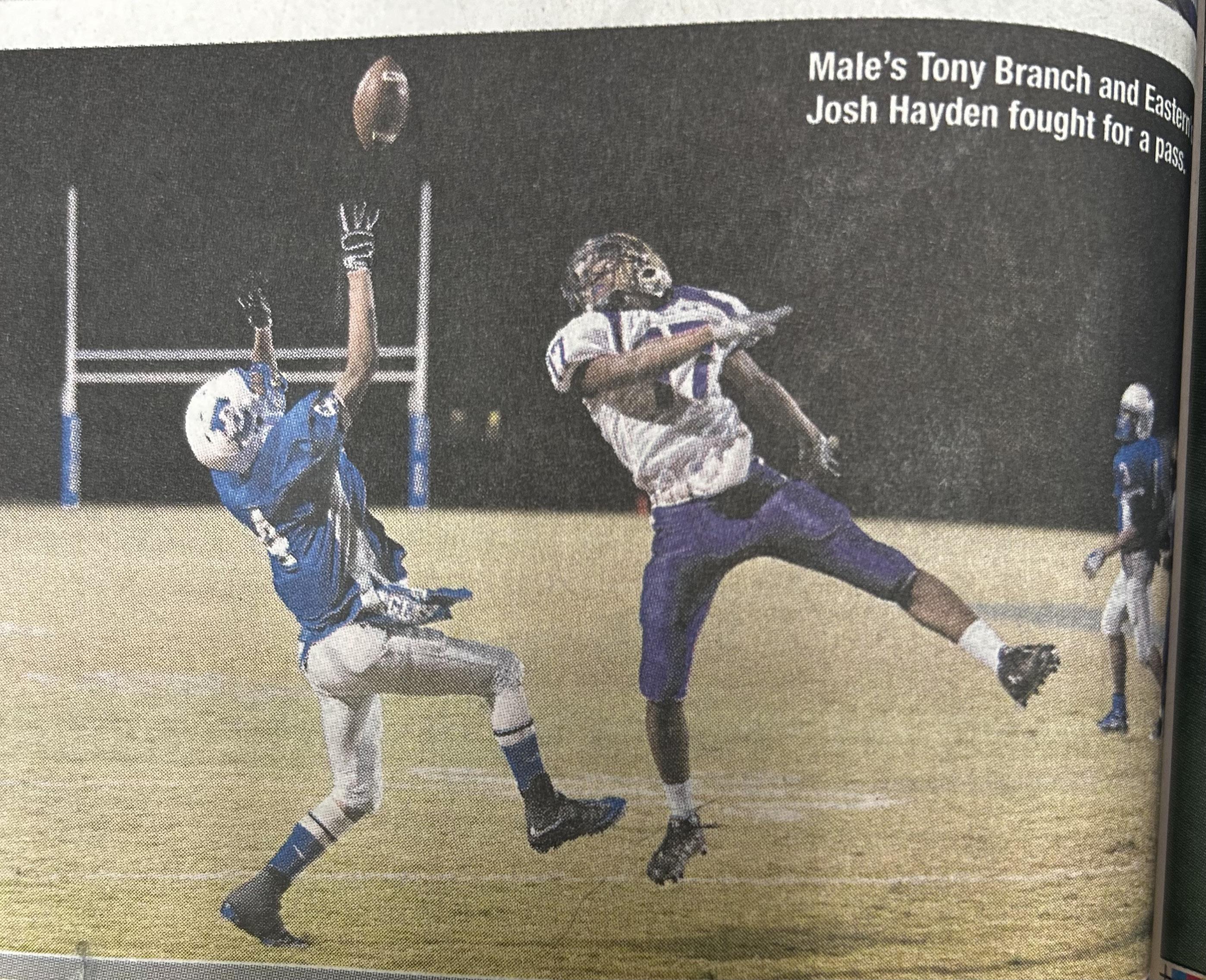



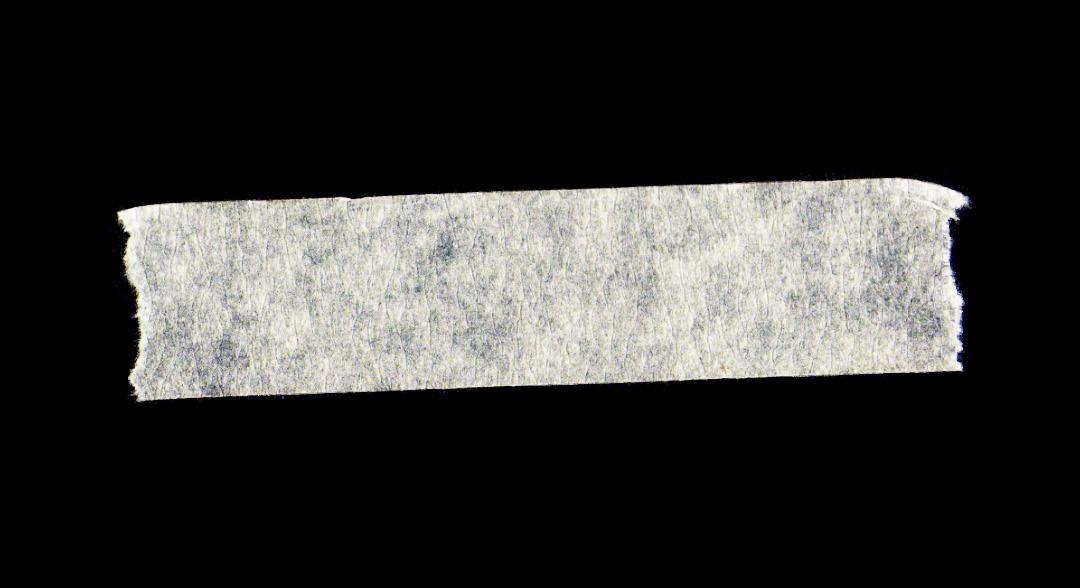

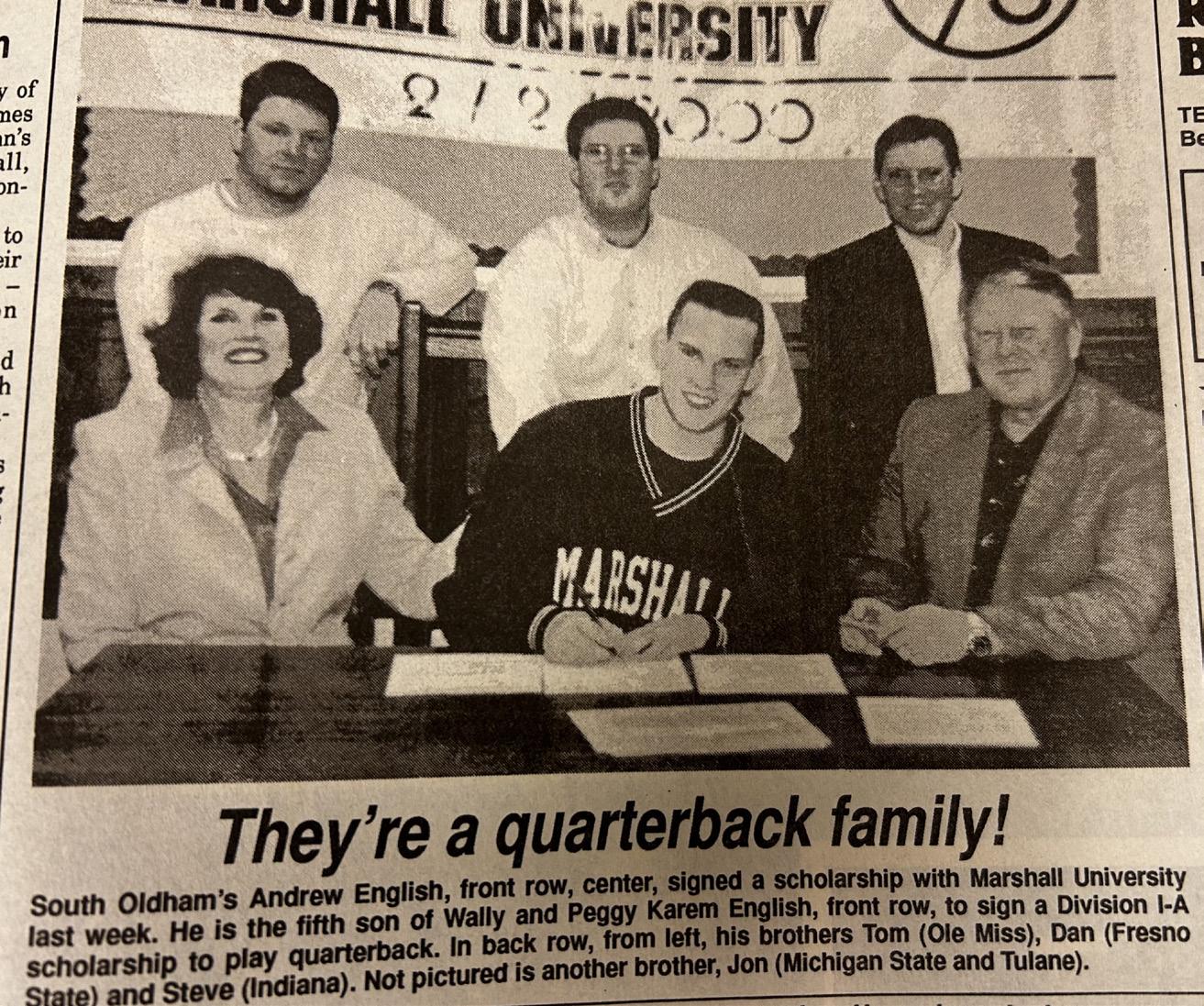







In which the sports scribes talk about what they’re reading this summer Bill and Russ’ Excellent Conversation:
By: Bill Doolittle and Russ Brown
Photos By: Matt Johnson
RUSS -- BILL , I hate to open our monthly chat on a downer. But the 2024-25 college basketball season isn’t going to be quite as much fun for me -- and I am sure for many others -- as it has been for years because we will be denied the pleasure of listening to the legendary Bill Walton on the telecasts. Colon cancer claimed the big redhead and his wonderful wackiness at 71 on May 27.
BILL – Well, Russ, you warned me you wanted to talk about Bill Walton. And his book. So why don’t I just go get a sandwich and you can hold forth. When you wear yourself out, we’ll talk about some of these other books. You’re up!
RUSS -- There has been nothing in the sports world to compare with Walton, whose trademark lines were frequent references to the Pac-12 as “the conference of champions” and his dismissive description of all other leagues as “those truck stop conferences.” I wonder what name Walton would have come up with for the Big Ten now that his beloved UCLA is parked in one of those spaces.
No matter which teams were playing, if Walton was the analyst/color guy, I would tune in for the goofy philosopher’s rambling hyperbole and interesting observations on love, friendship, world history, music (he was a dedicated Deadhead who estimated he had attended nearly 900 Grateful Dead concerts), geography, John Wooden life lessons, nature, UCLA athletics and occasional hoops nuggets. He never disappointed and he always left me wanting more.

Walton was not only widely considered one of the top five basketball players of all-time, but he was admired by virtually everyone who knew him. I was lucky enough to have known him and Coach Wooden through my association and friendship with former University of Louisville coach Denny Crum, who of course played and coached for Wooden and recruited Walton. But I met them before that because UCLA was a part of the first Final Four I covered for The Courier-Journal, in 1973 in St. Louis.
Sitting on press row next to the UCLA bench and the beautiful Bruin cheerleaders -- a sampling of those ‘California Girls’ the Beach Boys sing about -- I was in awe for one of the few times in my career. I was among Hollywood royalty, privy to the UCLA mystique up close.
The Bruins defeated Indiana and its second-year coach, Bob Knight, 70-59, in the semifinals, then routed Memphis 87-66 in the championship game with Walton hitting an historic 21-of-22 shots while scoring 44 points. It marked UCLA’s seventh consecutive championship. (Walton, no fan of Knight, describes the coach during the semis as “spending most of the time yelling, cursing, screaming and drawing attention to himself.”)
BILL – Sounds like he was able to type as well as he talked.
RUSS – Yes. Walton’s larger-than-life personality and skill as a storyteller makes his 2016 memoir, Back From The Dead: Searching For The Sound, Shining The Light, and Throwing it Down, such an engrossing, entertaining read.
Walton endured chronic pain while suffering through a lifetime of injuries that included 39 surgeries, including a catastrophic spinal collapse in 2008 that left him unable to move except crawl, and contemplating suicide. The book spotlights his eclectic interests, his UCLA and NBA careers and, naturally, his relationship with Wooden. It’s a dramatic story.
One story Walton relates that Crum frequently enjoyed retelling involved his recruitment of the San Diego redhead. One morning Crum walked into Wooden’s office and said, “Coach, I’ve just come from watching the greatest high school basketball player I’ve ever seen. . .” At the time, Lew Alcindor (later, Kareem Abdul-Jabbar) was starring for UCLA, which was on its way to its third straight national title and fifth in six years.
As both Crum and Walton tell the story, Wooden got up from his desk, closed the door and advised his assistant, “Now Denny, don’t make a stupid statement like that. You’ve recruited other guys who were probably a lot better than Bill Walton. San Diego has never even had a Division I player that I’ve ever heard of. People are going to think you’re crazy, Denny.”
But Crum convinced Wooden to accompany him to watch Walton play, and the rest is history.
BILL – Good report, Russ, though a bit lengthy. As you can see, a lot of my books are from decades ago – but read even better with age. Especially baseball books.
One thing to note is that many baseball biographies, and “autobiographies,” are penned by skilled sportswriters hired by major publishing houses to produce books on sports stars. A lot of people turn up their nose at that. Looking for the dirt, I guess. But I’m much more interested in the baseball than hanging out dirty linen.
Which is what makes The Story of Pee Wee Reese, by Gene Schoor, such a good book. It’s kind of aimed at younger readers, but the baseball is real. Harold “Pee Wee” Reese was born in nearby Meade County, and grew up in Louisville -- where he got his nickname Pee Wee not from his regular-sized size, but as a marbles-shooting champion. Reese played for the high school state champion Manual Crimsons, and signed straight on to the professional Louisville Colonels. Boston Reds Sox owner Tom Yawkey then bought the Louisville club – the whole team -- just to get Reese. But that didn’t sit well with Boston player/manager Joe Cronin, who didn’t care for a talented young shortstop coming to the Sox behind him. So, in a typical bone-headed Boston move, Reese was sent along to Brooklyn, which pretty much sat third chair behind the New York Yankees and New York Giants. But not for long!

Schoor’s book was published in 1954, as Reese and the Dodgers were reaching the peak of their “Boys of Summer” fame. After he retired, Reese partnered (or podnered) with Dizzy Dean broadcasting Saturday afternoon games on NBC. He was also the factory representative and ambassador to baseball and golf for Hillerich and Bradsby. And he was certainly one of Louisville’s all-time favorite citizens until his death 1999.
There’s so much revisionist history going around today, and one good example is with Jackie Robinson. Reese, of course, was Robinson’s teammate on the Brooklyn Dodgers. Before buying into all the new stuff being peddled by persons who weren’t there to dismiss Reese’s role in Robinson’s acceptance into major league baseball, I suggest readers take in The Pee Wee Reese Story. And find out more in Robinson’s own book, Breakthrough to the Big Leagues.
RUSS – I like how your dusty old paperbacks seem to held together with scotch tape and bubble gum.
BILL -- From the same era, Hank Aaron, who preferred to be called Henry, but didn’t insist on it, collaborated with Atlanta JournalConstitution sports columnist Furman Bisher for Aaron – which chronicles Aaron’s rise from poor beginnings in segregated Mobile, Alabama to baseball stardom. The book does document the horrific racial badgering and constant death threats Aaron faced in his pursuit of Babe Ruth’s 714 career home runs record. But Bisher, a genuine newspaperman, keeps the baseball going through all -- just as Aaron never wavered through pennant drives that kept the Milwaukee (and later Atlanta) Braves in the thick of things.
Interesting perhaps to fans today, Henry Aaron and Willie Mays both began pro baseball as teenagers, playing with grown men. Mays played with his dad, Kitty Kat Mays, for the Birmingham Black Barons in the Negro Leagues. Aaron signed with the Indianapolis Clowns, a dusty-bus, barnstorming team. Aaron thought it was funny that the whole time he played for Indianapolis, the Clowns never got to Indiana. Quickly making it to the majors, Aaron and Mays compiled decades of stardom. Mays was a National League All-Star 20 straight years, Aaron 21. Though his home run record has since been bested, Aaron remains baseball’s all-time Runs Batted In leader, with 2,297 RBI.
RUSS -- Walton’s book is one of two I’ve read recently that I enthusiastically recommend. The other is Vukovich: The Man Who Wouldn’t Lift. As the title page notes, it’s the story of the greatest race driver of his era, a grim, hard-charging product of an impoverished and difficult childhood. He was called “the man who wouldn’t lift” because he kept his foot on the throttle deeper into the turns than other drivers.
Bill Vukovich dominated the Indianapolis 500 in the early 1950s during some of its most storied years. After honing his skills on the West Coast, the Fresno, Calif. native made an impact in only his second start at Indy. In 1952, starting in the middle of the third row, he quickly moved up to take the lead, and stayed in front for 150 laps before steering problems knocked him out on the 192nd of the 200 laps. He proved that performance was no fluke by winning the race in 1953 and 1954.
Vukovich was favored to win his third straight 500 when he was killed in a chain-reaction crash while holding a 17-second lead on the 57th lap of the 1955 race. Exiting the second turn onto the backstretch behind three slower cars, a wreck pushed a car into his path. He couldn’t avoid it, his car went airborne and cartwheeled multiple times before coming to rest upside down and bursting into flames. Vukovich was killed instantly at the age of 37.
The book is an engrossing tale not only of Vukovich’s toughness, bravery (some would say recklessness), generosity and complex personality, but the culture, camaraderie and rivalries that exist among drivers, as well as their relationships with their pit crew and mechanics. Overall, it paints a vivid picture of the 500.
The book itself has an interesting history. Angelo Angelopolous, a former sportswriter for the Indianapolis News who died of leukemia in 1962 at 43, is credited as the author. However, that’s only part of the story. Angelopolous had a contract to publish the book in 1960, but for unknown reasons that never happened.

Decades later, a nephew found the rough, typewritten draft of the unpublished manuscript, with numerous penciled-in corrections and entire paragraphs crossed out. The nephew approached Mark Montieth, a well-known Indianapolis journalist and author, and Montieth agreed to take on the chore of finishing the book. He says it turned out to be a much more challenging project than he envisioned. But Montieth’s stellar efforts paid off with a fascinating look at Vukovich, and an iconic race full of colorful characters.
BILL – Well, Russ, I know you’ve got more books, and I’d love to get to The Boys of Summer, by Roger Kahn, and The Summer Game, by Roger Angell. And the back-to-back books by Cincinnati Reds relief pitcher Jim Brosnan: The Long Season and Pennant Race. But I will settle for just one more.
Leo Durocher, the loud, abrasive and smart baseball player and manager, who played shortstop for the Cardinals, managed the Dodgers against Willie Mays, and the New York Giants with Mays, but was suspended from baseball while managing the Cubs because he associated with gangsters, and maybe also because he married movie star Laraine Day and didn’t mind squiring her around late at night at questionable night clubs during baseball season – yes, that Leo Durocher – wrote (with writer Ed Linn) one of the best baseball books ever in Nice Guys Finish Last. Leo’s book is chocked full of stories, including the famous 1934 World Series, in which, among other things, baseball commissioner Judge Kennesaw Mountain Landis removed St. Louis slugger Ducky Medwick from the seventh game of the Series in Detroit, “for the safety of the crowd.”
My favorite Durocher tales star pitcher Dizzy Dean, Leo’s colorful teammate on St. Louis’ Gas House Gang. “Dizzy Dean,” Durocher said, “was what Babe Ruth had been to the Yankees, our Big Man and good luck charm. The guy who would tell you what he would do when all the marbles were on the line, then go out and do it.”
Dean held out signing with St. Louis at the start of the 1934 season, not for his own small salary, but for a better deal for his brother Paul Dean, who was coming on to the club as a rookie pitcher. Durocher says the whole thing got settled for maybe an additional $500 from the pecunious Cardinals, and the brothers were pleased. Diz predicted “Me and Paul” would win 45 games, which was, of course, a ridiculous brag – until Dizzy won 30 games and Paul 19.
On a September afternoon in Ebbets Field in Brooklyn, Dizzy beat the Dodgers with a three-hitter in the first game of a doubleheader. Then Paul won the second game with a no-hitter, lifting the Cardinals toward first place and the pennant. “The only thing that makes me mad,” Dizzy said, “is I didn’t know I hadn’t given them any hits in the first seven innings. I should have knowed that. Then I’d really have breezed them in there and we’d both have had a no-hitter.”





By Alisha Proffitt
Photos by Matt Johnson
From a passerby’s perspective, Barret Avenue seems pretty quiet on a Tuesday evening. The shops that speckle the avenue have closed up for the day, and foot traffic has died down. If you dig a little deeper beneath the surface you’ll find a band of misfits and one hell of a good time.
Despite what its name implies, Louisville Vintage Motorworks, founded in 2009 by Logan Robison, Joe Phillips, and David Steube, stopped being a vintage motorcycle community almost immediately. People just showed up on what they had. “It’s never been about a show bike thing, you’d get more attention bringing a bike that needed work than one that was fully outfitted and ready to go. Because half the parking lot will work on your bike while you’re here,” laughed James Kemp, one of the group’s long-time members.
With no formal membership, whoever shows up is welcomed with open arms. Scanning over the parking lot of Barret Bar & Grill, which has been hosting Bike Nights for nearly 10 years, you’ll see everything from Triumph, Harley’s, and adventure bikes to Vespas and Ruckus’. Two Stroke Tuesday, initially started by “Two Stroke” Jo Adams and Nick Karem to connect area dirt bike enthusiasts, has, over time, evolved into a consolidation of bike nights, broadening the community and bringing them all together in one space. “If you want to see really, really bizarre stuff. Stuff that you never see at any other bike night, this is where to go.” says Mark Gingerich, who regularly attends Two Stroke Tuesday “It’s such an inclusive group, it’s such an inclusive night. You just see stuff that you never see. You see Triumphs, Honda Sprees, little tiny mopeds, great big CVO Road Kings, old Sportsters, It’s just crazy.”
The group itself is as diverse as the bikes they ride. “It’s not what you ride, it’s also a lifestyle,” according to Harald Uwe Kern, artistic director of The Louisville Ballet and member of International Scooter Club The Vulcans. “There’s so many things that bind us together, it’s not just what you ride, it’s more than that.” And it is that sentiment that has drawn people to Louisville Vintage Motorworks from all across the globe, with their Facebook group now connecting over 4,000 people. “We’re a bunch of misfits, it’s the island of misfit toys” another long-time member, Rob Haynes, joked, and it’s true. There is a genuine sense of care and support for one another, much like a family. Louisville Vintage Motorworks has been invited to several American Motorcycle Association events as well as honored as a featured group and Friend of the AMA. They coordinate trips together, celebrate holidays, and organize Toy Drives, businesses such as Retro Wrench have been birthed from this group, they even grieve together on memorial rides.
Another way in which they look out for each other is by advocating for motorcycle safety and impressing those practices on fellow members. “We tend to try to make sure that people don’t get left behind, that their bikes are fine. If they’re newer to riding, and we can spot them because they’re a little more timid, we’ll watch them in the back to make sure that they don’t try to ride above their skill level and hurt themself.” says Richie Arndt. Richie is the organizer behind the 80vDualSport Youtube channel and MotoMonday, a local bike riding meetup that occurs every single Monday of the year- rain or shine.

Motorcycle safety isn’t exclusive to motorcyclists, it is something that everyone operating a motor vehicle should consider before commuting, especially during warmer months when there are more motorcycles on the road. You can save lives and contribute to a safer driving environment for everyone on the road by following these safe driving practices:
Checking blind spots
Using turn signals
Avoiding distractions
Keeping debris, such as lawn cuttings, off the road.
Maintaining a safe following distance behind motorcycles.
Leaving adequate stopping distance in traffic to avoid rear-ending a motorcycle
Watching for signals. Motorcyclists often use hand signals in addition to mechanical signals, so be familiar with these gestures.
Respecting lane space. They need the full width of the lane to navigate safely.
Maintaining a steady speed helps motorcyclists predict your actions and avoid abrupt stops.
Educating yourself. Consider taking a motorcycle awareness course to better understand motorcycle behavior and safety needs.
If you are interested in learning more about Louisville Vintage Motorworks, you can join them online in their Facebook group or in person at Barret Bar & Grill every Tuesday at 6pm.

March 12, 1970- June 14, 2024
Louisville Vintage Motorworks lost a member, Brian Cahill, just before this article was written. Brian was one of those people that you wish everyone could meet. He was an amazing father, human, and friend to everyone he met. He was a tradesman, a plumber to be exact, and in his line of work, he met a lot of people. Brian’s ripple effect will be felt for a long time to come. It didn’t matter if you knew him for 10 minutes or 10 years, he would give you the shirt off his back. He had an incredible smile and an infectious laugh. He was the guy dressed in the Santa suit for the toy drive that we have during Christmas, riding a bike, or in the sidecar delivering toys. Cahill was undoubtedly one of the greatest misfits of all, he embodied everything that it meant to be the greatest person that he could be every day. He had such an enthusiasm for motorcycles and being part of Louisville Vintage that you couldn’t help but be affected by it. Whether you had a project bike or you didn’t have a bike at all, he was always there to coach.
You will always be one of us, ride in peace my friend, until we meet again!
- Louisville Vintage Motorworks, Two Stroke Tuesday, Moto Monday, and BourbonCity Vespa Club send our sincere condolences to Brian’s family and friends. Especially Jenna, Xenovia, Sean, and Sophia.





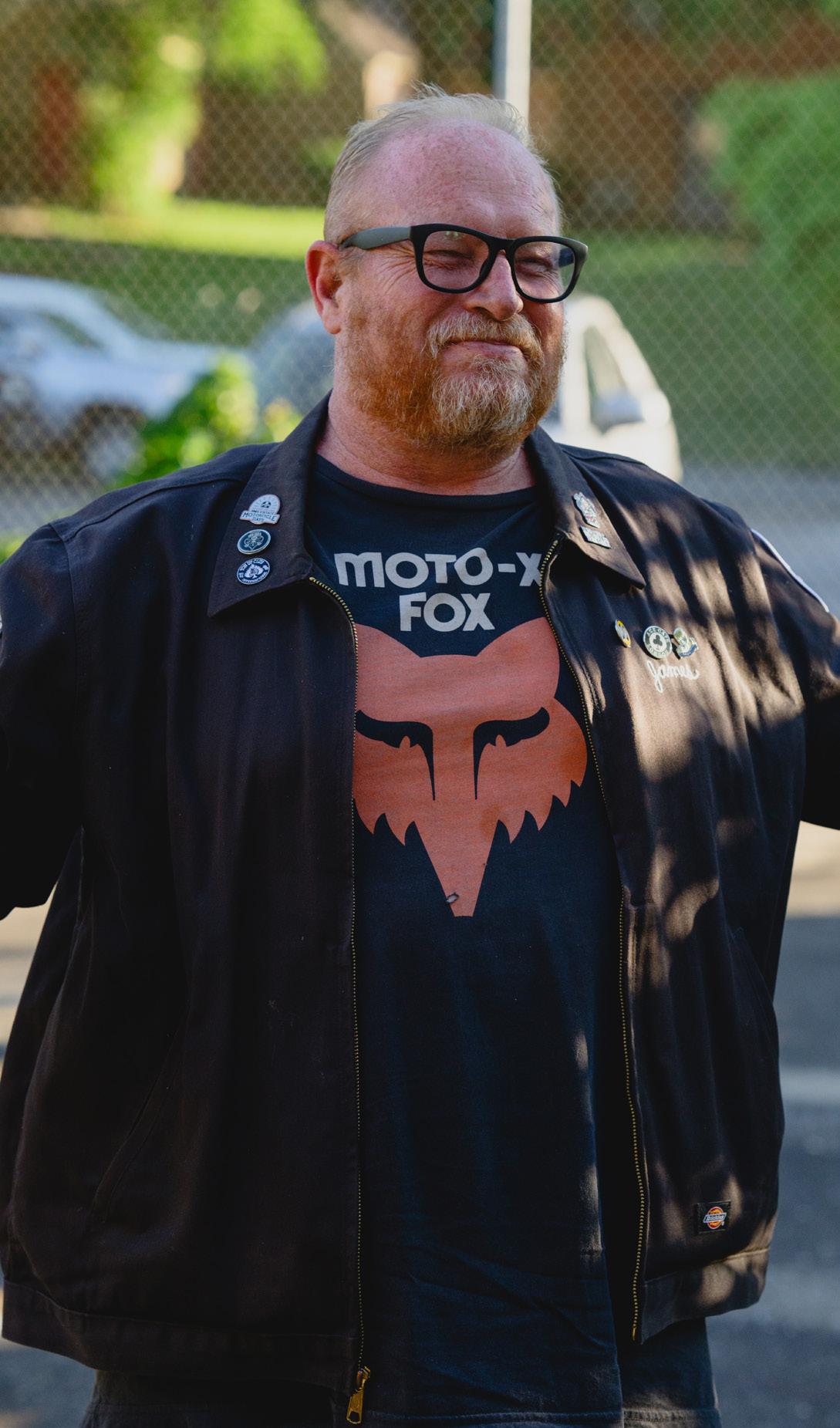


















By: Roger Baylor
Photos by: Roger Baylor& Matt Johnson
In 1984, I was half-heartedly watching the Summer Olympics on television when one of the American athletes sidestepped the reigning Cold War patriotic mood, remarking to a broadcaster that he considered himself to be “a citizen of the universe.”
This sentiment made an abiding impression on me, primarily because it informed a growing interest in beer. After all, there was very little of interest about American beer at the time, and my taste buds were dallying abroad.
I had acquired an entry-level taste for the usual beer suspects, but boredom soon set in. Praise for Schlitz or Stroh’s meant only that they didn’t taste quite as bland and indifferent as their peers – and I wanted to know why.
History provided an answer. America’s post-Prohibition marketplace was stripped bare of competition, producing a handful of monopolistic brewing monoliths that printed money by manufacturing beer as a standardized commodity to be floor-stacked in supermarkets, while the remaining smaller family-owned legacy brands tried desperately to stay alive amid economies of scale-tilted heavily against them.
Fewer than 100 American breweries were in existence when I finished college in 1982, and brewing industry analysts predicted that by 1990 there’d likely be only two or three huge brewing conglomerates left to share the entire American market. Nothing personal, they said, it’s just capitalism.
Except that I did take it personally, and I responded by looking outward, to that wider beer universe – hence the resonance of the Olympian’s words. After all, capitalism also allowed for imported beers, and the choice was simple: peace with Light, Lighter, or Lightest, or opt for Guinness Stout (Ireland), Bass Pale Ale (Great Britain) or DAB Dark (Germany).
My evolving position was unequivocal. Brewing had retained its traditional artisanal status in America until Prohibition, which catastrophically devalued beer as art, if not commerce at the stock exchange. However, brewing traditions survived at least somewhat intact in the Old World, and while imported beers of the period admittedly weren’t always the freshest, even when muted by age they spoke to broader aspects of beer culture missing here at home.
As a passport-carrying beer citizen of the universe, I drank European whenever possible, right up until something entirely unexpected happened, because as it turned out, there were other Americans just as stubborn as me. By the mid-1980s my compatriots on the coasts, and in places like Colorado and the Upper Midwest, were breathing life into a revival of Old World ways in beer and brewing.
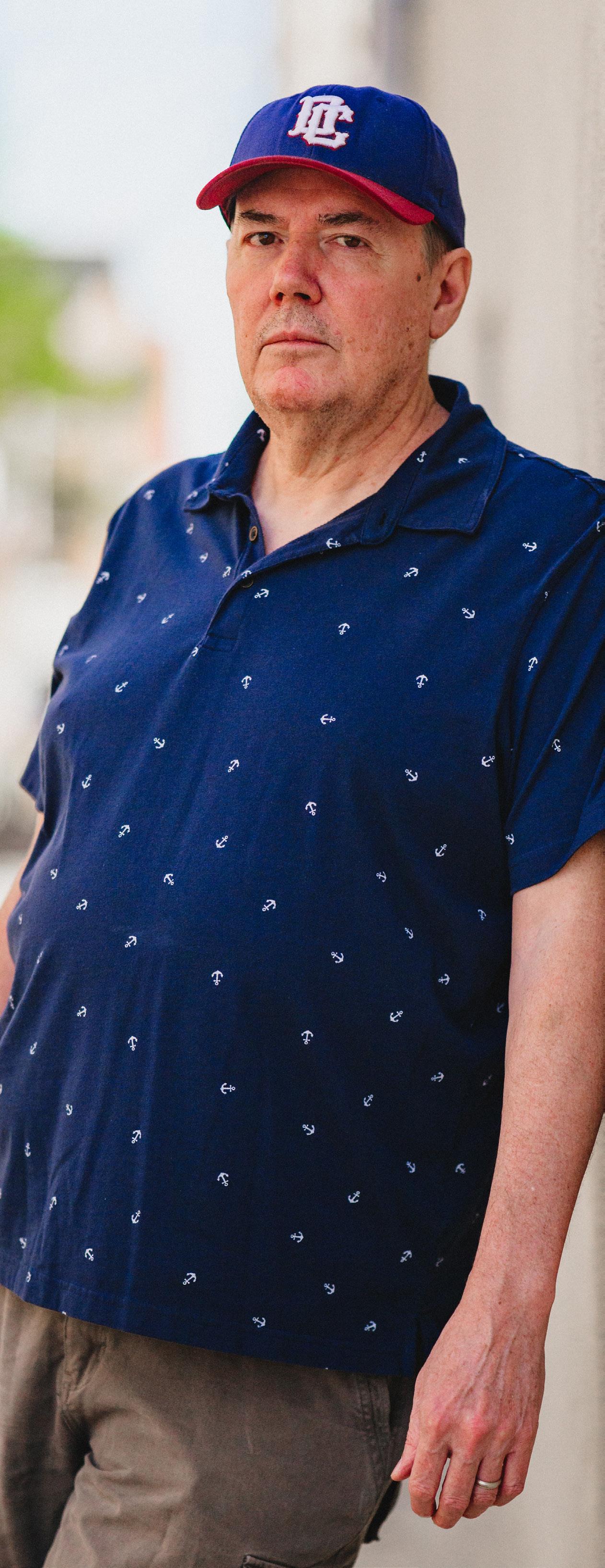
These revolutionaries were determined that our nation might have great beer again, and I found myself joining their ranks after stumbling serendipitously into the beer business, first as a package store clerk and later by joining the Southern Indiana business now known as New Albanian Brewing Company.
As a purveyor, I sought to bring a wider universe of beer to my hometown, bonding with folks who’d traveled or homebrewed, and sharing books written by Michael Jackson, an English journalist known as “The Beer Hunter.” During the 1990’s, “microbrewing” at last became established here in Louisville, most notably at the original Bluegrass Brewing Company (BBC) in St. Matthews, which became my “local” even though I lived 15 miles away in Indiana.
BBC and other American beer makers subsequently proliferated, recapturing the grassroots essence of brewing and absorbing European lessons. Three decades later, they’re paying it forward. I’ve visited cities in Estonia, Finland, Italy, Greece, Poland, Portugal, Malta, Germany and France in recent years and found American-style IPAs, kettle sours and pastry stouts in each –and not only at specialty beer bars, either.
I can be as patriotic as the next citizen of the beer universe, and vindication is sweet upon surveying the 9,500 or so American breweries operational in 2024. It seems the internationalization of Planet Craft Beer (now the ideas travel both directions) has vastly exceeded Karl Marx’s vision for communism’s potential reach, if still lagging behind the global ubiquity of atrocious fast food burgers.
Still, the fact that beer and burgers cross paths in places like Uruguay or Sri Lanka is something to celebrate. Or is it? Although brewing dates to the very dawn of civilization, it has become associated with Western history these past few centuries. But what about the rest of the beer universe?
Consider these Indigenous beers: Chicha, Tiswin, Mbege, Umqombothi, Pombe, Chagga and Tesguino. Tiswin is fermented from maize or saguaro cactus in the Sonoran Desert. Bananas are fermented by the Chaggas and Tanzanie peoples to make Mbege, and Umqombothi is South African maize and sorghum beer (pombe, made from millet, is similar).
Granted, brewing as most of us know it today derives from methodologies perfected in Europe, and the “universals” that beer enthusiasts like me were striving to explore 30 years ago are, in retrospect, more painfully narrow than we understood. There was much we didn’t know, but now we do, and excuses for failing to broaden craft beer’s reach beyond its majority white male base are long past their sell-by dates.
Craft beer has been a rousing success, and yet the genre too often remains confined within a limited social geography, even as we accept that in nature, diversity is a certain prerequisite for survival. This is a fact that America’s 9,500 breweries (and counting) ignore to their ultimate detriment, and my regret for having possessed an imperfect understanding of diversity’s significance for beer during my period of brewery ownership is the reason why I’m writing these words. I worry that I didn’t do enough.
The Olympics return on July 24, reminding me again of my universal beer citizenship. With or without a beer in hand, I propose that diversity, equity and inclusion are goals worth pursuing in everyday life as well as beer business plans. Beer is about people, full stop; let’s all enjoy better beer, and make this tent bigger and more welcoming.
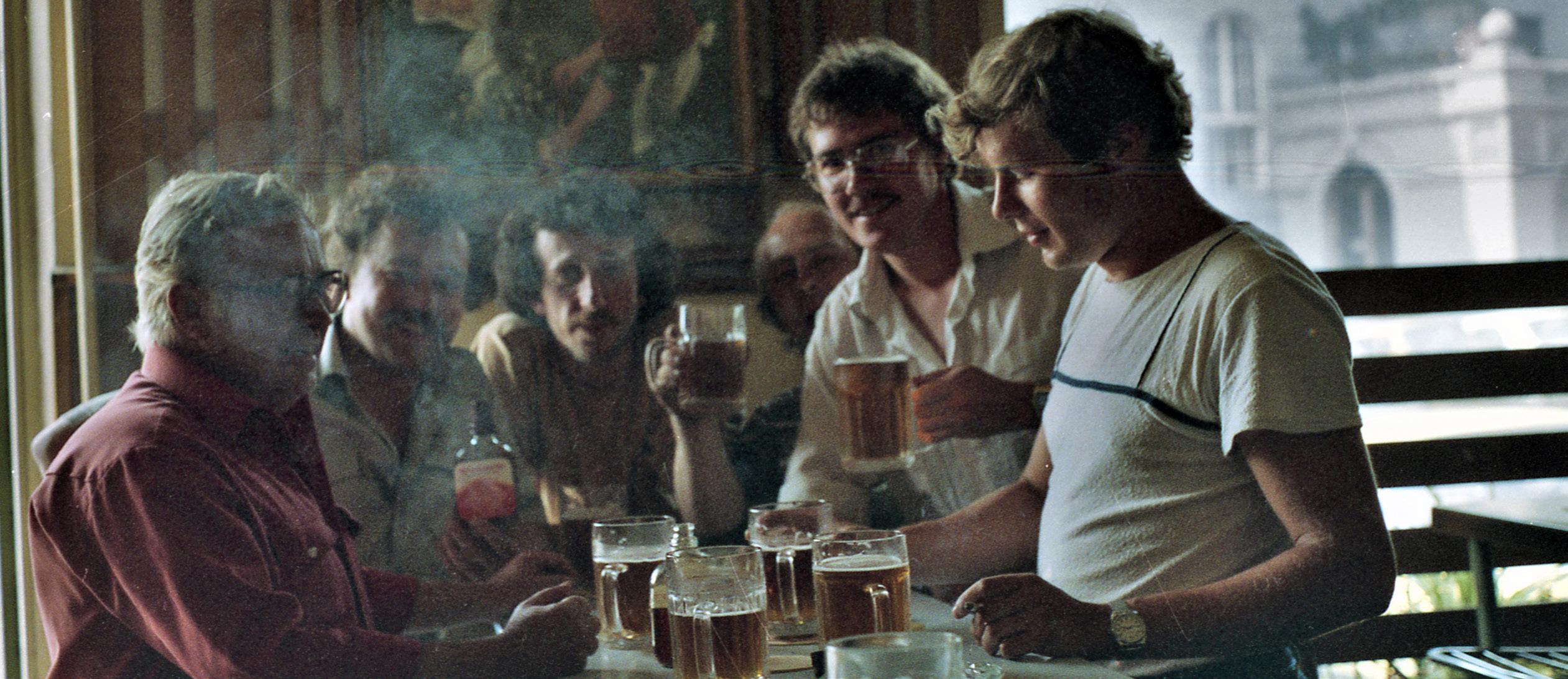





By Lisa Hornung
Photos By Matt Johnson
If you start talking to Waller Austin about art, you’d better settle into a comfy chair. The Louisville-based artist for the past 30 years knows a lot and loves to talk about it.
He’ll tell you about the art he makes, his process and medium (mostly Crayola crayons), and he’ll give you a full-on art history lesson about his favorite artists and the ones he likes to “copy.”
His art is unique, thought-provoking, and sometimes jarring. Some of his recent work highlights gun safety for a pretty traumatic reason: His wife, Whitney, survived a mass shooting at Fountain Square in Cincinnati in 2018. Whitney Austin was shot 12 times and survived. That horrific event inspired the Austins to create an organization focused on responsible gun ownership and ending gun violence, lobbying for common-ground gun legislation: Whitney/Strong.
From that trauma came the desire to make smart change. “We do both community intervention and legislative work, both here in the state of Kentucky, also in Ohio, we’ve actually done partnerships helping the people in Tennessee and in Missouri, and we’ve done big national work, too,” Austin said. “We were actually a big part of getting the Bipartisan Safer Communities Act passed in June 2022. Our federal work began with lobbying for the Manchin-Toomey bill of 2019, which didn’t pass. That was the universal background checks bill.”
From the failure of that bill, the couple learned a lot about what people want and are willing to give, leading to the later success of the BiPartisan Safer Communities Act. “So, our whole family and our two kids were there, and it was just, you know, really unbelievable to see this gun safety law being passed after 28 years of nothing. So, with that, we’re very hopeful and grateful for people that will hear us.”
These days, Austin is shifting his focus back to his art. He said he is trying to do about 30% Whitney/Strong and 70% art. “I’m moving back across the line and into the art production as we speak,” he said.
Austin has had several professions in his life -- banker, house flipper, and more -- and realized he wanted to get back to his passion. So he enrolled in the School of the Art Institute of Chicago, where he studied art alongside students more than 10 years his junior. But, as he said, “It was just really crazy, I mean, really a surreal experience. But it was a lot of fun. And I was very productive; I got a whole lot of work done. And I’d never taken any art classes before. I wasn’t really taking studio art classes so much as art history, and kind of just learning the language of art really so that I could defend the work that I made.” From there, he entered graduate school and got an MFA at Washington University in St. Louis, before moving the family back to Louisville in 2018, where he taught art and art history for four years at Jefferson Community & Technical College.

Austin says he copies other artists, but not in the way you might think. He’s interested in certain artists, and he follows their style but with his own twist. Some artists he’s influenced by include Chuck Close, Jeff Koons, Henry Darger, and many more.
While Austin uses Crayola to make art, it’s not in the way you would think. He melts the crayons and uses them to paint. He said he began when traditional art supplies began to make him ill, and he realized that crayons are non-toxic.
“When I was at art school in Chicago, I experimented with 25 different brands of crayon; so Mexican crayons, Indian crayons, Chinese crayons, crayons from Thailand,” he said. “You’ve got your Up&Up crayons that are from Target, I can’t remember what the Walmart crayons are called. But ultimately, I found that Crayola crayons are the best because they just have the highest pigment-to-wax ratio. So they have a much higher melting point. They’re much more stable, and the colors are more vibrant.”
Austin is still working on Whitney/Strong while he raises a family and remodels their old home in the Highlands. “I am very interested in making art and, obviously, making art and having a family and a mortgage requires collectors and investors.”
Many people in the greater Louisville area buy his art, but “Louisville is a pretty conservative town,” he said. “I don’t do a lot of pastoral, bucolic scenes, you know, I don’t do a lot of horses. I actually did an anthropomorphic horse. I don’t know if you’ve heard of ‘Bojack Horseman.’ It is currently on display at the Galt House.”
Austin updates his website quite regularly, www.walleraustin.com, and many featured works are available for sale.
“It’s also just good for your psyche, too, that people appreciate what you do. It keeps me making these things. Everyone should have original artwork on display in their home and or office.”






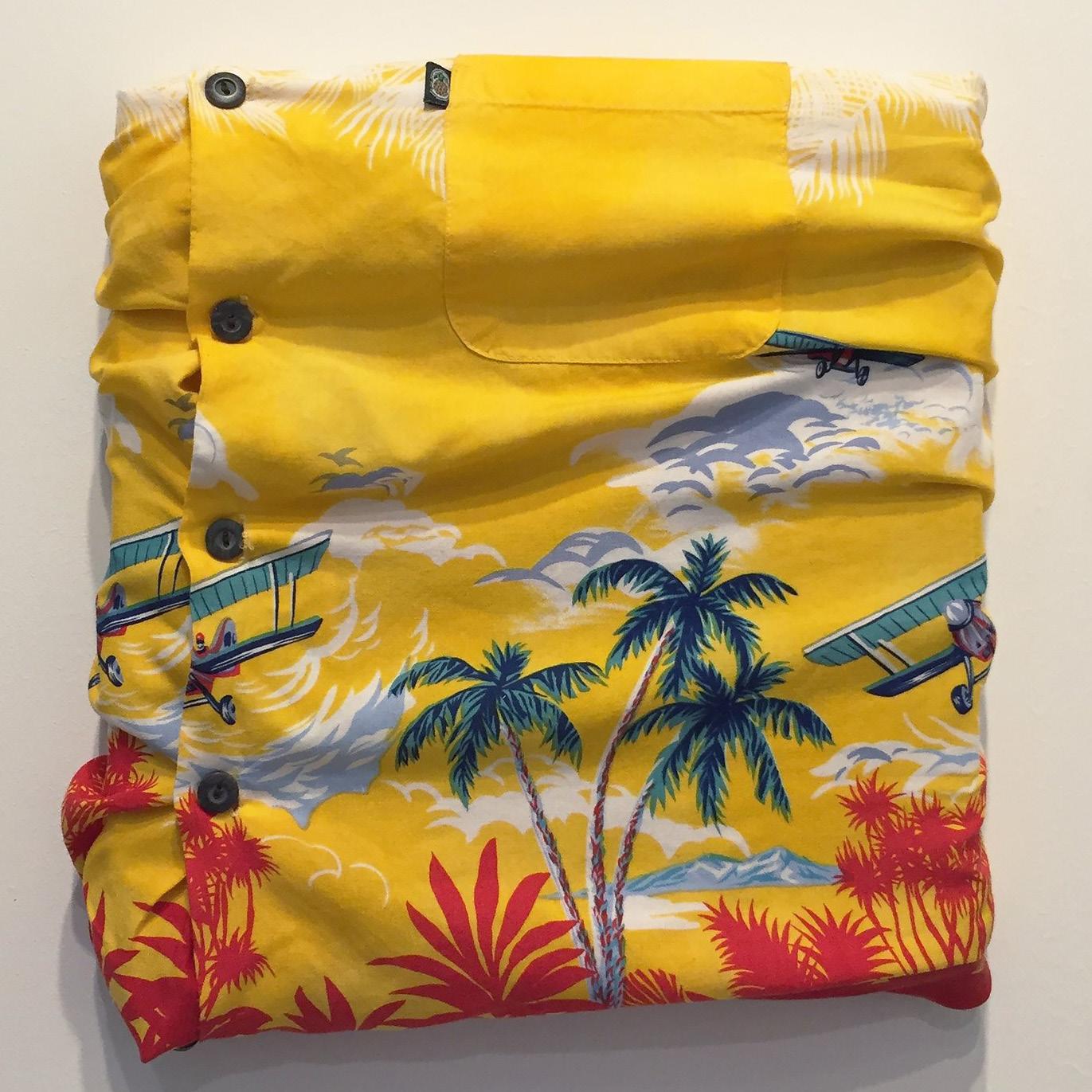









By Bill Doolittle
Photos By Duckworth & John Nation
Filmmaker Morgan Atkinson plunks us right down at moment the Ohio River changed. It happened – and happened fast – when the land beyond the Alleghenies was opened for settlement and people poured down the Ohio to find new homes, open new businesses and create new lives.
Before that, the river had simply flowed undisturbed for thousands of years. Not doing much of anything. Just cruising along, low and slow in some seasons, then flooding fast and wild in others. But, Atkinson notes in his new film This is the Ohio; Life Death Rebirth of The Beautiful River, the newcomers – ethnic-European Americans – had other plans. They thought the river could be controlled. And put to great use.
And so, This is the Ohio opens with a crowd of politicians and dignitaries ringing a big riverboat bell to celebrate the completion of a chain of 52 dams linked along the 981 miles length of the Ohio River -- from Pittsburgh to the Mississippi River –effectively opening the river for every manner of commerce.
“Sure, they’re happy – and who can blame them,” notes the film’s narrator Andy Pyle. “Controlling the Ohio has been the goal since the first European explorers came upon it in the 1500’s.
“Of course, indigenous people had been living along the Ohio for many centuries, and controlling the Ohio wasn’t on their agenda. They pretty much let it be. They fished from it, and traveled on it, and worshipped it. and called it the Beautiful River. They had no plan for controlling it – but the newcomers sure did.”
And with that, the motion picture leaps into motion.
Tinkly banjo and riverboat music shifts to a fast snare, in quick time, taking us right up to today – with old black and white newsreel film jumping straight to vivid color, with millions of gallons of water shooting through modern dam portals – all signaling a marvel of civil engineering is about to be revealed.
And it is. Today, the original 52 dams in the chain have been consolidated to 20 huge dams and locks controlling billions of gallons of water to keep zillions of tons of cargo moving. Long, deeply-loaded barges travel America’s industrial heartland --and they don’t stop.
“This job is 24 hours a day, seven days a week, 365 days a year,” says Jay Rickwood, of the U.S. Army Corps of Engineers, which manages the massive system of locks and dams on the Ohio. “In my mind I see the river as an Interstate. It’s very utilitarian. And my job is to see that commerce keeps moving at all times.”

Compared to highways, the riverways are “almost invisible,” says Tyler Kelly, author of the book Holding Back the River.
“Most Americans have very little interaction with rivers,” Kelly explains. “Even people who live beside the river. They know there’s a barge here and there, but they don’t understand where the barge is coming from, where it’s going, what it’s carrying. Not to mention everybody who lives inland that thinks everything travels on a semi-trailer truck. You are on a living river that really is not inclined to stay where we tell it too. It’s really quite remarkable.”
Remarkable to Atkinson, too.
“As I began to get deeper into the project, it became very clear to me how essential the river is for our economy, not just in America, but in the world,” says the Louisville filmmaker. “So you’re not going to get rid of barge traffic. You’re not going to shut it down and make it a recreational lake. But you do want to have the other aspect to it, too – the balance between business and recreation is important.”
And he found it. Just as he had discovered the business side of the of the Ohio River story, Atkinson also found the natural side the story. And it is just as remarkable.
On a rocky outcropping at the edge of the river we meet Rev. Lee Payne, president of Louisville’s Audubon Society, and a director of the Beckham Bird Club, who is doing his favorite thing – talking about birds.
“The birds that are drawn to the river, it’s just amazing,” Payne says. “To see all the birds from all over the world that are coming to our river, to rest, or to fuel up.”
And the colors the birds bring to the riverway astonishes the birder. “Colors you can’t even see in a painting, colors that are just magnificent.” Right here on the Ohio River. Today.
“It’s thriving, without a doubt,” says Payne. “There’s always a new species of bird showing up at the river. All the time. More than 250 species.
“Why are we getting them?” he asks, rhetorically. The answer is easy to spot. The camera finds a heron, standing in the shallows, pointing a long beak into the water and coming out with a fish. “You can sit here at the river and watch all these raptors and birds catch all these fish, all day long.”
But who knew?
“The rivers in some ways have a public relations problem,” says Kelly, the author. “They’ve become so industrialized. They’ve become a place you don’t go to for fun. Because I’m not going to go to where there’s a burning chimney over there. I’m going to go to the park. To the lake.”
Atkinson’s film is kind of cool like that. It’s got barges AND birds.
It’s not a sob to old times, or a cheer for a modern era. Not a sledgehammer pounding polluters. Or a moral salute to naturalists ever fighting greed.

If it’s a surprise there are so many barges, it’s also a surprise how many fish birds can catch.
And maybe, this reviewer thinks, a clue to what direction the river may be headed. The film notes that a few decades ago the Ohio River was called the most polluted river in America. But we can see it is visibly better now. That bad old Big Government – maybe its regulations are making a difference. And the evil Environmental Protection Agency, maybe not really evil, after all. Or maybe we’ve all just decided not to dump so much stuff in the river.
One interesting thing about This is the Ohio is that while it’s a documentary, it feels more like a film. Entertaining. Light, at times. With splashes of color in what could have been a very gray picture.
There’s the story of a 19th Century artist who traveled the Ohio for two years, making sketches. Then he built a barn and painted out all his sketches on a long roll of paper (He said it was three miles long, when it was probably only a quarter mile long. But still.) Anyhow, the artist set the scroll up on end and mechanically scrolled it behind him on stage as he told his tales of the Ohio River. The show traveled all over, and supposedly was even seen by Queen Victoria, in London.
That’s a good one. And so is the story of a young French naturalist named Rafinesque, who traveled down the Ohio, seeking to document the birds of the region for an important new scientific book. Naturally, Rafinesque visited America’s famed naturalist and painter John James Audubon, in Henderson, Ky. Audubon told Rafinesque about an amazing new species he had discovered – a 10-foot long Devil-Jack Diamond-Fish, with scales so tough they were bullet-proof. Rafinesque included the bird in his book Ichthydogia Ohiensis, published in Europe.
Very interesting. But have you ever seen a 10-foot long Devil-Jack Diamond-Fish?
Neither had Audubon.
Atkinson says stories like that are the product of a happy working collaboration with narrator Andy Pyle, a Louisville actor (“who sounds the way I’d like to sound,” says Atkinson), and the film’s editor, Steve Hurst, a senior editor at Videobred.
“Rather than exclude anything that wasn’t strictly germane to the theme of the piece, we purposely tried to include the colorful things,” says Atkinson. “Steve found wonderful historic footage, like those people ringing the bell, and we just wanted it for the film. We’d say, that’s a great little nugget. We’re going to find a spot for it.”
The result is a 60-minute film, with about 20 minutes of stuff that might not be essential – but makes the movie sing.
The idea for This is the Ohio grew from Atkinson’s association with David Wicks, who had helped produce a previous Atkinson project about Beargrass Creek, and is one of the funders of the Ohio River film.
This is the Ohio will air at various times on KET, and in cities along the Ohio. It is scheduled for a live viewing outdoors July 11 at the Big Four Bridge lawn. Free, and starting around sunset.







William Warrick PA-C
Billy has 20 years of specialized experience in dermatology including preliminary diagnosis and treatment of a wide range of skin conditions. Billy has been practicing General Dermatology with The Skin Group for the past 17 years.




Dr. Robert H. Zax

Dr. Robert Zax is the founder and Managing Member of The Skin Group est. in 1997. He is a Louisville native and a graduate of St. Xavier High School, Bellarmine College and University of Louisville School of Medicine.
Dr. Zax is a Board Certified Dermatologist and Micrographic Dermatologic Surgeon.

Tyler Roshak PA-C
Tyler began his dermatology career here in Louisville in both clinical dermatology and dermatologic research. Tyler possesses expertise in diagnosing a wide range of skin conditions.
Join the Kentucky Humane Society on Saturday, August 10, for the 2024 Tuxes & Tails Gala at the Louisville Marriott Downtown.
Tickets are on sale for this grand fairy tale celebrating our beloved shelter pets! Tuxes & Tails features a captivating cocktail reception, spellbinding silent and live auctions and showcases some special four-legged guests from KHS.
This is a sell-out event, so get your tickets soon!
Whimsical gowns, fairy wings, royal suits or mystical accessories are encouraged. Let the magic of this enchanting night inspire your wardrobe choices and be ready to dance the night away in support of the Kentucky Humane Society.
For gala details and sponsorship opportunities, visit kyhumane.org/TT










By Lisa Hornung
Photos by Matt Johnson
Louisville singer-songwriter Tyrone Cotton has been a musical fixture in Louisville for decades. Pick up any local entertainment calendar, and you’re likely to see his name.
But Cotton’s music is as unique and hard to place as his warm and raspy voice. His genre-bending style is showcased on his recent album, co-produced by Ray Rizzo (drummer for Josh Ritter) and Josh Kaufman (of Bonny Light Horseman), “Man Like Me.”
Cotton’s interest in music came from his early childhood. One of his first memories was that of his grandfather singing. “There was something about his voice that immediately got my attention,” he said.”I was a little kid, and I just remember that vividly. I remember him singing, and I was just kind of captivated by it.”
Eventually, Cotton learned to play the guitar in his early teenage years with help from friends and guitar teacher John Grammer and later went on to major in music at Western Kentucky University, where he studied classical guitar. His style is difficult to define, with influences of soul, folk, jazz, rock, and more, and his musical faves are just as eclectic. He loves the songwriting of Bob Dylan, especially the way his music continuously changes. “I mean, some people will play a song the same way, right down to the precise beat on a metronome or whatever,” he said. “And I think some songs, though, you know, they can be played different ways, and it’s not just one way. That’s one thing I like about Dylan -- he would change all the time. Certain songs just get played differently and evolve over time. (Cotton’s song) ‘Man Like Me,’ it’s one of those songs that can be played in more ways than one.”
On the “Man Like Me” album, Cotton slowed the title song’s tempo down to a haunting pace. “It’s Alright Not to Know” has more of a neo-jazzy sound. “Across the Water” sounds like it comes straight from a classic blues album. “Standing Rag” might be played in a New Orleans parade. “Dreams” is a lovely love song that I wish I’d played at my wedding.

Cotton said he’s also a big fan of the melodic sound of Jerry Garcia -- “I love his slow jams” -- as well as Miles Davis. “I don’t play any kind of music like Miles’, but I just love listening to it.”
“(Garcia) could just play at a really slow tempo sometimes and make it rock,” Cotton said. “People think that may be easier, but playing slow, playing really slow, is a lot harder often than playing really fast, just to keep that groove.”
At 59, Cotton is still plugging on, playing in Louisville and around the country on short tours, mostly in the Northeastern United States this year. “I was up there in April and May. I go back up in July, and I go back up in September,” he said.
While tours are great for exposure and experience, Louisville and its rocking music scene remains his home, where he honed his craft. “I think it’s a great music scene,” Cotton said about the city. “There’s a fair amount of places to play. I think there are a lot of younger bands coming up that are doing good work, and that’s always exciting. And, we have more stuff coming into town, but not just like the Yum Center, but groups that tour clubs and stuff.”
Making albums is great, but the true motivation is to keep playing music and collaborating with great artists. “One thing always interesting is playing with the best people that you can,” he said. “You always learn something. You learn from good players, and you keep growing. I like playing with musicians who are challenging and just kind of make me think maybe in different ways.”
Cotton’s album and tour dates are available on TyroneCotton.com.



By Dr. Randy Whetstone, Jr. • Photos by Antonio Pantoja
Business success requires a mixture of various elements: quality, service, excellence, and purpose. Each element is equally important as differing parts join as one for a common goal. The amalgamation between two Italian brothers has created a staple in downtown Louisville, KY, for nearly the past four decades. Vincenzo and Agostino Gabriele have been committed to providing one of the most elite and exquisite dining experiences around the globe. In addition to providing some of the most delectable dishes in Italian cuisine, they also share their recipe for business and family success, a special dish they would call “Siamo una combinazione vincente!” - A winning combination!
Vincenzo Gabriele Co-Owner
Share about your background and how you got into the restaurant business.
“My life path to the restaurant business has been interesting for sure. My first foray into the restaurant business was with my brother Rosario, who owned a restaurant called ‘Le Desire’, in Mazzara Del Vallo, Sicily. I would work there when I was not in school. At that time, I was studyingl to follow in my Father’s footsteps, which was to become a Captain in the Merchant Marines. I came to the United States following my brother Giovanni in 1969. I arrived in St. Louis, Missouri, on April 4th, and on April 5th, I began working at Tony’s restaurant, one of the top 10 restaurants in the United States. (This is where) I learned to take care of the guests and be a team player with my co-workers. At Tony’s, I met Don Grisanti of Louisville, Ky. He was working at Tony’s as well while going to school at St. Louis University. Don Grisanti’s family had a restaurant in Louisville named ‘Casa Grisanti.’ When Don and his brother Mike developed a project to revamp Casa Grisanti into a fine-dining gourmet restaurant, they asked me to join them. Casa Grisanti evolved into an award-winning renowned Italian restaurant. I became a partner. Next, we built a casual dining concept called ‘Mamma Grisanti,’ which we sold in 1985. In May of 1986, at 38 years old, I opened Vincenzo’s at the invitation of the Humana founders, David Jones and Wendell Cherry.

In September, I convinced my brother Agostino, who had a highly acclaimed restaurant in St. Louis, to move with his family to join me in this new restaurant. And so, we began our journey together. It has been a great journey. It has been wonderful. We have nothing but praise for the Louisvillians who have supported us for 38 years. Louisville downtown is a great city, and we are glad to be a part of it.”
What inspires you the most about the business? How did it get started?
“My inspiration for the restaurant business has always been my love for people, the guests and the people I work with every day. My brother Agostino and I look at it like this, we are in the people business serving food.”
How have you become one of the premier restaurants in the world?
When people come to Louisville, this is a staple they want to attend. “Vincenzo’s strives earnestly and constantly to provide a truly memorable dining experience with excellent food and attentive, professional table side service.”
As brothers, what is your business philosophy?
“It has been a very simple one. Respect for one another, and working together to provide the guests with the highest level of a fine dining experience. We believe in serving and taking care of our guests and the people that we work with.”
What do you want Vincenzo’s to represent in the next 25 years?
“In the next 25 years, Vincenzo’s Restaurant will continue to represent a Culinary Destination that provides a welcoming and thoroughly enjoyable dining experience in downtown Louisville, Ky., that is actively engaged with our local community through initiatives like supporting local farmers, hosting charity events, creating employment opportunities and supporting the Kentucky Center for the Arts, the Louisville Orchestra, the Ballet, and the Opera.Vincenzo’s has been welcoming, serving and celebrating life events with generations of families! We believe in downtown. We have one of the finest downtowns in the United States of America. Louisville is a great downtown city. My brother and I believe in it. That is why we have been here for 38 years. We will continue to be here with God’s blessing. We believe in downtown Louisville, so Louisvillians, please come and support us downtown. We need your support.”
Agostino Gabriele Chef and Co-Owner

When working in business, it is important to work as a team. You and Vincenzo are brothers, so how have you all been able to work through your differences in business and not allow it to affect family dynamics?
“When my brother called me and told me about this place, I was very excited. I knew that mybrother was a great restaurateur, and I knew myself that I could help him become one of the elite restaurants in Louisville by serving quality and service. The service was perfect because I knew my brother. I knew he would give 100% and more. He gave me more feelings to do better, to buy the best quality of food available. My main goal was to bring fresh ingredients into Vincenzo’s. That’s how we became very popular, by serving great food and presenting great service.”
What has led to your business success as a restaurant?
“Quality and the service…when you go out into a restaurant, those are the two most important ingredients that you need: quality and service. Once you have that, you have a winning combination.”
What is your favorite dish on the menu?
Agostino: “My favorite dish is of course pasta. Spaghetti with the lobster tail. It is one of my favorites. Plus, all of the fresh vegetables that we serve every day… We produce everything ourselves.”
Vincenzo: “Well, look at me, (laughs), I love food. My favorite is the tenderloin with the Kentucky bourbon, our wonderful Kentucky bourbon. We use a different kind of bourbon. Kentucky bourbon is the best in the world. The tenderloin with the Kentucky bourbon. People love it! And I do too! So please come join us and enjoy the tenderloin with the Kentucky Bourbon.”
What is your top priority when serving guests?
“Quality and service. Give 100%... 110%. 110% on quality and 110% on service. People go out to have a good time and they want to spend the money, but they want to enjoy what they came for. You don’t want to spend the money for nothing. You want to get good food and good service.”
How have you been able to overcome obstacles in your business practice?
“We are brothers and we try to do things together. We don’t pay attention to if I work more, or if my brother works more. We are partners. Give 100% and don’t pay attention to the watch, the time, you know. Respect one another.”
How did you overcome the global pandemic as an obstacle?
“We decided to stay open. Sometimes we stayed open for even two people. We went through with success because we were the only restaurant open during Covid-19. Sometimes, we gave food away to those who could not come to the restaurant. A lot of homeless people called and asked if we were open, and we said, ‘yes’, and we provided them with food.
“As you know, during Covid, a lot of people lost money. We did lose money, but we made a way to not affect the people working. We were providing business as usual.”

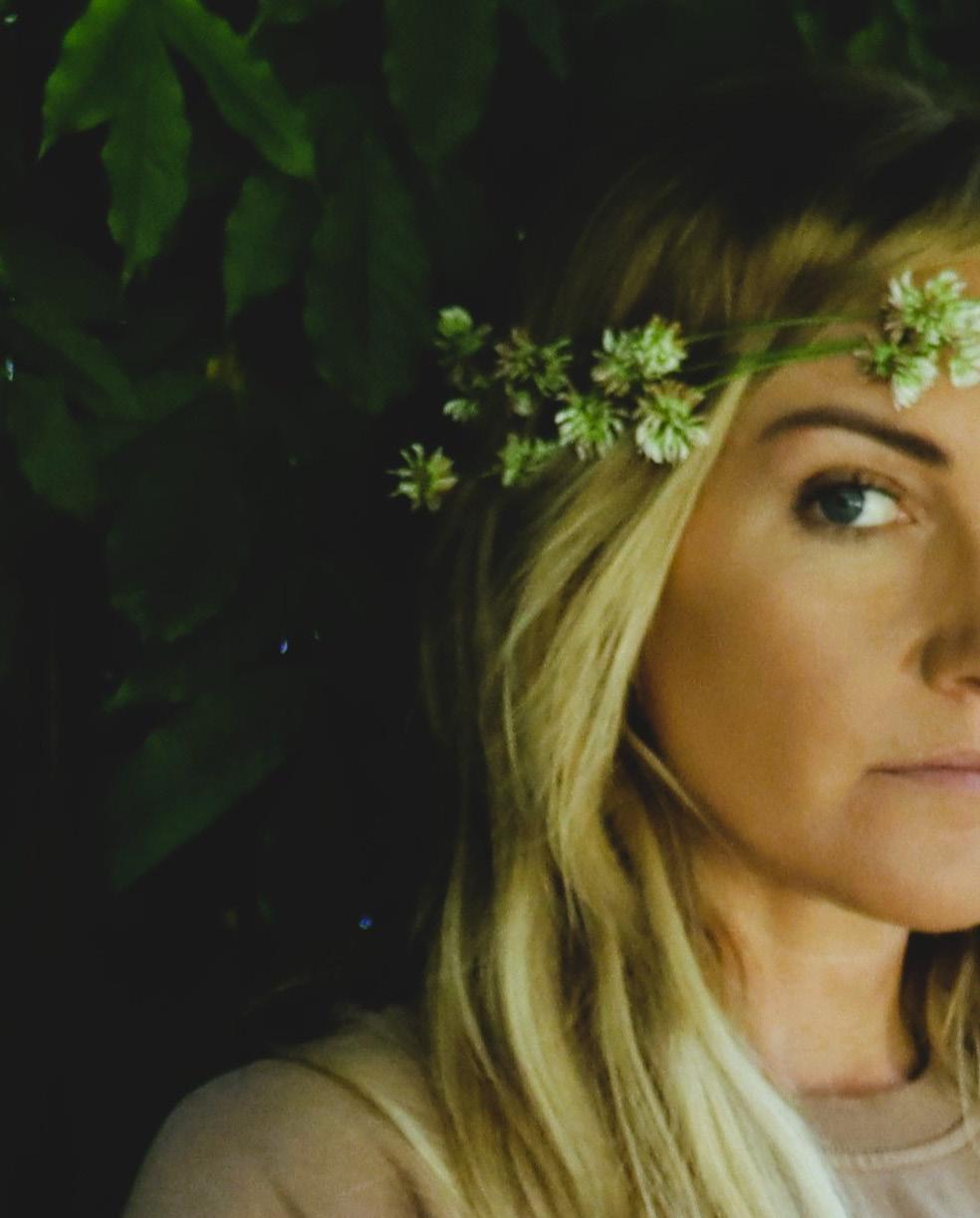
By Jackie Zykan
With over 20 years of experience in beverage alcohol, and a love affair with the natural world, I am delighted to share some of Kentucky’s finest distilled spirits alongside fresh, local, and seasonal botanicals. As temperatures rise, you may find yourself leaning into classic cooling foods such as watermelon, cucumber, or mint. But there’s one lesser known abundantly growing right before your eyes. Foraging for this whimsical flower comes with a fair chance of also finding a good luck token. It’s not a weed. It’s clover. And it’s everywhere.
Featured Kentucky Distillery: Rabbit Hole Distillery
The ever-expanding “NuLu” neighborhood of Louisville houses a homeplace born from one of the bourbon industry’s most fearless entrepreneurial minds. Founder Kaveh Zamanian boldly followed his passion for whiskey in totality. What manifested has become not just an impressive Louisville destination, but an ever-evolving empire that has never lost its roots of creative freedom. While the brand flexes their innovation edges regularly, there is always something for everyone within the four readily available core expressions. The Heigold Kentucky Straight Bourbon boasts a high rye content and complexity due to the malting process of both the rye and barley content of the mash bill. This “Goldilocks” of the portfolio hits the spot for a bourbon drinker looking for the familiarity of a classic bourbon profile: sweet aromatics, citrus, and of course a touch of lingering spice. Versatile in any cocktail, this bourbon is right at home in this month’s subtly sweet and refreshing feature.
Featured Kentucky Flora: Trifolium repens (White Clover)
This humble little bloom is so familiar to our lawns that naturally it becomes an overlooked element in the background of summer. Entirely edible and petite in nature, clover is a hot bed for pollinators as well as a work horse when it comes to the condition and structure of soil. Its therapeutic applications are vast, both internally and topically. Tea made from the blooms has a sweet vanilla and honey note, and the plant itself is naturally cooling making it just right for the season.
Kentucky Clover Tea
1.5 oz Rabbit Hole Distillery Heigold Kentucky Straight Bourbon
3 oz Mint & White Clover Tea
1 oz Citrus Honey Syrup
Directions: Combine spirit, tea, and syrup in a shaker tin filled with ice. Shake and pour directly into a tall glass. Garnish with citrus peels, mint, and clover blossoms.
Mocktail Variation: Simply omit the spirit.
Mint & White Clover Tea
½ c white clover blossoms, stems removed, rinsed
3 sprigs fresh mint (~18 leaves, stems removed)
3 c hot water (not boiling)
Directions: Pour hot water over blossoms and mint in a heat safe vessel.
Allow to steep 3-5 minutes, then strain. Keep refrigerated.
Citrus Honey Syrup
Peels of one lemon & one orange
½ c granulated sugar
¾ c hot water
¼ c clover honey
Directions: Cover peels in sugar, set in the refrigerator overnight. To prepare syrup next day, stir hot water and honey together, pour over prepared peels and sugar, stir to dissolve. Discard peels. Keep refrigerated.
Special notes about foraging these ingredients
- Take only what you need, leave plenty for pollinators
- Harvest only fresh white blooms, ideally in the morning
- Never use ingredients without 100% certainty of identification
- Don’t harvest plants which have been treated with chemicals/pesticides/herbicides



LEARN MORE

IN A WORLD BRIMMING WITH ORDINARY EXPERIENCES, RABBIT HOLE STANDS AS A BEACON OF CREATIVITY AND CELEBRATING THE EXTRAORDINARY IN ALL OF US. EXPLORE OUR DIVERSE LINE OF SPIRITS TO FIND THE PERFECT ONE FOR YOU.

characterized by a diverse cultural and commercial landscape, thriving real estate, desirable schools and a central business district buzzing with activity. Over my lifetime, downtown Louisville has evolved from a hub of locally grown companies in the 1980s and 90s to a center focused on amenities like the Bourbon Trail, museums and sports complexes. Before the COVID-19 pandemic, Louisville was bustling with energy and development.
Today, the downtown and business landscape in Louisville and similar-sized cities has shifted. Many local companies have been sold or merged with out-of-town entities, turning former local corporate headquarters into high-vacancy rental office towers. Additionally, a significant portion of the workforce has transitioned to remote work, changing the dynamics of the downtown area.
Louisville, like many cities, has seen a transfer of wealth and intellectual talent to cities where corporate headquarters have moved. This shift impacts philanthropic donations and job opportunities, as larger cities attract young professionals seeking employment. The challenge now is to reclaim and reinvigorate our downtown, ensuring it remains a vibrant center for the community.
To address these changes, Louisville must think big and bold. Independence Bank supports the plan by Mayor Greenberg, Louisville Downtown Partnership, and Greater Louisville Inc., which aims to enrich and revitalize the city by tackling crime, homelessness and creating a welcoming environment. This plan leverages Louisville’s strengths, including its medical district, higher education and innovation district, arts community, enhanced residential living, the Bourbon Trail and tourism. Initiatives like relocating the U.S. Army Corps of Engineers and
potentially repurposing vacant office towers for Jefferson County Public Schools headquarters are steps in this direction.
Looking ahead, Louisville should consider even bolder ideas, such as converting downtown office towers into educational districts for high school STEAM and magnet programs.
Attracting college graduates back to Louisville could be achieved by creating professional jobs that accommodate semiremote work and offering tax incentives to reduce student loans.
It is crucial to act now, support local leaders and collaborate on innovative solutions. Independence Bank is committed to investing in Louisville, believing that positive change begins with small, bold ideas that can grow and drive the city’s economy forward.

Louis R. Straub, II President Loan Officer
Independence Bank


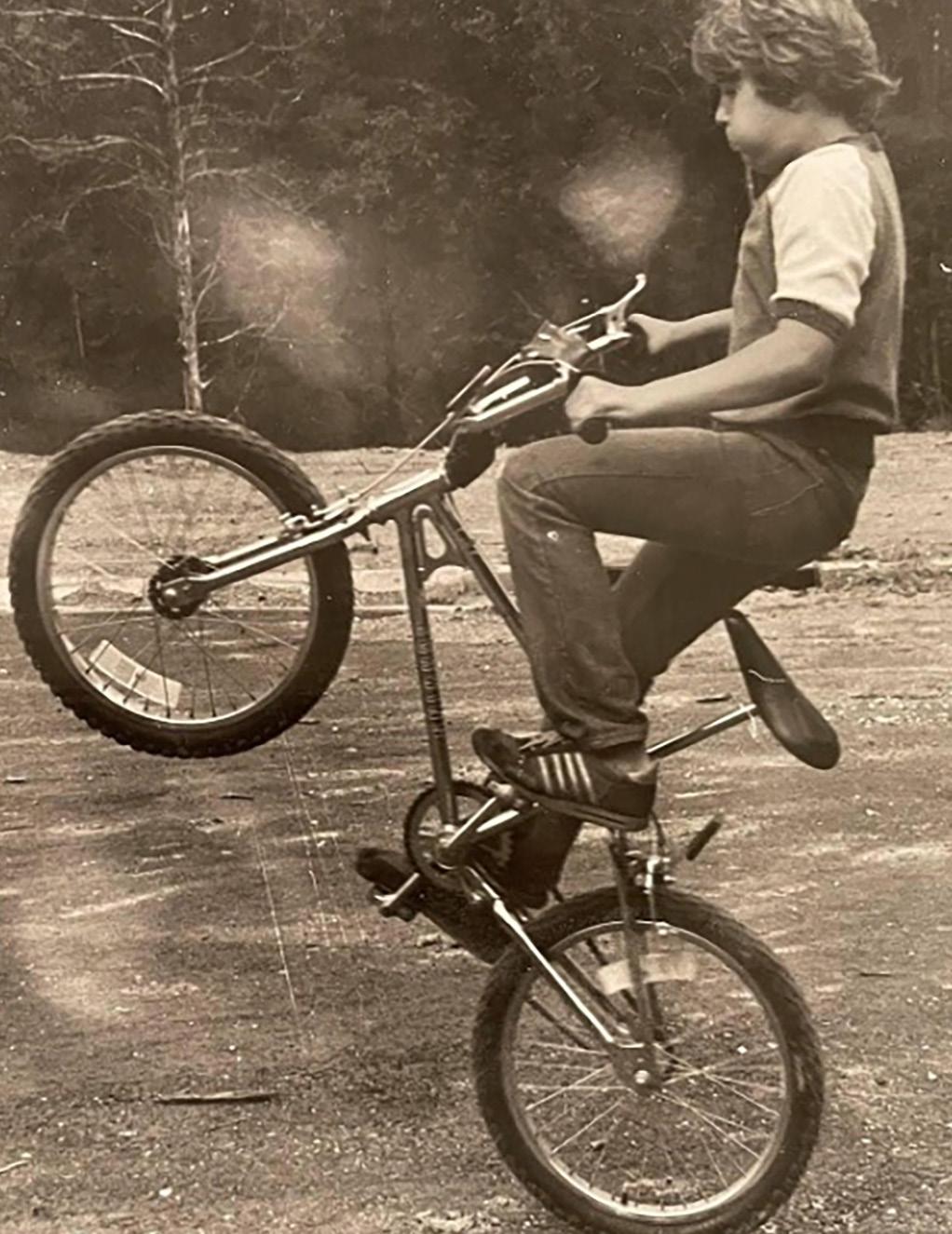
By: VOICE-TRIBUNE & Matt Coleman
Photos provided by Matt Johnson &
Matt Coleman
Matt Coleman has come a long way from his first job as a paperboy for VOICE-TRIBUNE to now being the President of Discount Equity Services, Inc., and he’s had a lot of exciting adventures along the way. Join VOICE-TRIBUNE as we catch up with Matt, and he shares some of his memories and experiences.
“Mom just sent this picture to me, we were the very first inhabitants of Beckley Woods. Pretty sure this photo was from 1979. Lake Forest was still nothing more than our trails. Beckley Woods was still being built. We all had BMX bikes, this one belonged to my little brother. It was bought at Thornberry’s in Saint Matthews, a Schwinn with the spoked wheels- the tough wheels had come out the next year. This is how we rode. Bikes, mini bikes, dirt bikes, skateboards, and stuff we just built. I even took our riding mower, with the garden trailer attachment for our gear, and cut a trail through Lake Forest and my own camping spot. We also had death-defying jumps, crazy dangerous ramps, and we wiped out---hard. Often coming home bleeding profusely with skinned-up hands. I could ride this bicycle backward around the block.
My very first job was delivering the Voice-Tribune paper in Beckley Woods. There was a heavily wooded area with a clear water creek. It was only about 5 feet deep but I could sit there in the shade, and listen to the creek flow over the rocks and fill this area with water. It was my first exposure to meditation, I just didn’t know what to call it.
We built stuff to ride. I made a sled with a 2x8, a 2x4, a bolt, and three sets of trucks/wheels from skateboard parts called the “Hoozie II”. Crazy times indeed. Think about this, at 14 years of age, I would say I was going camping, and just leave. No communication. For two days my parents had no idea if I were alive or not. Every day I would wake up, eat breakfast, open the door, hop on my bike, and see what life had in store. We would simply go outside and find our own entertainment. Did we get into some mischief and trouble at times? Sure, but nothing too bad. My mom had a bell she would ring from the front porch that meant dinner time. As soon as the street lights came on, it was time to go home. I miss these days and almost feel sorry for those who didn’t grow up in the 70s. It was painfully and dangerously awesome.”

“My father exposed me to boating at an early age. He was the kind of man who enjoyed teaching his son how to tie lines, drive the boat, and even dock the boat. By the time I was 10, I could turn on the blowers, fire up two Chrysler 318s, untie the boat, and drive the boat out of Limestone Marina. This was the Rope Yarn II and she was a 32ft Marinette. I could race a minibike by 10. Learned to drive a stick shift car at 13. By the age of 15, I could shoot an ILS approach and land a Cessna. By 16, I soloed an ultralight aircraft. My father served as an intelligence officer in the Navy, his father was Navy as was his father. I was way too young to join him, so instead of joining the Boy Scouts, I found myself to be a member of the Sea Explorers aka Sea Scouts. We had a boat that was next to the Belle of Louisville called the Zachary Taylor. My teenage years were spent riding dirt bikes, water skiing, boating, and sailing.

I followed my family tradition and joined the Navy when I was 18. Then joined the USCG Auxiliary after graduating from the University of Kentucky. I went on active duty in the US Navy, I was to become a Navy Combat Stevedore, part of the Amphib assault battalion. We had to run every day, do calisthenics, train at the gun range, etc. We were doing an exercise in the Philippines, heading to the beach on an ACU Assault Craft Unit, and It became obvious to me that no matter what rate you were, we were all hitting that beach on the same boat. Then I saw that one of the guys had much cooler guns than the rest, it was then that I decided to become a Gunners Mate Guns (GMG). My unit was awesome!
We went all over the world and did some cool things. During Operation DeepFreeze, we got to live 3 months in large tents at McMurdo Station Antarctica. My time in the USCG Aux was well spent. I saved a few lives, inspected a lot of boats, assisted in federal disaster operations learned, and taught many forms of water rescue techniques and advanced towing. I have some fun rescue stories, some are very comical, and some are serious.
These days being a Pleasure Boater on the Ohio River is Great fun. I’m a member of a local boat club called Harrods Creek Boat Owners Association (HCBOA). I’ve been their safety officer since 1997. We have a lot of fun parties on the river, the best one is our annual Poker Run. It is a non-timed event and we make it so that nobody has to cross the sailing line, that is the prescribed line on the river charts that the barges are supposed to follow. You can check us out online at www.HCBOA.com.
The Poker Run starts around noon and everyone who buys a hand gets a t-shirt and a book with a map and various clues as to where the 5 dealer boats will be located. The event is a lot of fun and the winners can win a decent sized amount. We are a charitable club and we give funds to many local and national charities. The idea is to figure out where the dealer boats will be located and go to each one for a card. Then we all meet up at a local beach and or an island and have a big cookout, announce winners, and sometimes we even have a band. Our club maintains 12 Mile Island. We have a stage, tables, chairs, a fire pit, and even a riding mower up on top. We also built two metal sets of stairs to get up to the top of the island. Go to our website and come have some water fun with us!
We also have a Dingey run every summer. We usually meet up for breakfast on Harrods Creek, then the fun starts. Tons of smaller boats go at it in a massive squirt gun war. We have this battle throughout Harrods Creek and then onto the river. We usually end up at a destiny location for one final throw-down followed by a large cookout and music. If you are looking for safe summertime fun on the river, HCBOA is a good way to go. We even have a formal Christmas party every year. My passion for boating and river life continues to grow, I make myself available to help new boaters learn the ropes and to help experienced boaters become better captains.”
Matt@DiscountEquity.com
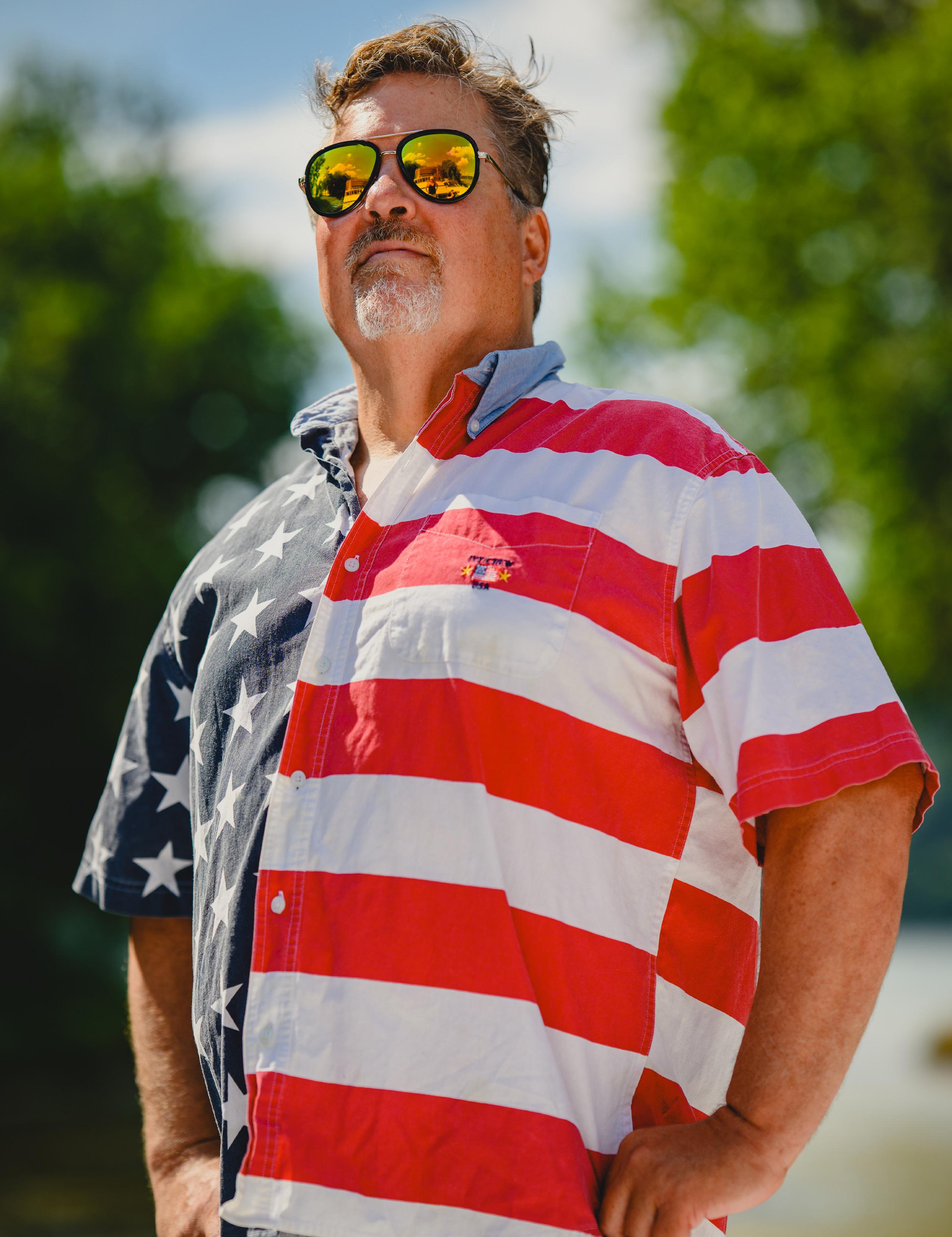
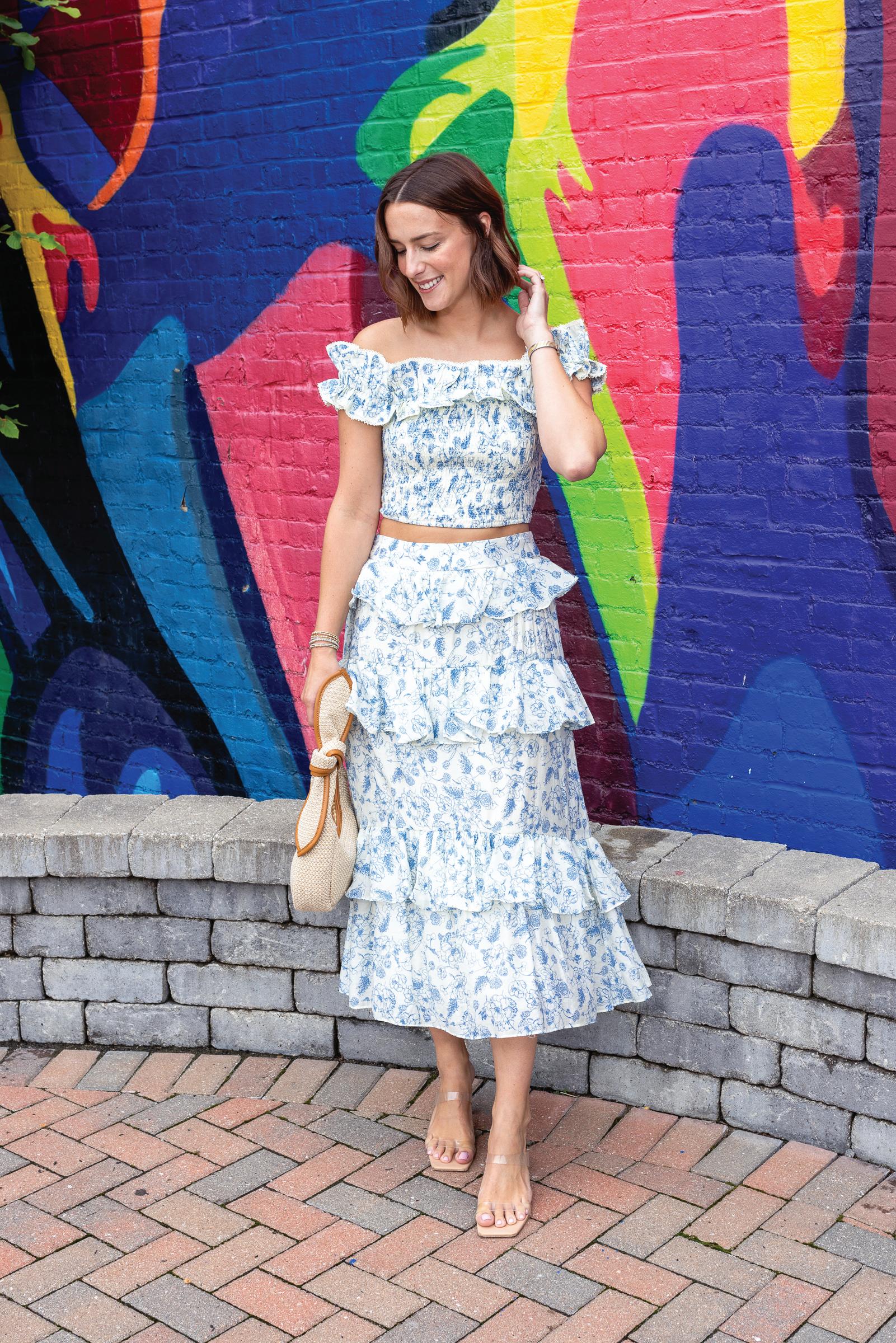





By Voice-Tribune
Photos by Matt Johnson
In recent years, the realm of skincare has evolved to be inclusive, with a growing focus on the unique needs of men. Two experts in this field, Dr. Bradley Calobrace, and Dr. Juan Quintero, provided us with insights into effective skincare routines tailored specifically for men.
Both Dr. Calobrace and Dr. Quintero emphasize simplicity and consistency as the cornerstones of a good skincare regimen. Dr. Calobrace advises starting with a good cleanser, incorporating exosomes for collagen regeneration, and using an effective sunscreen like Pavise. He highlights the importance of products that foster a healthy skin microbiome, such as BioJuve, to optimize the skin’s natural environment. Dr. Quintero echoes this sentiment, recommending a basic routine that includes a quality face wash, moisturizer, and sunscreen. He stresses the importance of adding components like Retin A and hyaluronic acid to enhance collagen production and minimize wrinkles.
“A common mistake men make”, according to Dr. Calobrace, “is using harsh soaps that dehydrate the skin and neglecting to reapply sunscreen throughout the day.” He underscores the necessity of persistence, noting that skincare should be a lifelong habit rather than a quick fix. Dr. Quintero identifies the lack of professional guidance as a critical error. Many men rely on over-the-counter products without understanding their ingredients, which can sometimes cause more harm than good. He advocates for professional advice to tailor skincare routines to individual needs.

Hyaluronic acid and exosomes are highlighted by both doctors as key ingredients that stimulate youthful skin activity. Dr. Quintero adds that men should look for products containing zinc oxide for effective sun protection, emphasizing its importance in preventing photoaging and protecting vulnerable areas like the nose and lips.
For men who work or exercise outdoors, both doctors stress the necessity of regular sunscreen application and the use of physical barriers like hats and sunglasses. Dr. Calobrace advises reapplying sunscreen every few hours, while Dr. Quintero reiterates the paramount importance of zinc oxide-based sunblocks.
CaloSpa offers a range of treatments specifically beneficial for men. These include Hydrafacials, MOXI laser treatments, and PRX peels, all designed to improve skin texture and brightness with minimal downtime. Microneedling RF treatments, such as Morpheus and Scarlett, are also popular for their effective results with easy recovery.
Dr. Quintero highlights a variety of procedures, from wrinkle reduction and volume augmentation with fillers to advanced laser treatments targeting different skin layers. He also promotes wellness treatments like weight loss programs and hair restoration, along with innovative fitness and rejuvenation therapies like TrueSculpt, Emsculpt Neo, and Emface.
Both doctors recommend specific brands known for their efficacy such as Elevai Exosomes, SkinMedica HA 5, Pavise sunscreen, and BioJuve as top choices.
Looking to the future, both experts are excited about advancements in regenerative medicine. Exosomes, stem cells, and treatments that replenish the skin’s microbiome are at the forefront of promising new developments in men’s skincare.
Incorporating professional advice and high-quality products into a consistent skincare routine can significantly impact men’s skin health and appearance. Dr. Bradley Calobrace and Dr. Juan Quintero provide a roadmap for men to follow, ensuring their skincare regimen is both effective and sustainable. As the industry evolves, staying informed about emerging treatments will help men maintain youthful, healthy skin for years to come.


AUGUST 1518




Exciting changes are afoot for Mamili 502, the beloved boutique known for its casual and sophisticated fashion. The store is relocating from its NuLu location to Chenoweth Square in St. Matthews this month. This move brings not just a change of scenery but also an expansion of their men’s selection, offering a wider array of stylish options. To celebrate this new chapter, VOICE-TRIBUNE teamed up with stylist Mike Tomes to showcase the latest in men’s fashion from Mamili 502. Join us as we explore the fresh offerings that await at their new larger location!






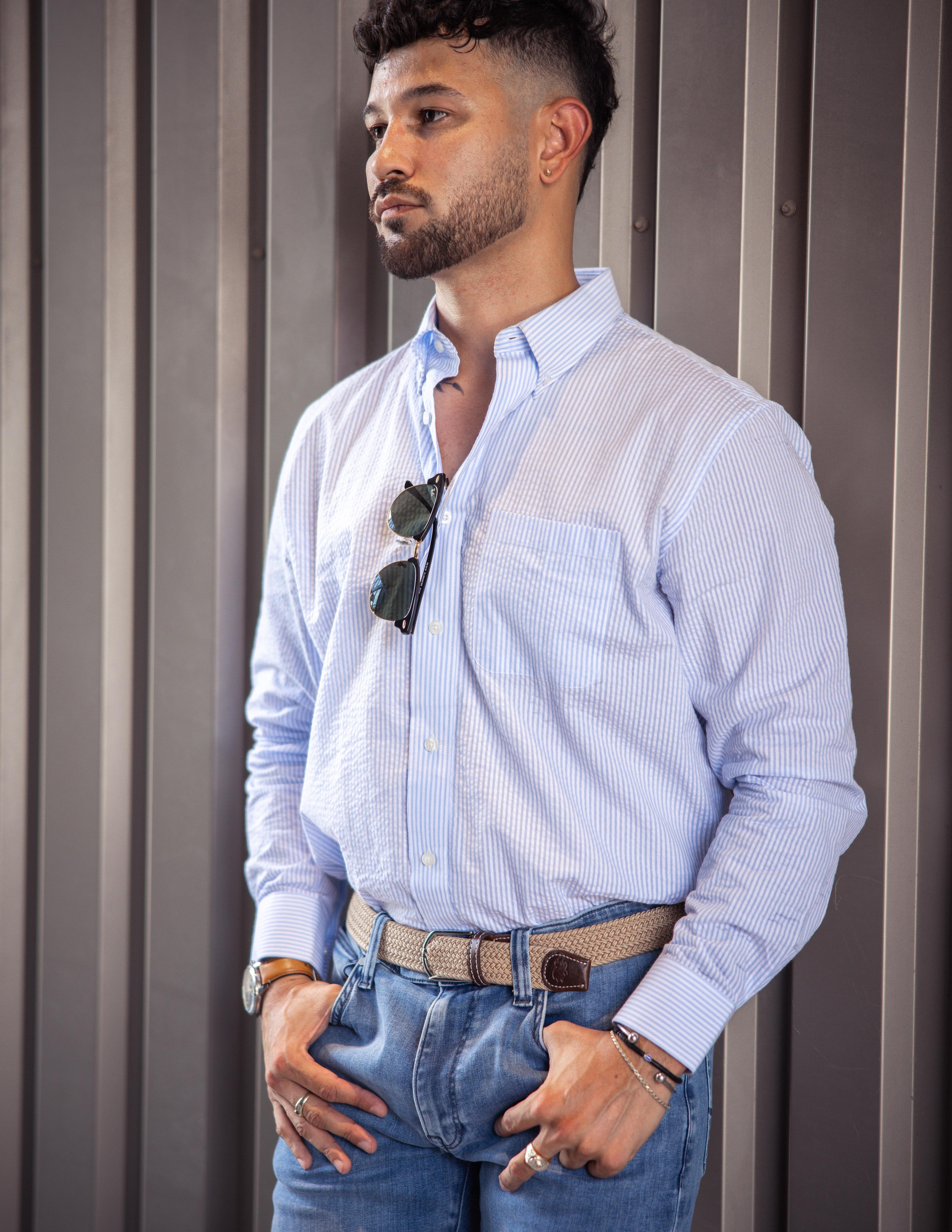






By: Alison Cardoza
Photograhy by
Matt Johnson
Sponsored
A personal trainer evaluates their clients’ fitness level, skills, and personal goals. They develop personalized training programs for their clients, which allow them to monitor their clients’ progress. They change lives for the better.
Being a personal trainer at Baptist Health Milestone allows me to impact clients at many pivotal points in their lives. It is such an honor to influence lives every day in a positive way. I have been a trainer and group exercise instructor for 20 years. Throughout my time at Milestone, I have been told that I am a role model. I feel that my clients are the true heroes in this scenario. Many have tackled health complications, surgeries, stubborn weight gain due to medical issues, and more. They show up every session and work hard to accomplish their goals. Their tenacity and drive allow me to be the best trainer I can be. Many clients become a part of my life and become a second family to me. My clients Robin Silverman and Rabbi Robert Slosberg are just that and more. They are individuals that strive to put their health and wellness first as well as others in the community. They are motivators. It is a rewarding experience to be their trainer and have them put their trust in me.
Rabbi Robert Slosberg has a long family history of heart disease. He began working with me about 15 years ago as part of a heart disease prevention program. A year later, he referred his colleague, Robin Silverman to work with me following complications she experienced from a rare auto-immune disease. Following their retirements in 2023, I suggested that they begin partner training to provide motivation, accountability, and the opportunity to try new exercises.
Retirement is a time to slow down, reflect, and situate health as a priority. Robin and Robert had spent endless hours at their jobs and countless days helping the community. They still make a positive difference in the community today but have slowed down and focused more on themselves.
Exercising with each other helps hold the other accountable, and keeps the workout fun. The accountability comes into play when one does not feel motivated or has a semi-important excuse to get out of doing a workout. The competitive nature comes into play, which motivates them both to attend the sessions and give it their all. Partner training and group training sessions are offered at Baptist Health Milestone. Contact us today and get your health underway.
Alison Cardoza, ACSM Certified Personal Trainer and Fitour Group Exercise at Baptist Health Milestone Wellness Center. B.S. Exercise Science and Sports Medicine with a minor in Health Promotions at University of Louisville. Former UofL and Indianapolis NFL Colts Cheerleader.



JULY 13
Cancun FC
JULY 19
Colorado Springs
Switchbacks FC
JULY 27
Monterey Bay FC
JULY 30
Eintracht Frankfurt
AUGUST 10
Sacramento Republic FC
AUGUST 17
Charleston Battery
SEPTEMBER 6
Loudoun United FC
SEPTEMBER 28
Memphis 901 FC
OCTOBER 2
Miami FC
OCTOBER 12
Tampa Bay Rowdies
OCTOBER 26
Phoenix Rising FC

JULY 20
CF Monterrey
JULY 26
North Carolina
Courage
AUGUST 9
The Women’s Cup
AUGUST 13
The Women’s Cup
AUGUST 24
Chicago Red Stars
AUGUST 31
Seattle Reign
SEPTEMBER 14
Angel City FC
SEPTEMBER 21
North Carolina
Courage
OCTOBER 5
Kansas City Current
OCTOBER 19
Portland Thorns FC




By Bill Doolittle
Louisville Bats star Levi Jordan isn’t a star at all — he says.
“In high school we had eight or nine Division One recruits on our team my senior year, and I was not one of them,” says Jordan. “In college at the University of Washington we had X-amount of draft picks, and I was not one of them – until super-late my senior year.”
But for the Louisville Bats, and the Cincinnati Reds organization, who picked Jordan up as a ballplayer, rather than a red-hot prospect, things have worked out very well. Louisville doesn’t have much hitting, but Jordan is batting .300. The club does have good fielders, and Jordan excels at fielding. So he IS kind of a star, for a team that doesn’t have a roster full of stars.
“I wouldn’t say I have a tool that particularly stands out,” says Jordan, “but I think I learned a long time ago that being consistent and showing up, being the same player every day translates to career-long success.”
And that Steady Eddie style helps the Bats click. After cruising along eight or nine games above .500 for the first two months of the season, Louisville went on its longest road trip of the season in June and suddenly found itself mired in a nine-game losing streak.
But then Jordan cracked key doubles two nights in a row at Omaha. Others hit, too, and the fever broke. The Bats return home to Slugger Field on July 1 for 12 home games in a three-week stretch, including three days off for the Major League All-Star break, as the second half of the International League season begins.
A year ago, Louisville’s roster was stacked with major-league prospects, headed by the one-of-a-kind Elly De La Cruz. But those hot prospects are all in Cincinnati now, and a next round of phenoms seems to be stuck farther down in the minors. What’s left for the Bats is to simply play good baseball. Put on a good show. Win games they can with a roster of dependable, everyday players.
“We’re playing good,” says manager Pat Kelly. “In a little rut right now. Ran into some good pitching, and we weren’t getting the big hit. But we’ve played well.”
The Bats starting pitching has been decent, and Kelly is very happy with his relief pitching – led by Alan Busenitz and Tony Santillan. Meaning that if the hitters can score a few runs, the bullpen can close it out. The Reds have kind of platooned slugger Nick Martini, up to the Reds and back to the Bats, as situations demand. When he’s here, Martini gives the Bats home run power. Edwin Rios can loft the ball over the wall, too, with a classic left-handed sluggers’ swing. Fun to see Rios connect.
But the top hitter remains Jordan, at 5-8, 180 lbs. – and a guy who always brings his glove to the ballpark.
The Reds grabbed Jordan in the Rule 5 Minor League Draft, when the Chicago Cubs were, frankly, not paying much attention to him. Kelly had good reports from scouts, including his nephew Jason Kelly, who was an assistant coach at the University of Washington when Jordan was there. Now Jason is the Huskies head man.
Minor league players move around. A lot. Looking for places to catch on, maybe make the big leagues. Mostly not making much money. Mostly never seeing “The Show.” Jordan, now 28, says he contemplated dropping baseball. He makes, he says, about $30-35,000 a year, and knows he could do a whole letter better in business. Or coaching in college. In fact, he’d just gotten a college job offer. But he agreed with his agent to give baseball a little more chance to perk. And it’s going well.
“He’s hitting .300, and he hasn’t had those kind of stats before,” says Pat Kelly, who sees Jordan as a man making the most of his chances.
“I don’t know that he’s really had the opportunity, always been a kind of backup guy,” the Bats skipper says. “But he’s a good piece who can help, not only here, but maybe at the major league level, too. He can play all three outfield positions. He can play all four infield positions. And he even started catching a little this spring. So he is extremely valuable.”
And a find for the Bats at second base, where he makes all the plays.
Growing up, Jordan played in summer leagues in his hometown of Puyallup, Washington, with his dad as a volunteer coach.
“I played on a team with my best friends for about 10 years, and that was important to (my dad), keeping the team together and all of us growing up together,” says Jordan. “He coached us in summer ball until we were about 15 or 16, then turned us over to coaches who could get us in front of college scouts.
“I think he identified in me that I was never going to be the biggest, strongest kid, but what I could do is play my position well in a position of leadership.”
For Jordan, that means not only trying to keep his head in the game, but ahead of the game.
“Where I believe I have an edge is in the IQ part of baseball,” Jordan says. “In fact, it’s my favorite part of it. Anticipating where guys are going to hit the ball. Or on what counts a hitter might be out in front a beat. What to do with runners on is really important. Holding runners on at second base, making our pitchers aware of, hey, this guy can run, let’s be quicker to the plate. Or mix in a pickoff to try to control their running game. I think there’s a lost art of that in the game of baseball these days.”
And paying attention to the routine.
“I think we as baseball players should make the routine play 10 times out of 10, with a few web gems sprinkled in there.”



Dunking--Noah Waterman, a 6-foot-11 forward who transferred to Louisville from BYU goes up for a dunk during the Cardinals’ summer workouts. Next to him is 6-10 forward Kasean Pryor, a transfer from South Florida, and watching is Chucky Hepburn.
By Russ Brown
Photos by: UofL Athletics/Adam Creech
The foundation of Pat Kelsey’s first University of Louisville basketball team is in place -- assistant coaches have been hired, a support staff is hard at work and most importantly, all 13 recruits have signed on the dotted line.
Kelsey has wiped the slate clean of any incriminating evidence from former coach Kenny Payne, whose two-year tenure ended with an historically bad 12-52 overall record that included 5-37 against ACC competition. Not only is Payne gone (he was recently named associate head coach at Arkansas by John Calipari, his former boss at Kentucky), along with every other staff member, but there is also a totally new cast of players.
With every scholarship player from last season having left for other programs, Kelsey made liberal use of the transfer portal to build the roster from the ground up, signing just one high school prospect in 4-star wing Khani Rooths. UofL is one of only two Division I teams in the country that will enter the 2024-25 season with an all-new roster, the other being Calipari’s Razorbacks.
UofL stats guru Kelly Dickey noted that UofL hasn’t had a team with zero returning players since the 1943-44 club, most of whom were Navy trainees attending the school during World War II.
All the newcomers arrived on campus during the first week of June and have completed the three weeks of supervised summer workouts allowed by the NCAA.
Now comes the hardest and most important part: winning games. We won’t learn the early results of Kelsey’s first building block for another four months or so, beginning with UofL’s season-opening game on Nov. 4 against Morehead State in the KFC Yum! Center. Until then, we’ll have to take the coach’s word for it, and judging from some of those words since his hiring on March 28th, he has high hopes for his first group of Cardinals.
“I like the overall makeup of our team,” he says. “I love the DNA of our team, I love what they’re about. The first 70 days were a whirlwind. But now it’s settled down a little bit. You’re able to take a deep breath and focus on what you do best and what you love the most. And that’s coach guys up, put your team together. So it’s been awesome. We feel really, really good, after the dust has settled, about the roster we’ve been able to assemble.
“It’s a painstaking process. We’re very particular and thorough in the guys that we go after. We have sets of standards both from an X and O standpoint, and a schematic standpoint, an analytical standpoint, a player profile standpoint. Then obviously the makeup of the individual for the fit in our culture are the high standards we have and we try not to equivocate on them. We go to great lengths to do our due diligence and peel away the onion as we like to say. We think we have put together a roster that really fits what we do, both on the court and off.”

While the players will be new to The Ville, it will be an experienced group due to the transfers from various programs, many of whom have NCAA Tournament experience. The trio of Aboubacar Traore (Long Beach State), Terrence Edwards Jr. (James Madison) and Chucky Hepburn (Wisconsin) are all career 1,000-point scorers. Three transfer additions are veterans of Kelsey’s former team at College of Charleston, while others are from BYU, Colorado, Georgia, Maryland, South Florida and Washington.
UofL’s portal haul is ranked in the top five nationally, including No. 1 by On3Sports, and the Cards have also already been mentioned as a dark horse contender that could possibly challenge Duke and North Carolina for the ACC title.
“I think a hallmark of this team, and part of its true identity, is the maturity,” Kelsey says. “We have a bunch of old heads, guys that have logged a ton of minutes at a high level of college basketball. And not only that, but they have come from winning programs. As they say in college basketball now, it’s important to get old and stay old.
“You know, if you have a roster full of high school guys, now it’s really, really important to have a balanced roster as we move forward. And you have homegrown and you have grassroots recruits and you’re recruiting freshmen, and you’re cultivating them and growing them and building them. . .That will be a major part of our program. But I think having an older, mature roster is always going to be key to being a great program as you move forward and we have that.”
Another aspect of the Cards’ collective on-court personality both in practice and in games, according to Kelsey, will be a ferocious competitiveness, with their coach as Exhibit A. Kelsey said he inherited his competitive edge from his father, who built an auto dealership business in Lawrenceburg, Ind., as well as from watching the Cincinnati Reds’ Pete Rose as a kid growing up in the Queen City.
“I’m pretty competitive, probably overboard at times,” Kelsey said. “But I mean, it’s what’s awesome about being in coaching, right? You compete every single day in every aspect of your job. If you’re going into second base, you’re going in headfirst. You’re eating some dirt on the way in there. That’s just how we play. One of the core tenants of our program: We compete every single day on the court. Nothing’s given, everything’s earned. That’s part of the DNA of our program.”
Hopefully, it will all come together starting in November, then continue to progress into March. Although UofL’s complete schedule won’t be released until late August or September, many of its non-conference opponents are known. In addition to Morehead, the Cards will host Tennessee on Nov. 9, Winthrop on Nov. 22 and Eastern Kentucky on Dec. 28. Their annual Battle of the Bluegrass against Kentucky is set for Dec. 14 in Rupp Arena and they will face Ole Miss in the ACC/SEC Challenge on Dec. 3 in the KFC Yum! Center.
UofL will also compete in the Battle for Atlantis at Atlantis Paradise Island in the Bahamas Nov. 27-29, joining Arizona, Davidson, Gonzaga, Indiana, Oklahoma, Providence and West Virginia. Pairings have not been announced.





By: VOICE-TRIBUNE
By: VOICE-TRIBUNE
Photos by: the Brown Family
by: the Brown Family
We’re thrilled to announce VOICE-TRIBUNE sports writer Russ Brown was recently inducted into the Indiana Sportswriters and Sportscasters Association Hall of Fame on April 7, 2024.
We’re thrilled to announce VOICE-TRIBUNE sports writer Russ Brown was recently inducted into the Indiana Sportswriters and Sportscasters Association Hall of Fame on April 7, 2024.
Brown, who has worked in the journalism industry for 65 years, was joined by his family to commemorate this prestigious honor during a ceremony at Valle Vista Golf Club in Greenwood, Indiana.
Brown, who has worked in the journalism industry for 65 years, was joined by his family to commemorate this prestigious honor during a ceremony at Valle Vista Golf Club in Greenwood, Indiana.
“I had been looking forward to the induction ceremony since I was notified last September and it was even more fun than I anticipated because I got to see so many of my media peers that I had lost contact with over the years or hadn’t seen in quite awhile,” Brown said. “And, of course, having all my family and a number of friends on hand to share the moment was very gratifying.”
“I had been looking forward to the induction ceremony since I was notified last September and it was even more fun than I anticipated because I got to see so many of my media peers that I had lost contact with over the years or hadn’t seen in quite awhile,” Brown said. “And, of course, having all my family and a number of friends on hand to share the moment was very gratifying.”
Russ’ career began as a junior high school student in Salem, Indiana when he started as a newspaper carrier for The Indianapolis Star in the morning and The Louisville Times in the afternoon. As a senior, he was sports editor of his high school publication, The Salem Cub while also covering sports for the weekly Salem Leader before graduating.
Russ’ career began as a junior high school student in Salem, Indiana when he started as a newspaper carrier for The Indianapolis Star in the morning and The Louisville Times in the afternoon. As a senior, he was sports editor of his high school publication, The Salem Cub while also covering sports for the weekly Salem Leader before graduating.
Before his 30-year stint at The Courier-Journal, Brown took on two other full-time roles at the Seymour Tribune, Columbus Republic. An avid sports fan, Brown quickly became The Courier-Journal’s Indiana sports editor and columnist, covering high school sports across the river and leading a team of correspondents and photographers. He covered Indiana’s Bob Knight as an IU and Big Ten beat writer.
Before his 30-year stint at The Courier-Journal, Brown took on two other full-time roles at the Seymour Tribune, Columbus Republic. An avid sports fan, Brown quickly became The Courier-Journal’s Indiana sports editor and columnist, covering high school sports across the river and leading a team of correspondents and photographers. He covered Indiana’s Bob Knight as an IU and Big Ten beat writer.
“I will always be grateful to the late former VOICE-TRIBUNE columnist Earl Cox for giving me a chance to join the C-J’s award-winning sports staff and showing confidence in me by giving me an important beat and title soon after my arrival as the youngest person on the 23-member staff. I thanked him for that opportunity often. Under his guidance, our sports section was consistently recognized as one of the best in the country.”
“I will always be grateful to the late former VOICE-TRIBUNE columnist Earl Cox for giving me a chance to join the C-J’s award-winning sports staff and showing confidence in me by giving me an important beat and title soon after my arrival as the youngest person on the 23-member staff. I thanked him for that opportunity often. Under his guidance, our sports section was consistently recognized as one of the best in the country.”
“The first 14 years of my C-J career was spent dealing with Knight — or “The General,” as he was known — which was not an easy task,” said Brown. “I endured many profanity-laced threats in calls to my home, and I am pretty sure I am the only sportswriter in America that has been shot at by a Hall of Fame basketball coach, or any coach for that matter. Briefly, that happened in 1980 when Dan Rather and 60 Minutes were on hand for a game filming a profile of the volatile coach.”
“The first 14 years of my C-J career was spent dealing with Knight — or “The General,” as he was known — which was not an easy task,” said Brown. “I endured many profanity-laced threats in calls to my home, and I am pretty sure I am the only sportswriter in America that has been shot at by a Hall of Fame basketball coach, or any coach for that matter. Briefly, that happened in 1980 when Dan Rather and 60 Minutes were on hand for a game filming a profile of the volatile coach.”
“As I was leaving the interview room following a game in Assembly Hall, the Hoosiers’ arena in Bloomington, I passed Knight, who was standing by the door talking to a reporter from the Chicago Sun Times. He didn’t say a word, but when I got about 10-15 yards down the hall he yelled, ‘Hey Russ.’ I turned around and Knight raised a gun and fired at me. Fortunately it was a starter’s pistol loaded with blanks. I said, ‘you missed’ and he replied, ‘wait til you shake your head.’ Then he shouted, ‘hey, I just shot Russ Brown. I’ve been trying to get that little bastard for a long time.’ The incident made national news and is still noted in stories about his many other crazy escapades. Interestingly, neither of us ever mentioned it, but I always chalked it up to a sick joke from the demented mind of a classic bully.”
“As I was leaving the interview room following a game in Assembly Hall, the Hoosiers’ arena in Bloomington, I passed Knight, who was standing by the door talking to a reporter from the Chicago Sun Times. He didn’t say a word, but when I got about 10-15 yards down the hall he yelled, ‘Hey Russ.’ I turned around and Knight raised a gun and fired at me. Fortunately it was a starter’s pistol loaded with blanks. I said, ‘you missed’ and he replied, ‘wait til you shake your head.’ Then he shouted, ‘hey, I just shot Russ Brown. I’ve been trying to get that little bastard for a long time.’ The incident made national news and is still noted in stories about his many other crazy escapades. Interestingly, neither of us ever mentioned it, but I always chalked it up to a sick joke from the demented mind of a classic bully.”
During his career, Brown has covered six UofL and IU NCAA Championship teams and Naismith Basketball Hall of Famers Knight, Rick Pitino and Denny Crum and written for USA Today, including a photo/story spread on a fishing trip with Crum to Venezuela. He co-founded the Louisville Sports Report magazine, and published health, fitness and sports magazines in Louisville and Indianapolis. Brown has also covered Indianapolis 500 races, Final Fours, Cincinnati Reds games, IHSAA State Finals events in several sports, Indiana-Kentucky All-Star Games and Indianapolis’ 1987 Pan Am Games.

During his career, Brown has covered six UofL and IU NCAA Championship teams and Naismith Basketball Hall of Famers Knight, Rick Pitino and Denny Crum and written for USA Today, including a photo/story spread on a fishing trip with Crum to Venezuela. He co-founded the Louisville Sports Report magazine, and published health, fitness and sports magazines in Louisville and Indianapolis. Brown has also covered Indianapolis 500 races, Final Fours, Cincinnati Reds games, IHSAA State Finals events in several sports, Indiana-Kentucky All-Star Games and Indianapolis’ 1987 Pan Am Games.
Brown continues to cover college basketball and football for KentuckyToday.com, along with his co-writing role for our new VOICE-TRIBUNE column with Louisville journalist and close friend Bill Doolittle. In addition to articles about UofL sports for the magazine, his work has expanded to include coverage of Louisville City FC and Racing FC soccer, and several arts and features topics.
Brown continues to cover college basketball and football for KentuckyToday.com, along with his co-writing role for our new VOICE-TRIBUNE column with Louisville journalist and close friend Bill Doolittle. In addition to articles about UofL sports for the magazine, his work has expanded to include coverage of Louisville City FC and Racing FC soccer, and several arts and features topics.
We’re so excited to count Russ Brown on our list of treasured writers. Congrats to our friend for his sportswriting Hall of Fame Award celebrating his years of excellence in sports journalism!
We’re so excited to count Russ Brown on our list of treasured writers. Congrats to our friend for his sportswriting Hall of Fame Award celebrating his years of excellence in sports journalism!




F R A C T I O N A L C F O
V e n t u r e F i r s t b e l i e v e s t h a t e v e r y
c o m p a n y n e e d s a t a l e n t e d C F O a n d
a n a l y s t c a p a b i l i t i e s S o m e
c o m p a n i e s n e e d m u l t i p l e p e o p l e i n
e a c h o f t h e s e r o l e s ; s o m e n e e d a
f r a c t i o n . V e n t u r e F i r s t s e r v e s a s a n
o u t s o u r c e d C F O , o f f e r i n g a n
o n g o i n g p a r t n e r s h i p t o p r o v i d e
f r a c t i o n a l s e r v i c e s a t a h i g h l e v e l
V A L U A T I O N S E R V I C E S
T h r o u g h s o p h i s t i c a t e d v a l u a t i o n
m e t h o d o l o g i e s , w e g o b e y o n d
m a s t e r y o f b e s t p r a c t i c e s ,
o f f e r i n g q u a l i f i e d o p i n i o n s a n d
a d v i c e b a s e d o n r e a l - w o r l d
b u s i n e s s s c e n a r i o s t o d e l i v e r
e x p e r t b u s i n e s s v a l u a t i o n
s e r v i c e s
V e n t u r e F i r s t o

JULY 6
ROARchestra
Louisville Zoo
8:30 p.m.
JULY 9
Breakfast of Champions with Coach Pat Kelsey
Louisville Thoroughbred Society
7:30 a.m.
JULY 9
Clash of the Cocktails
732 E Market St
6:00 p.m.

JULY 11
Louisville Burger Week Kick Off Party 2024
Noble Funk Brewing Company
5:30 p.m.
JULY 12
10th Annual Twisted Pink Gala
Mellwood Arts Center
6:00 p.m.
JULY 13
BABY PROM
Louisville Free Public Library-Main Branch
9:30 a.m.
JULY 13
The Flea Record & Gear Show Highlands 1228 E Breckinridge St 12:00 p.m.
JULY 13
NULU Summer Fest
700 E Market St
12:00 p.m.
JULY 13
St. Gabriel Summer Festival 5505 BARDSTOWN RD 5:00 p.m.
JULY 13
Astrology Ball
Mellwood Arts Center 7:00 p.m.
JULY 13
A Midsummer Night’s Dream: A Queer Tale Art Sanctuary 8:00 p.m.
JULY 14
KPF Presents “Family Day OUT”
Louisville Zoo 10:00 a.m.
JULY 14
Movement in the Museum: Pilates with Susan Speed Art Museum 12:00 p.m.
JULY 18
Music in the Park Series Alberta O. Jones Park 11:00 a.m.
JULY 18-20
Saint Agnes Carnival 1920 Newburg Rd
6:00 p.m. Thursday-12:p.m. Saturday
JULY 18
Mary Dowling, Mother of Bourbon Rabbit Hole Distillery 6:00 p.m.
JULY 20
The Summer Edit
Westport Village
11:00 a.m.
JULY 20
9th Annual JTown Summer Beer Fest
Jeffersontown Chamber
4:00 p.m.
JULY 20
Louisville Water Lantern Festival
Waterfront Park-Great Lawn
4:00 p.m.

JULY 20
Louisville Loves Nu-Metal
Headliners Music Hall
7:00 p.m.
JULY 21
Taste of Independents
Noble Funk Brewing Company
1:00 p.m.
JULY 25
WIGS!
Play Louisville
6:00 p.m.
JULY 26-27
The Big Stomp
Waterfront Park
4:00 p.m. Friday - 11:00 p.m. Saturday
JULY 27-28
Louisville Street Food Festival
Fourth Street Live! 2:00 p.m. Saturday - 8:00 p.m. Sunday
JULY 27
Summer Beer Fest
Frazier History Museum 4:00 p.m.
JULY 27
Misters for MS
The Olmsted 6:00 p.m.
JULY 27
Evening in the Garden Farmington 6:00 p.m.
AUGUST 1
12th Annual Margaritas in the ‘Ville Captain’s Quarters Riverside Grille 5:30 p.m.

AUGUST 3
Hops on the Hill Mile Wide Beer Co. 4:00 p.m.
JULY 27-29
World Championship Dainty Contest & Festival
Hauck’s Corner
AUGUST 9-10
St. Joe’s Picnic -175th Year
St. Joseph Children’s Home 5:00 p.m. Friday - 10:00 p.m. Saturday


FOR JULY's ZOO ATHLETE MEET & GREET EVENT



Meet the athletes from Louisville City FC, Racing FC, and the Louisville Ballet!
Subscribe to our calendars to stay tuned for our Big Event at the Zoo!
Bring your Copy of the VOICE-TRIBUNE and collect signatures from our featured Athletes!
SPONSORED BY:






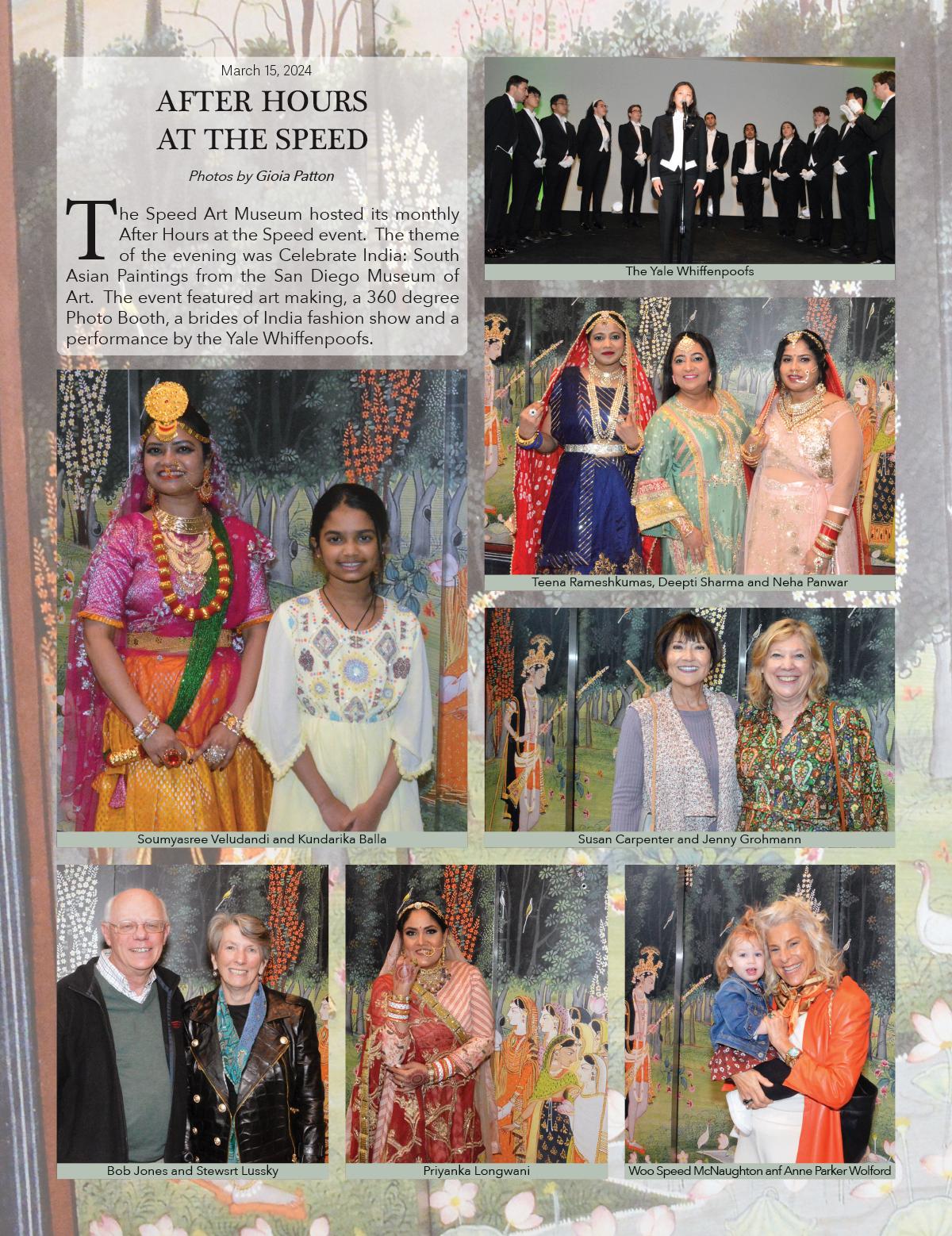


Photosby Kevin Sivakumar
Friends old and new were invited to the Hardscuffle Hounds Inaugural Ball. The event celebrated the revival of the Hardscuffle Hounds and the long held tradition of fox hunting in Kentucky. The activity dates back to colonial times when Virginia colonists adopted the practice from their British counterparts. In present day America, the people who participate in this sport enjoy ‘fox chasing’. In this renewed venture of Hardscuffle Hounds, their mission is to promote the sport of field hunting: mounted and unmounted, and to encourage others to appreciate the merit of conservation and preservation of Kentucky wildlife and its habitats.



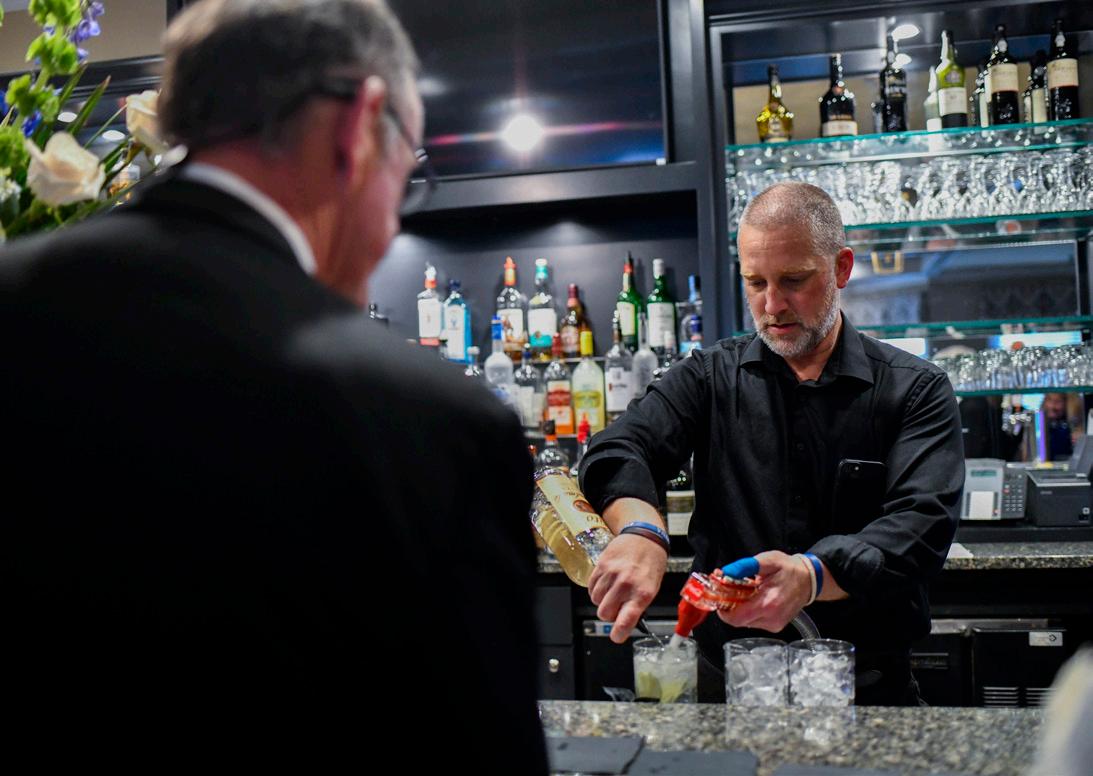















PhotosbyKathrynHarrington
The Kentucky College of Art and Design held a gathering and celebration for Lizzie Hill, Kelsi Haberman and Jesenia AvilaUgalde for their Senior Thesis Exhibition Opening Reception. The exhibitions explored “home” in its various definitions.






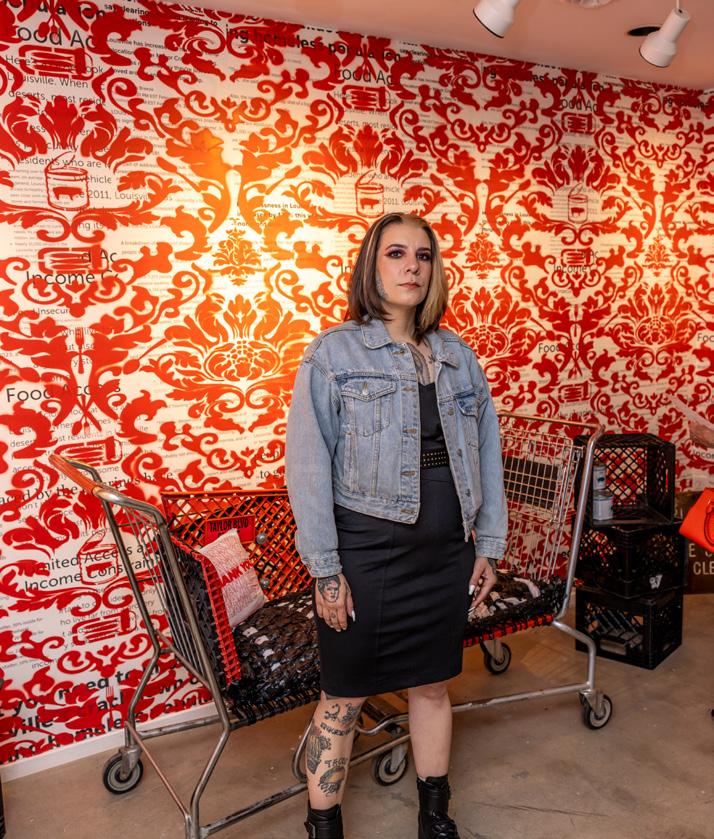












May 16, 2024
PhotosbyKathrynHarrington
Olmsted Parks held its annual Breakfast for the Olmsted Parks at the Mellwood Arts Center. The Breakfast is designed to energize the community about Louisville’s Olmsted Parks and Parkways and gives Olmsted Parks Conservancy the opportunity to educate guests about the mission of the Conservancy. Guests were educated on the parks’ impact on health, property values, tourism, direct use, community cohesion and the environment.


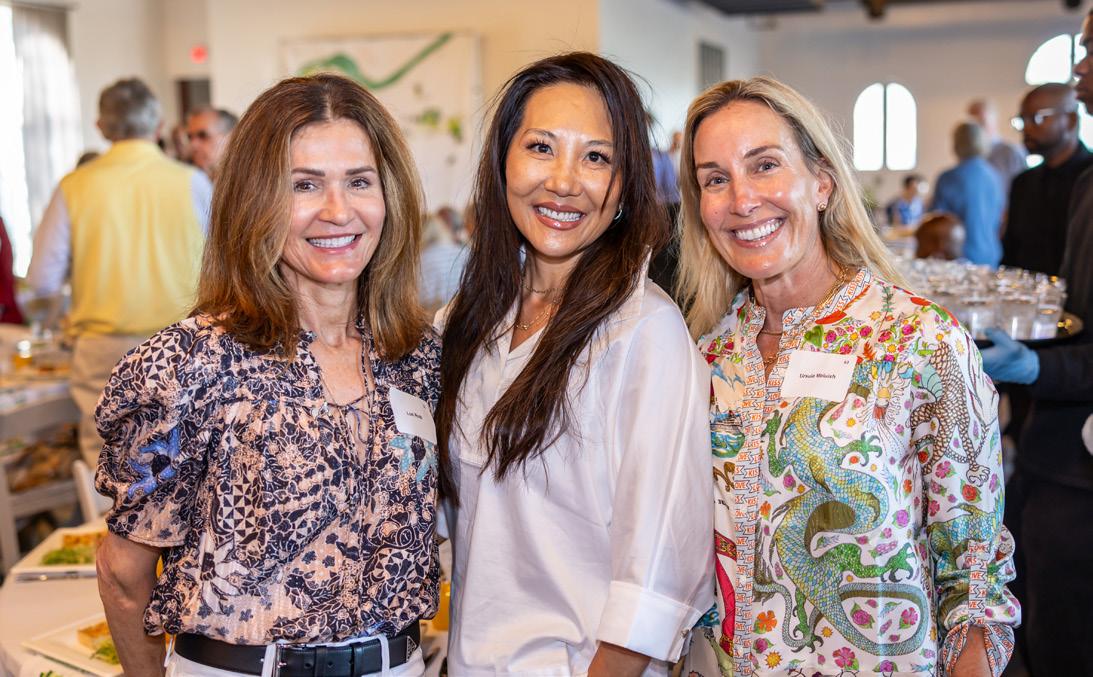

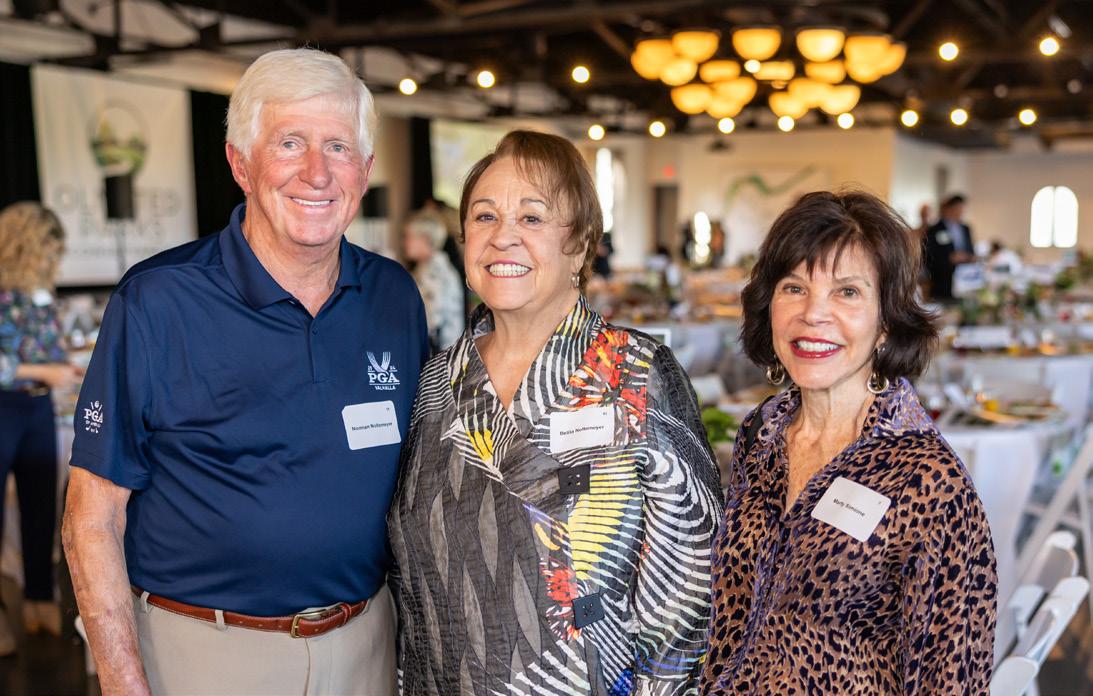
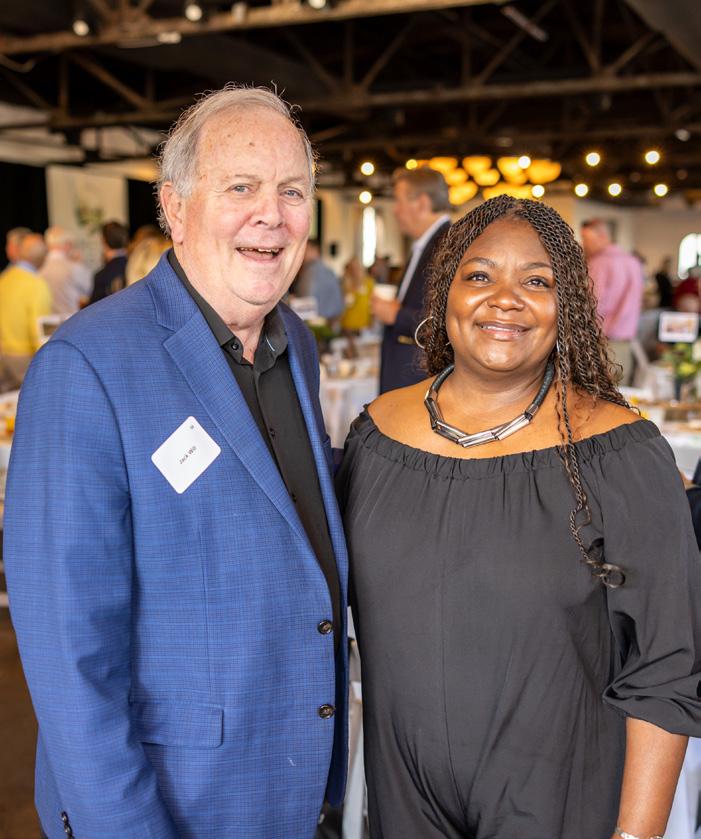





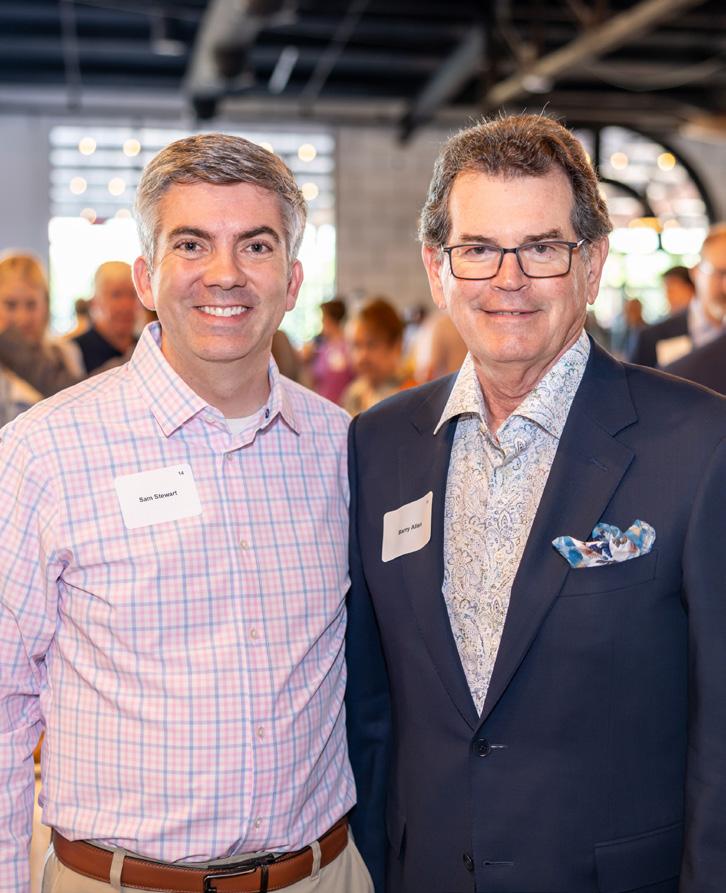


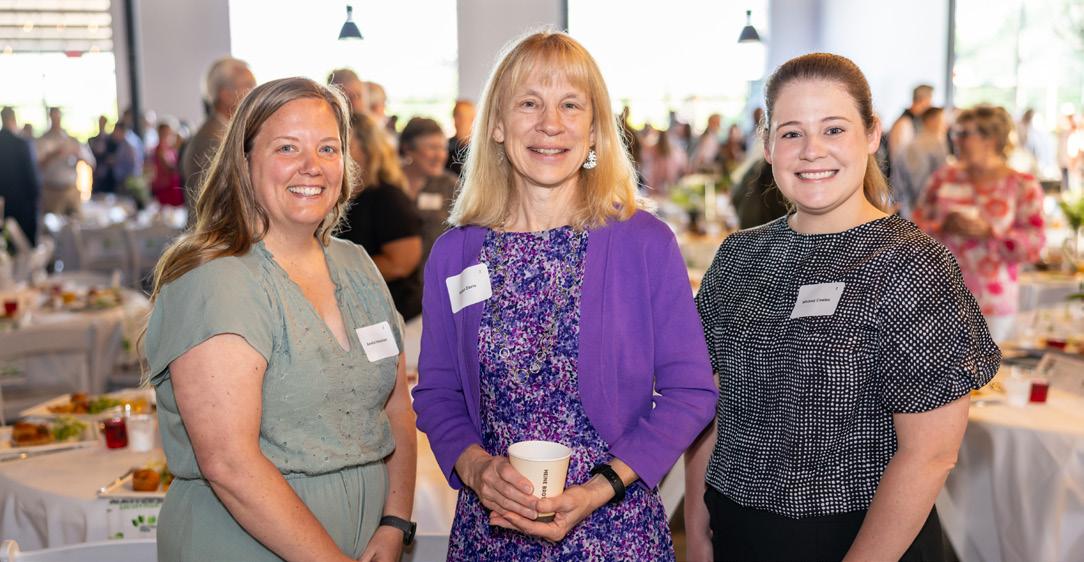




May 17, 2024
Photosby Gioia Patton
The Speed Art Museum hosted its monthly After Hours at the Speed. The theme of the evening was A Night with Asia Institute Crane House. Guests got the opportunity to enjoy art making in Gheens Court, calligraphy and Henna stations, gallery talks, and karaoke. Food and a cash beverage bar were available to purchase from Marigold Catering.





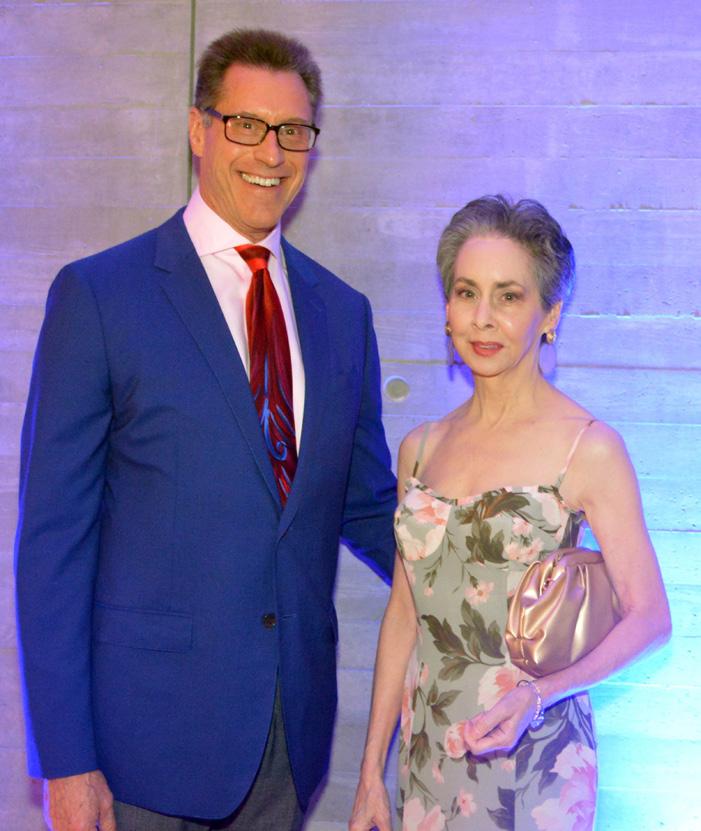









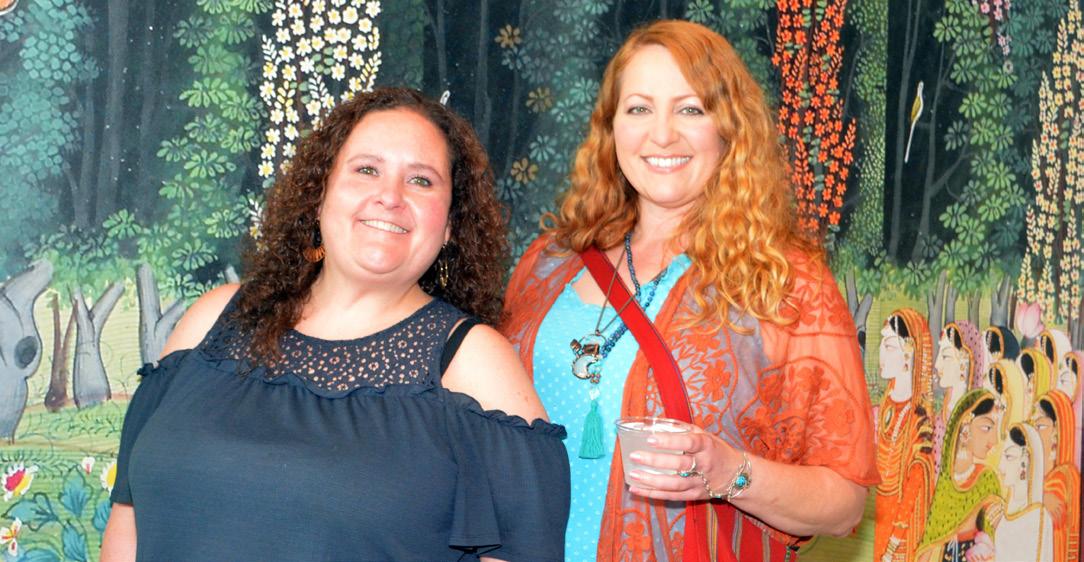



May 18, 2024
PhotosbyKathrynHarrington
The Filson Historical Society celebrated its 140th anniversary with their Heritage Jubilee. The family-friendly celebration was held in Old Louisville in collaboration with Springfest. Attendees enjoyed activities, engaging exhibits, live music from The Louisville Leopard Percussionists and Appalatin, treats from Kona Ice, story time with StageOne, vintage fire truck rides and more! Guests also got to tour the historic Ferguson Mansion and visit booths from community partners like the Kentucky Derby Museum, Cave Hill Cemetery, and more.


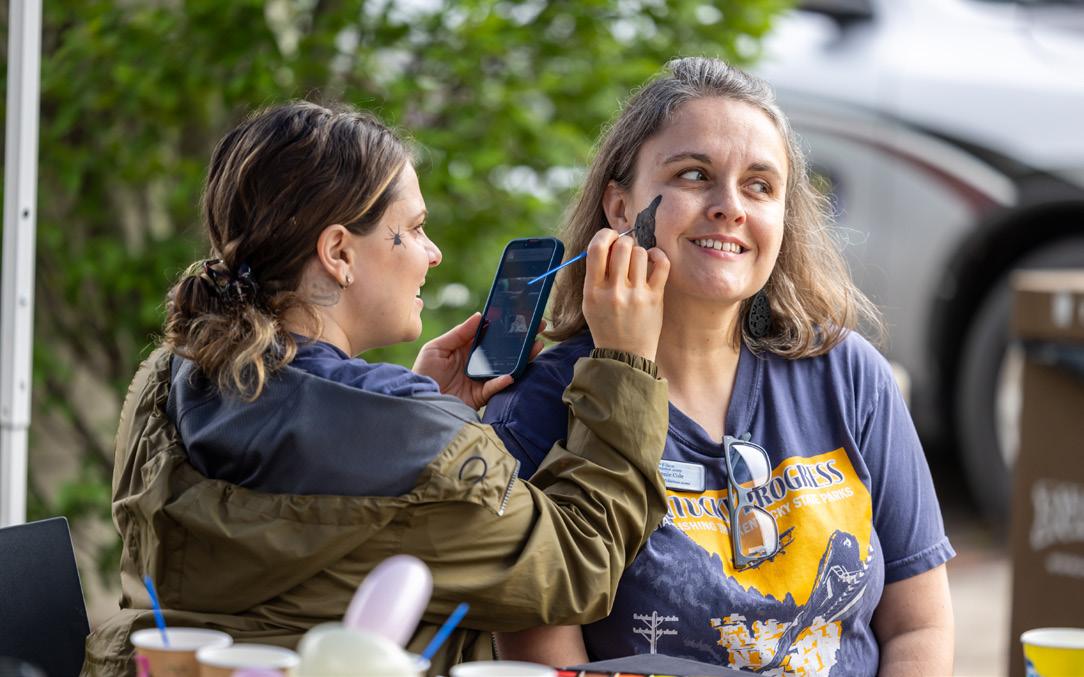







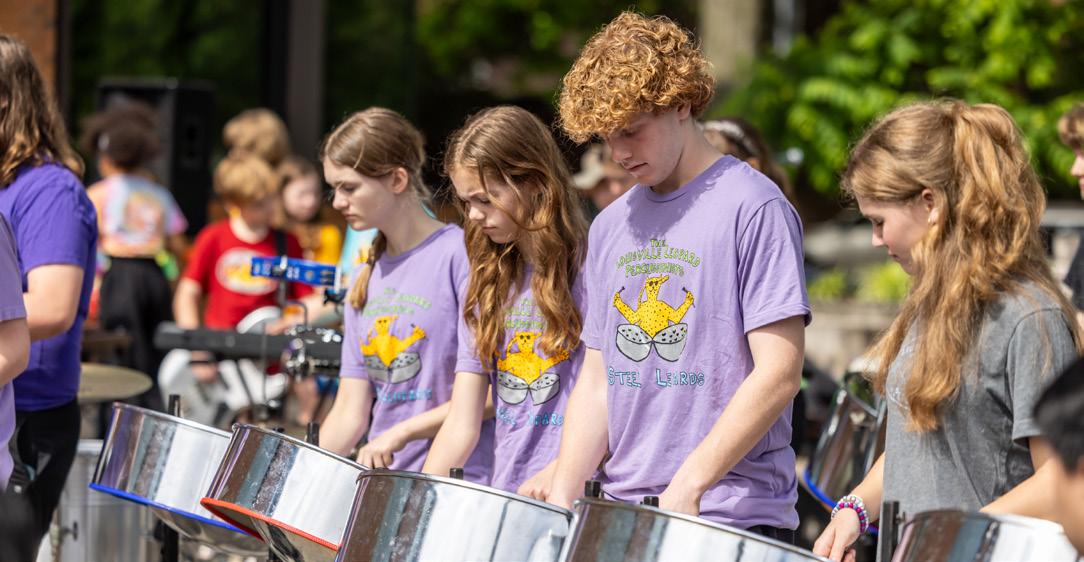

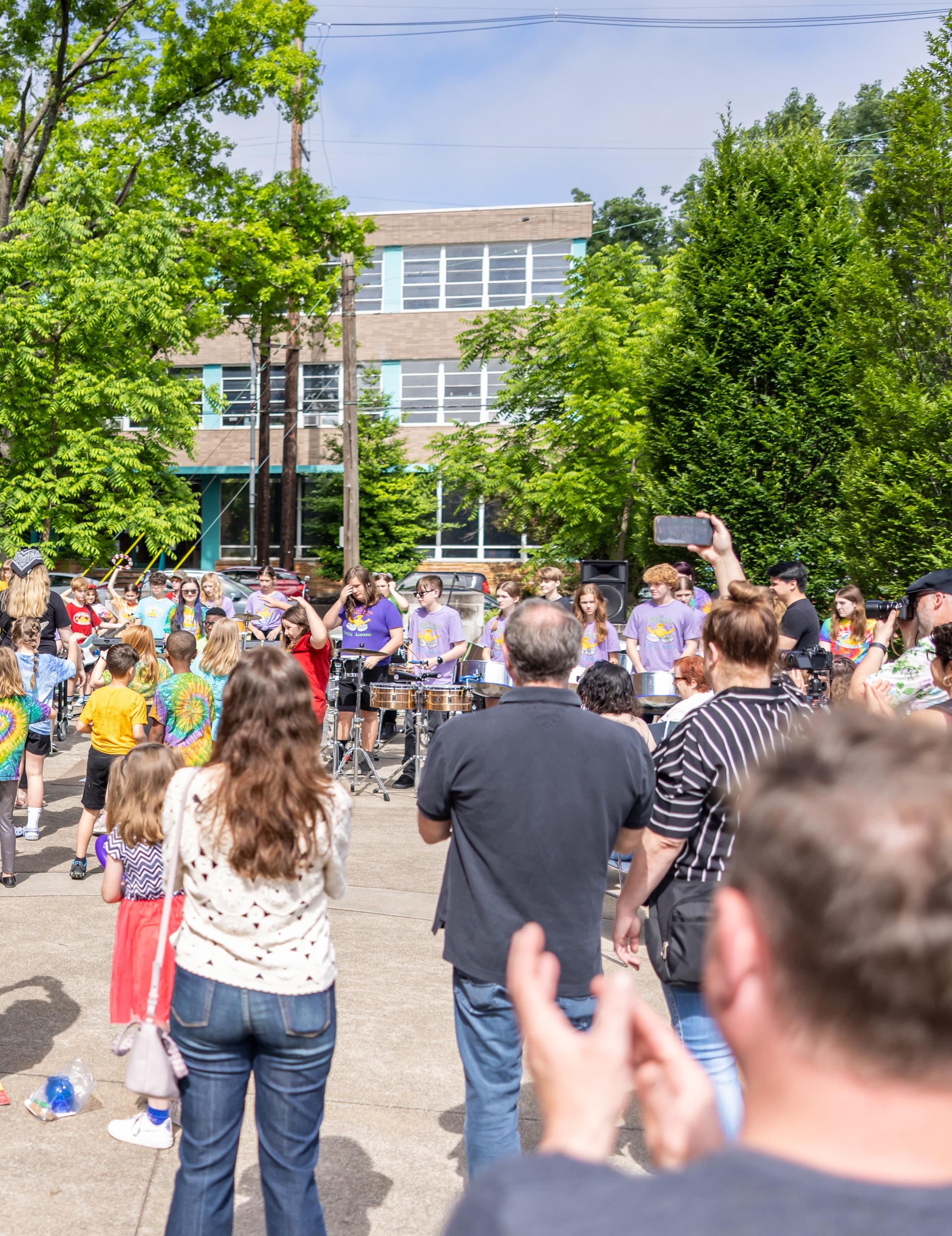


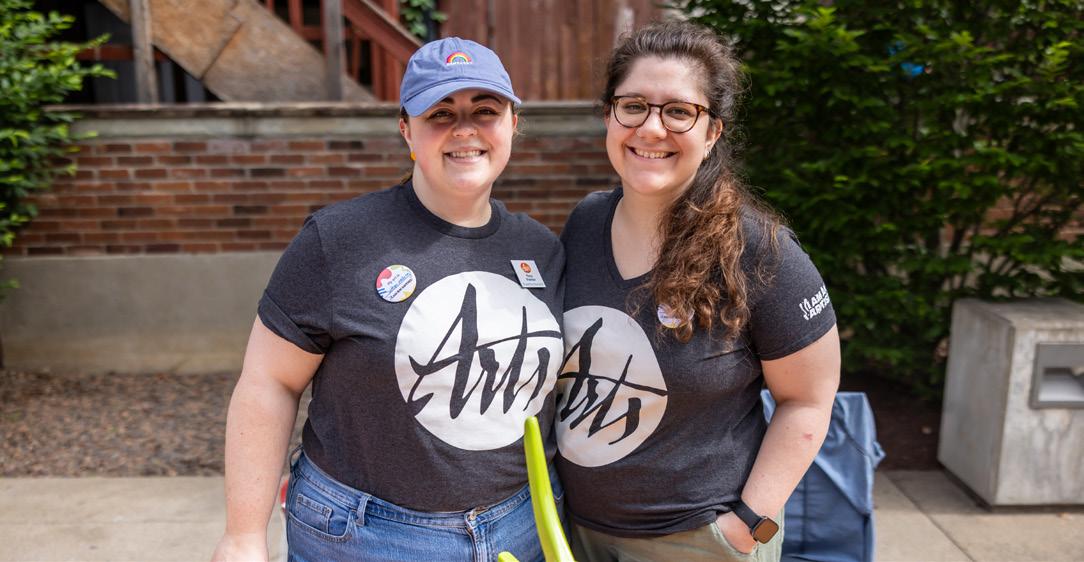



May 18, 2024
Photosby Gioia Patton
Day Spring hosted its annual Horizon of Hope Gala at the Kentucky Derby Museum. For Day Spring’s 30th anniversary, guests dressed in their finest attire for this milestone celebration. Day Spring has been a catalyst for change in the lives of individuals with intellectual and developmental disabilities. Tickets purchased for the Horizon of Hope Gala directly contributed to creating meaningful opportunities and fostering a more inclusive community for those that Day Spring serves.

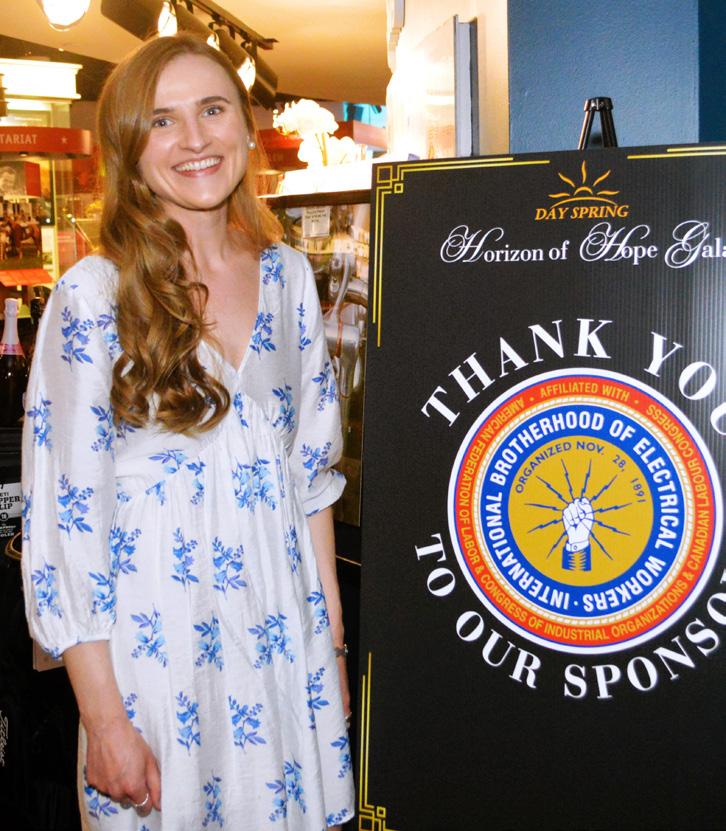











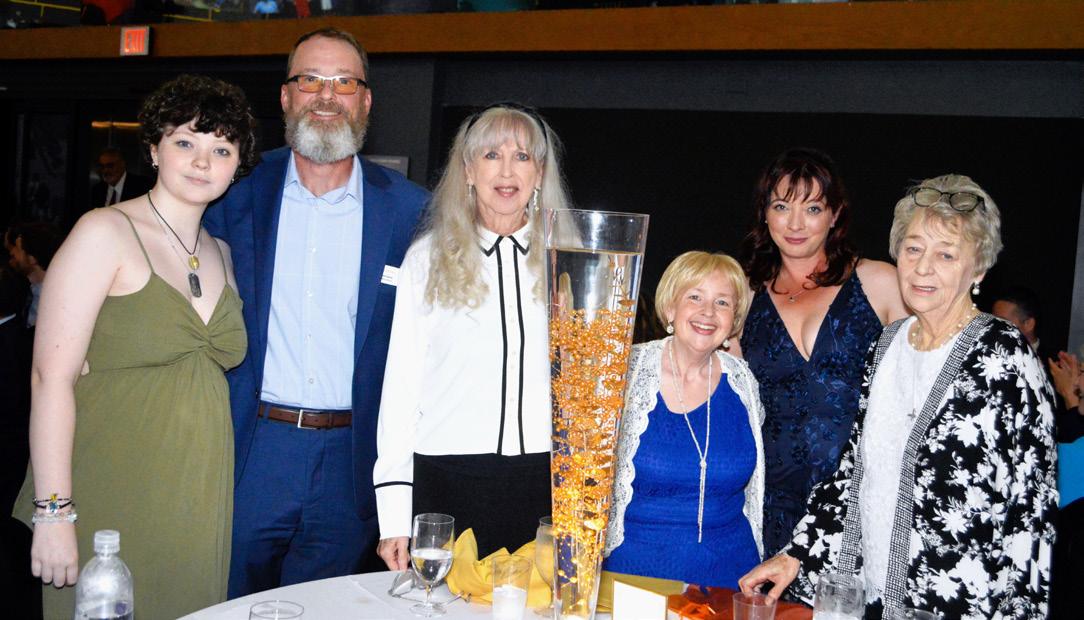




PhotosbyKathrynHarrington
The National Parkinson’s Institute held its Red Tulip Gala at the Muhammad Ali Center. Guests gathered for the gala decked out in red to raise awareness and support for Parkinson’s disease. The evening, emceed by John Ramsey, was filled with insights and breakthroughs in Parkinson’s research to uplifting stories of triumph. Attendees were treated to an exquisite dining experience while engaging in conversation with fellow supporters, caregivers and individuals affected by Parkinson’s.

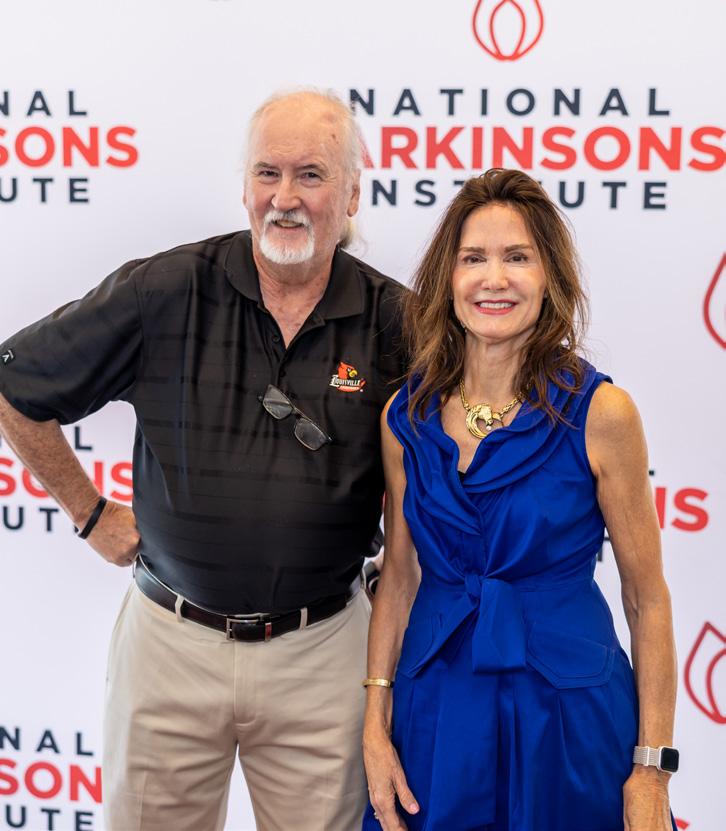


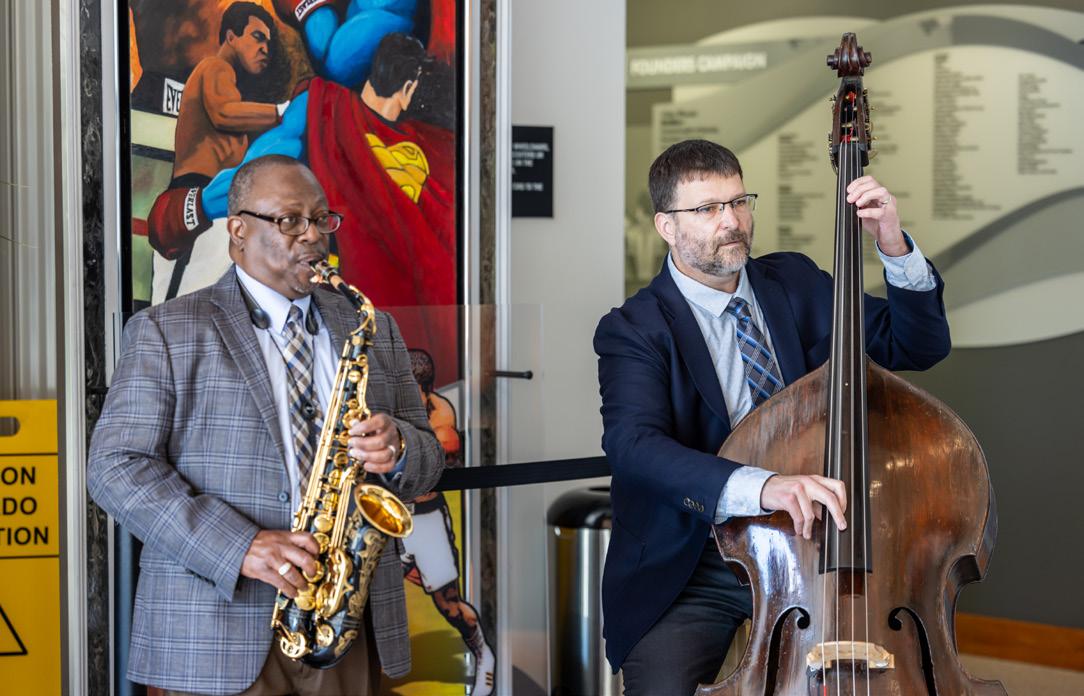


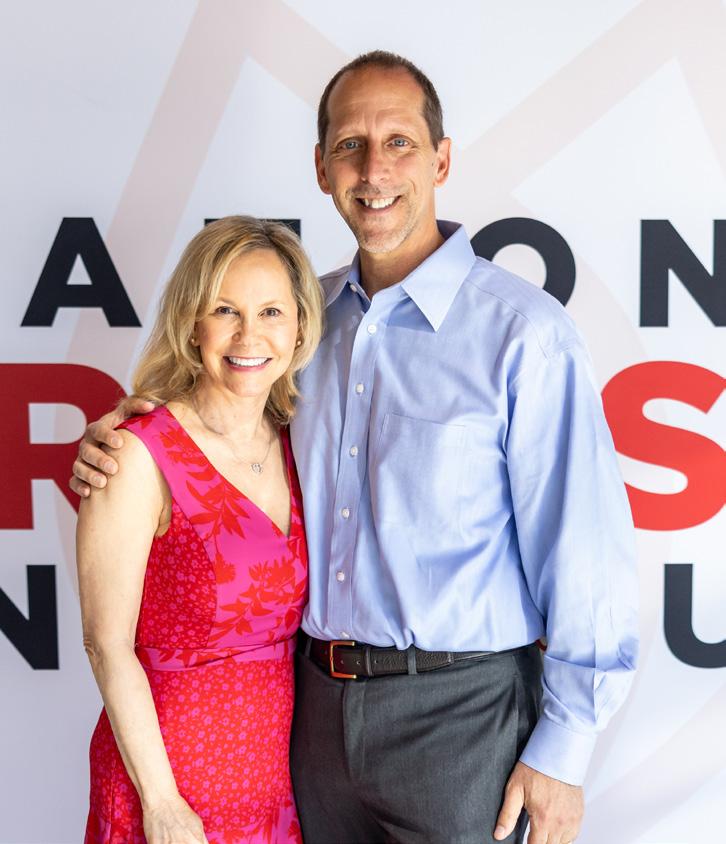






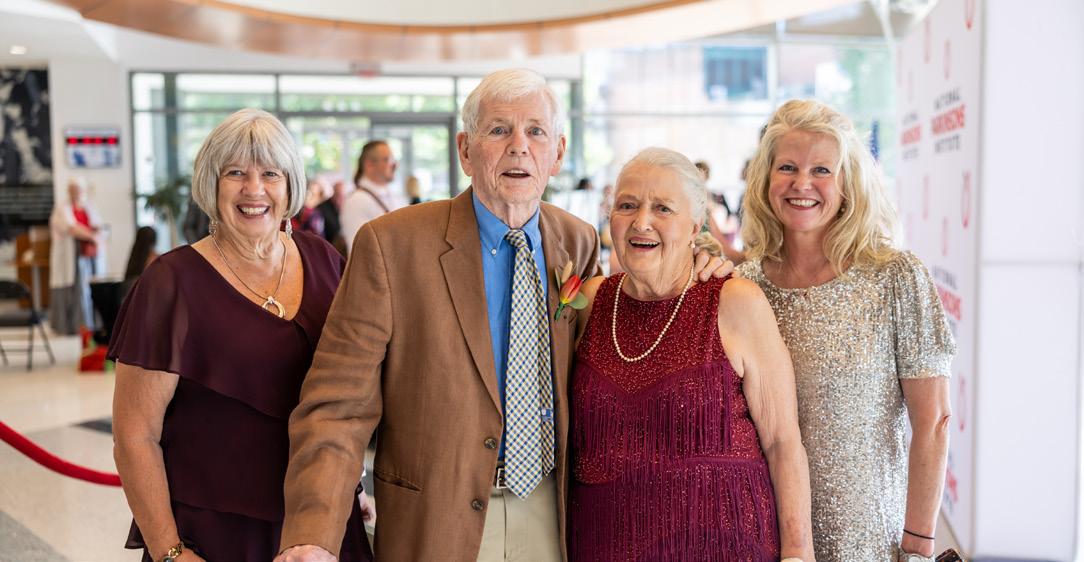




Photosby Gioia Patton
Abbey Road on the River was once again held at Big Four Station Park in Jeffersonville, IN. The world’s largest Beatles-inspired music festival brought together people from all over the U.S. to celebrate the music of one of the most influential bands of all time. Attendees got to enjoy 50 different bands from around the world as well as Beatles merchandise, retail and craft vendors, interactive art and activities and on-site food and beverages.







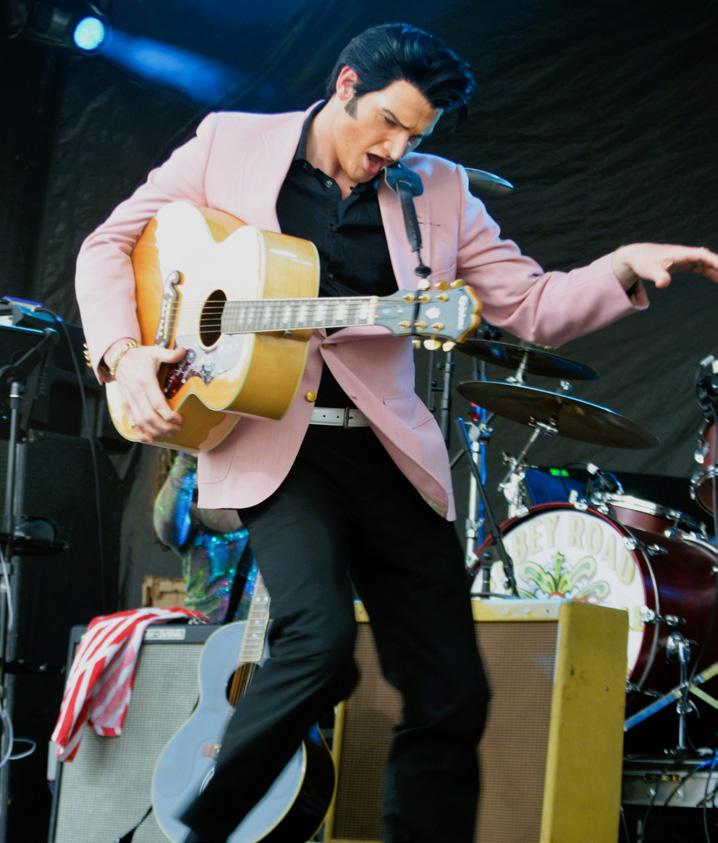




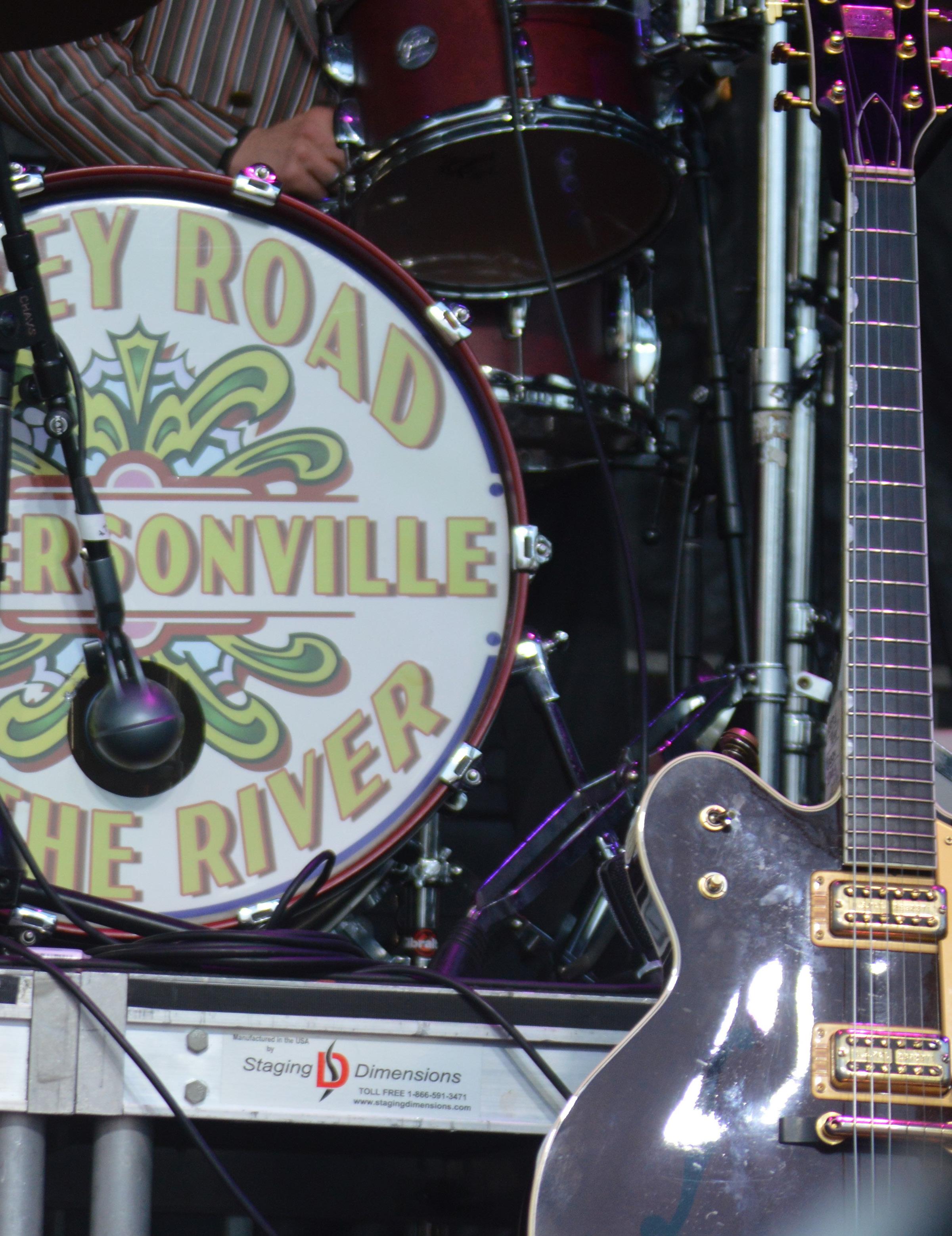






May 24, 2024
PhotosbyKathrynHarrington
Kentuckiana Go Red for Women was held at the Angel’s Envy Bourbon Club at the L&N Stadium. Hosted by the American Heart Association, the Go Red for Women event focused on connection and engagement. The event brought together people from all across the community with the common goal of increasing awareness that stroke and cardiac events can be prevented through a variety of lifestyle changes such as healthy heating, moving more and staying on top of blood pressure management. Guests of the event enjoyed a delicious lunch followed by the Go Red For Women Fashion Show and a Heart Health Panel.








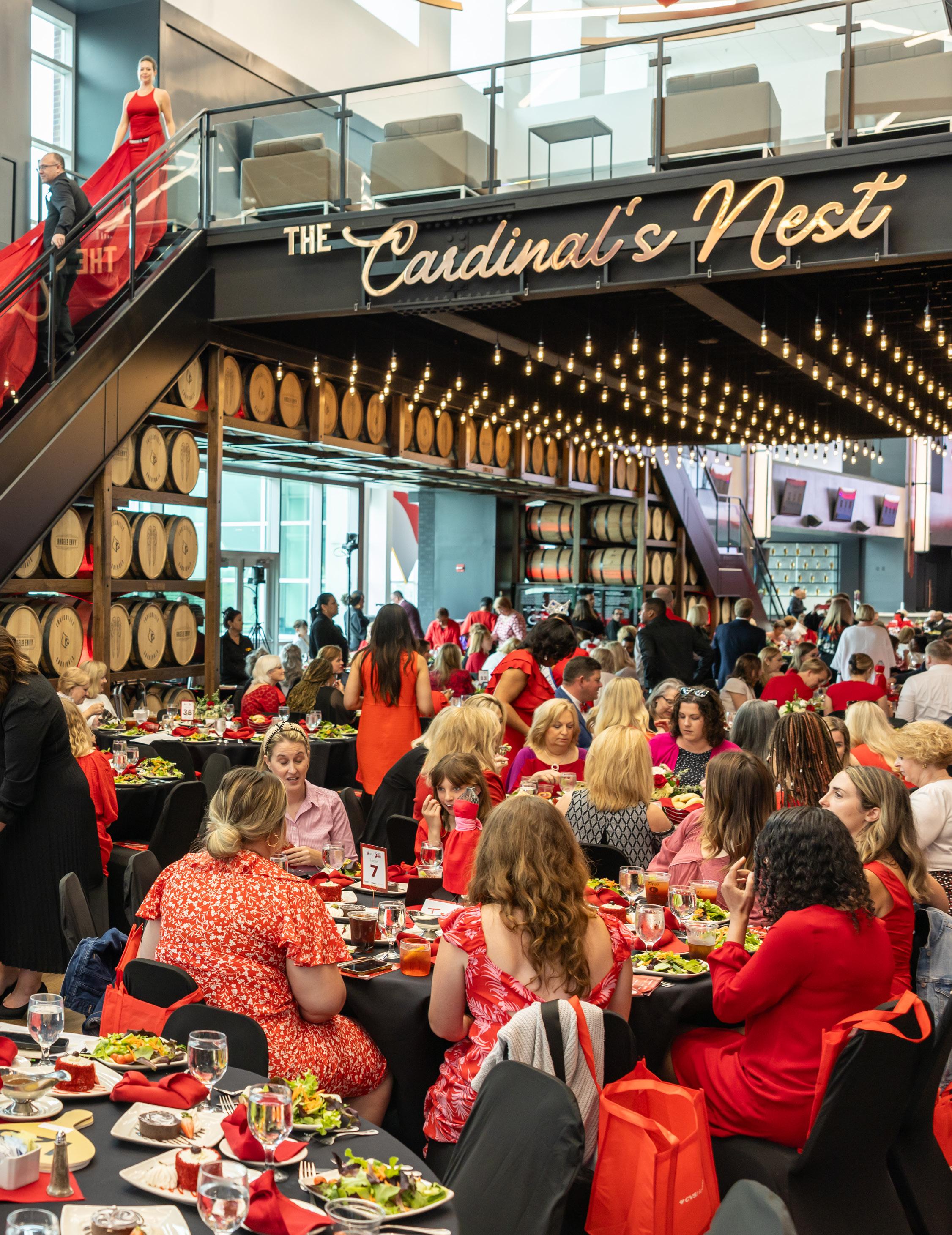









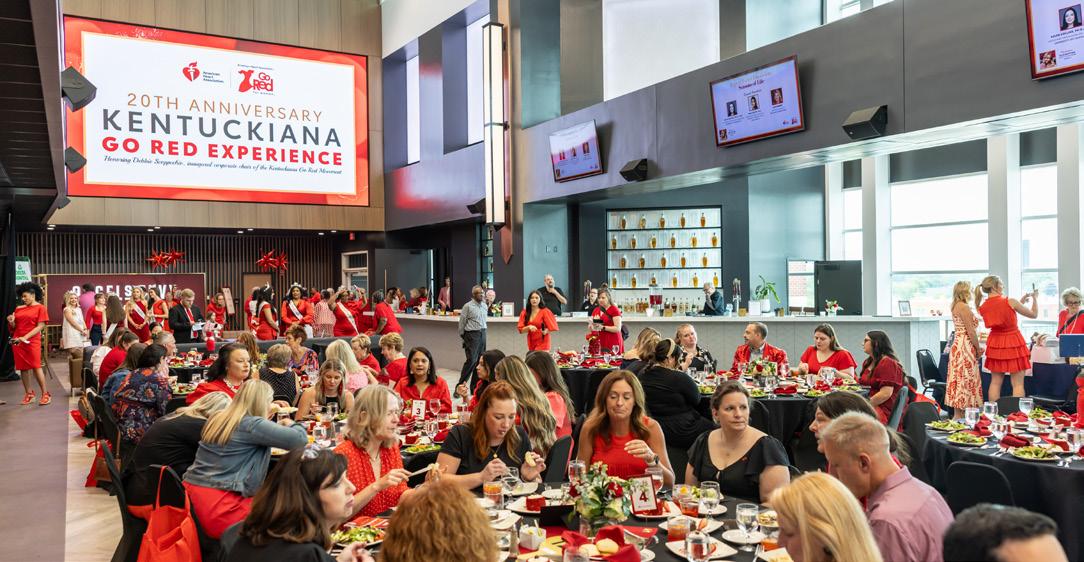



May 25, 2024
PhotosbyKathrynHarrington
Jack Harlow hosted Gazebo Festival at Waterfront Park. The festival was originally slated to be two days but due to weather was shortened to one. Attendees enjoyed the first day of the festival with headliner SZA and other acts including James Black, Omar Apollo, Pink Pantheress, Vince Staples and more.



















PhotosbyKathrynHarrington
Spalding University held their event From Inspiration to Compassionate Innovation: Celebrating Visionary Leadership. The event included presentations of several awards, honorary degrees to influential members of the community, the honoring of the presidency and contributions of Tori Murden McClure and more.
















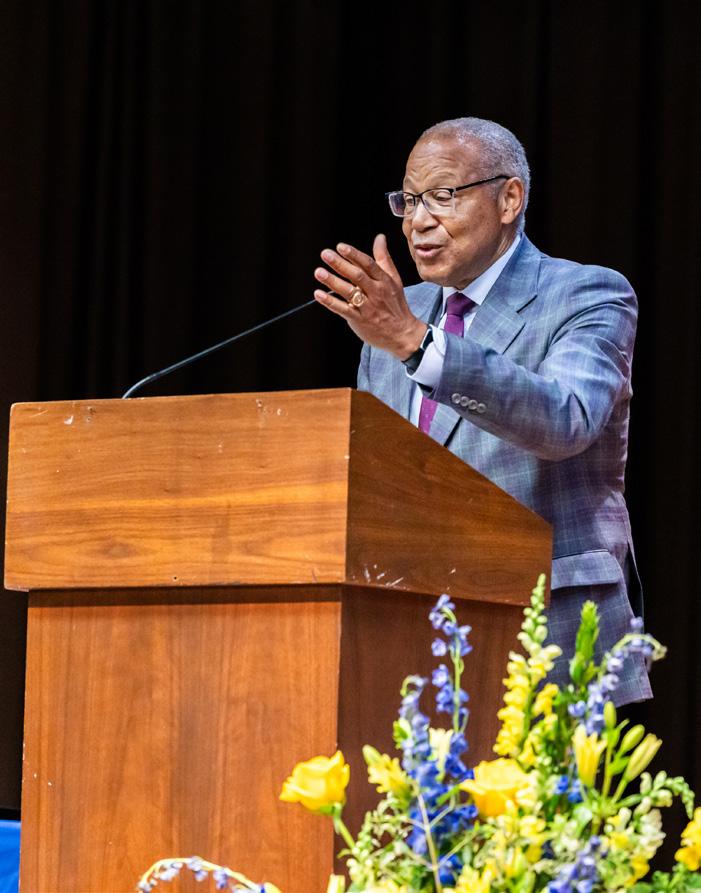


Photosby MattJohnson
The artists of St. Matthews Studios and Gallery held their second exhibit “SevenUp”. The seven participating artists are Gayle Cerlan, Lynn Dunbar, Jeanne Freibert, Julie Hohmann, Mary Dennis Kannapell, Page Penna and Gretchen Treitz. The exhibit includes oil paintings, sculptures, textiles, watercolor and mixed media and runs until August 24.

















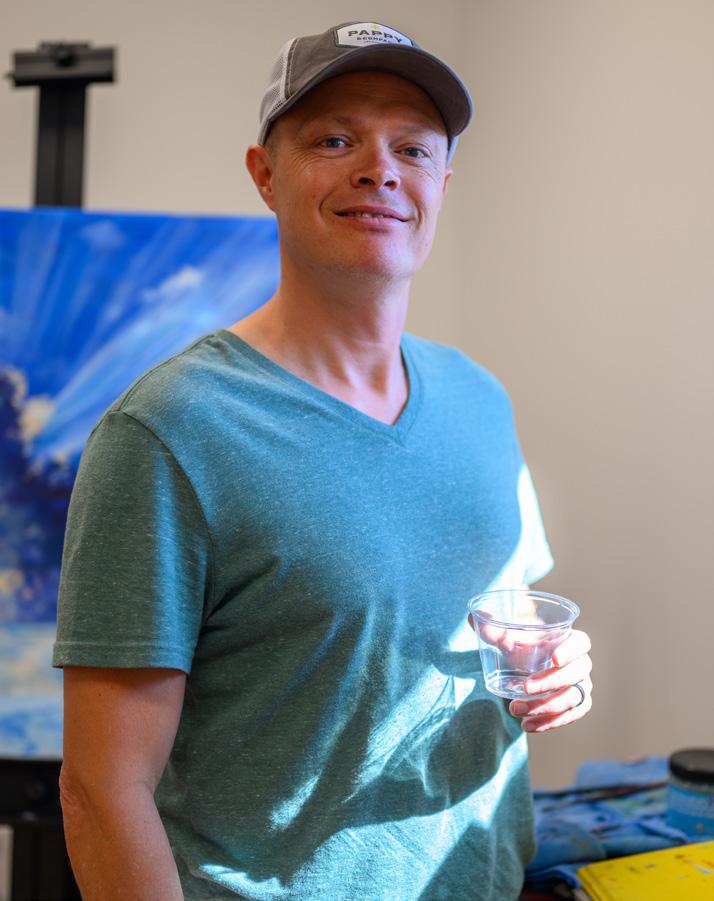

Photosby Gioia Patton
The Frazier History Museum hosted An Evening with Kentucky Poet Laureate Silas House. House stands out as one of the most influential voices in Southern literature through his body of work. As a New York Times bestselling author and a Grammy finalist, he also holds the prestigious position of Kentucky’s current poet laureate. His formative years in a working-class environment and strong ties to Appalachia have deeply influenced his perspective. Despite the challenges he faced as a gay man, Silas House remains a passionate advocate for the state of Kentucky.






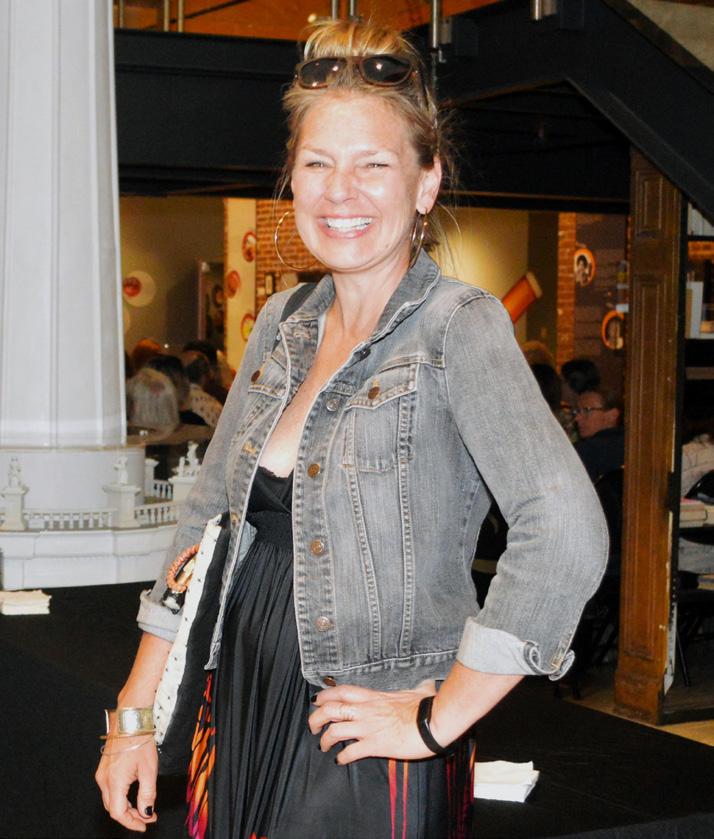

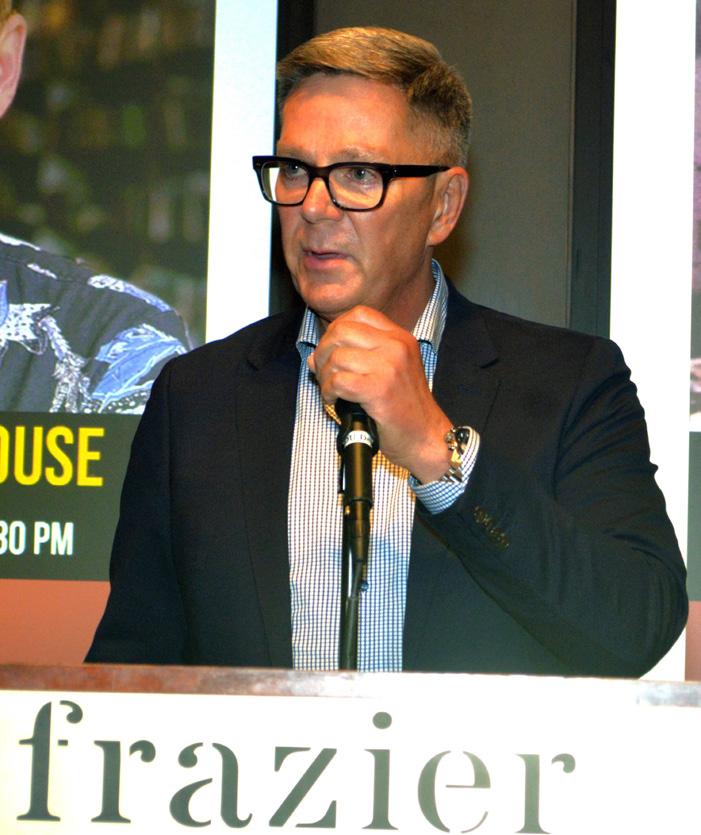










June 6, 2024
Photosby Gioia Patton
Norton Children’s Hospital hosted its annual Bourbon & Bowties at the Fleur De Lis Farm and featured gourmet hors d’ oeuvres prepared by Louisville’s top chefs, cocktails, music, an auction and more. The 2024 honoree was Annalise Aguirre who receives care for her heart at Norton Children’s Heart Institute. The annual event has raised over $2.9 million over the past 13 years to support Norton Children’s Hospital.









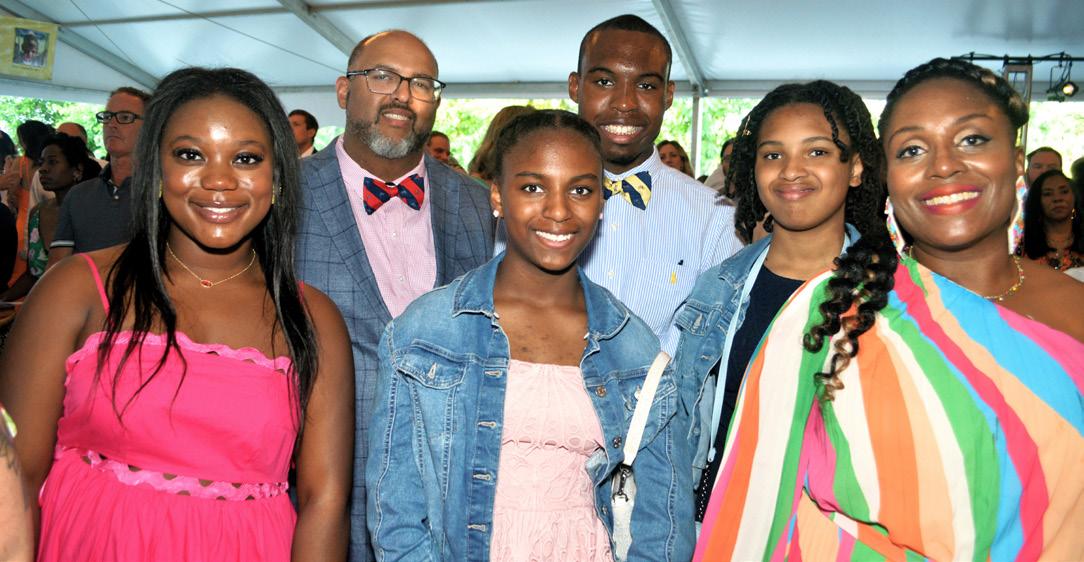








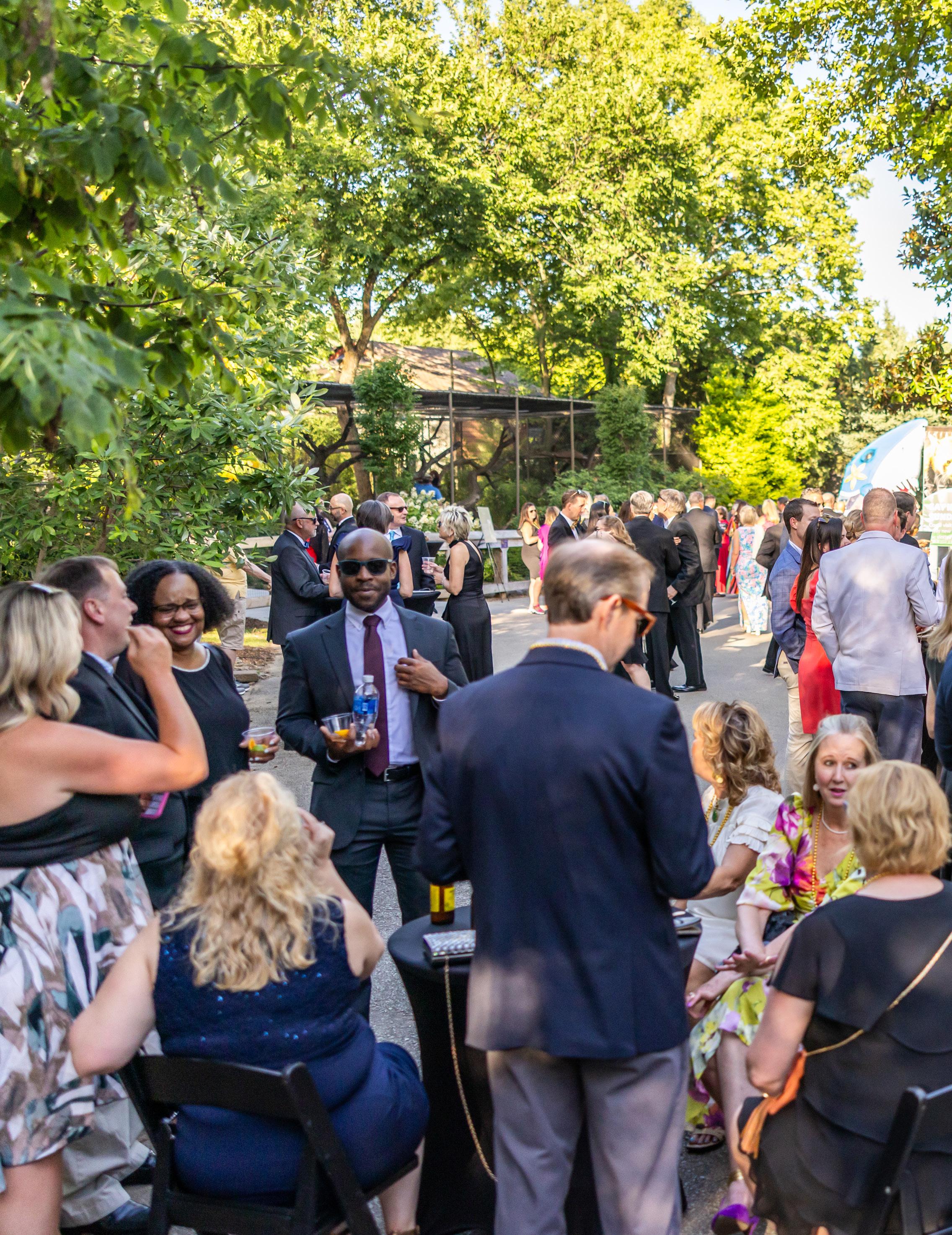
June 7, 2024
PhotosbyKathrynHarrington
The Louisville Zoo celebrated the 43rd annual Zoofari gala hosted by Friends of the Louisville Zoo. Honored this year was one of the newest additions to the Louisville Zoo Family: Sundara, the red panda. The wild night of Red PANDAmonium featured signature cocktails, hors d’oeuvres, a three-course dinner, a live and silent auction, a bourbon pull, and more! Special opportunities were available to sponsors, including animal encounters, VIP options, and a unique live auction. All proceeds supported the enhancement and expansion of the Louisville Zoo.















June 8, 2024
PhotosbyKathrynHarrington
ifted to the city of Louisville by the (Un)Known Project, the In Our Elders’ Footprints Public Art Installation was officially unveiled on the Louisville River walk between 9th and 10th streets. The footprints include civil rights leaders, artists, activists and educators, and “honors and commemorates Black Louisville elders who have impacted the community” says the (Un)Known Project. Many gathered for the unveiling of the project which included footprints from civil rights activist Mattie Jones, the first African American scientist at Brown Forman Elmer Lucille Allen, artist Ed Hamilton, Rev. Dr. Charles Elliott, Senator Gerald Neal and many more. The unveiling event was supported by the Juneteenth Jubilee Committee.









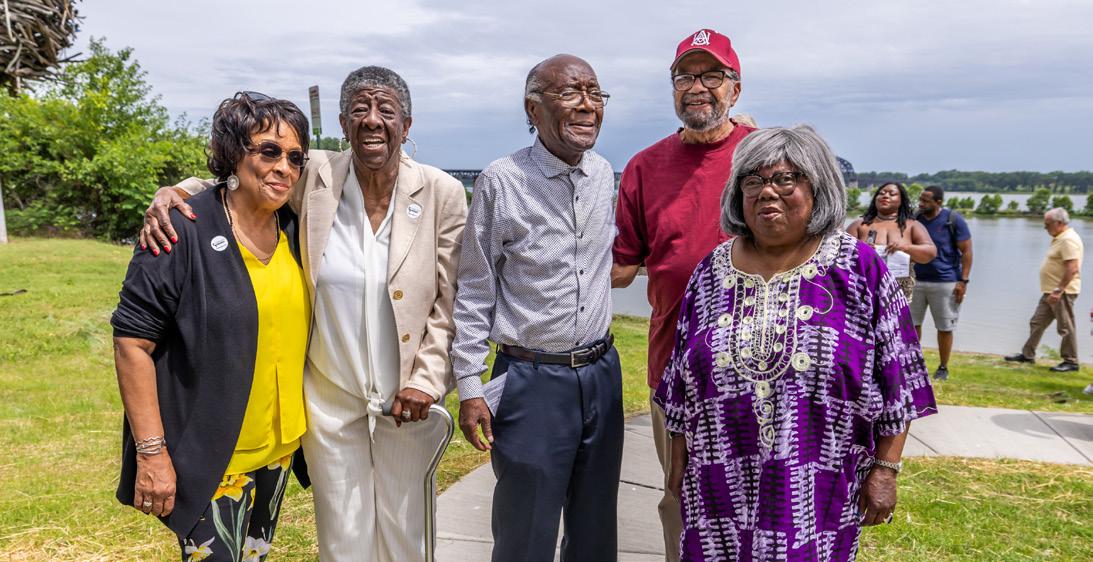














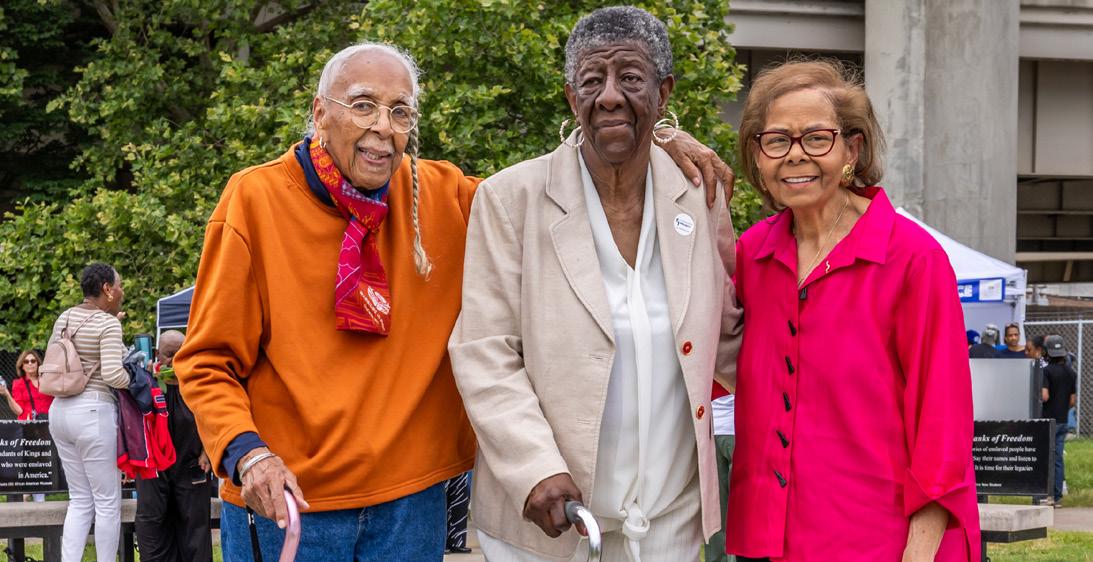











June 8, 2024
PhotosbyKathrynHarrington
Antz Marching, LLC and the craft beer experts of Pearl Street Taphouse hosted the inaugural Rollin’ on the River Craft Beer Festival at The Howard Steamboat Museum in Jeffersonville, IN. This premier tasting event gave guests the opportunity to sample more than 100 craft beers in a grassroots beer festival environment. Attendees also got to enjoy local food vendors and live music. Proceeds from Rollin’ on the River Craft Beer Fest went to the Howard Steamboat Museum.

















PhotosbyKathrynHarrington
Members of the community celebrated Juneteenth at the 5th Annual Louisville Juneteenth Festival. The festival transitioned to hosting the event at Lynn Family Stadium and featured a wide variety of vendors and performers. Guests enjoyed great food and community at this festival that continues to bring communities together and bridge cultural divides.
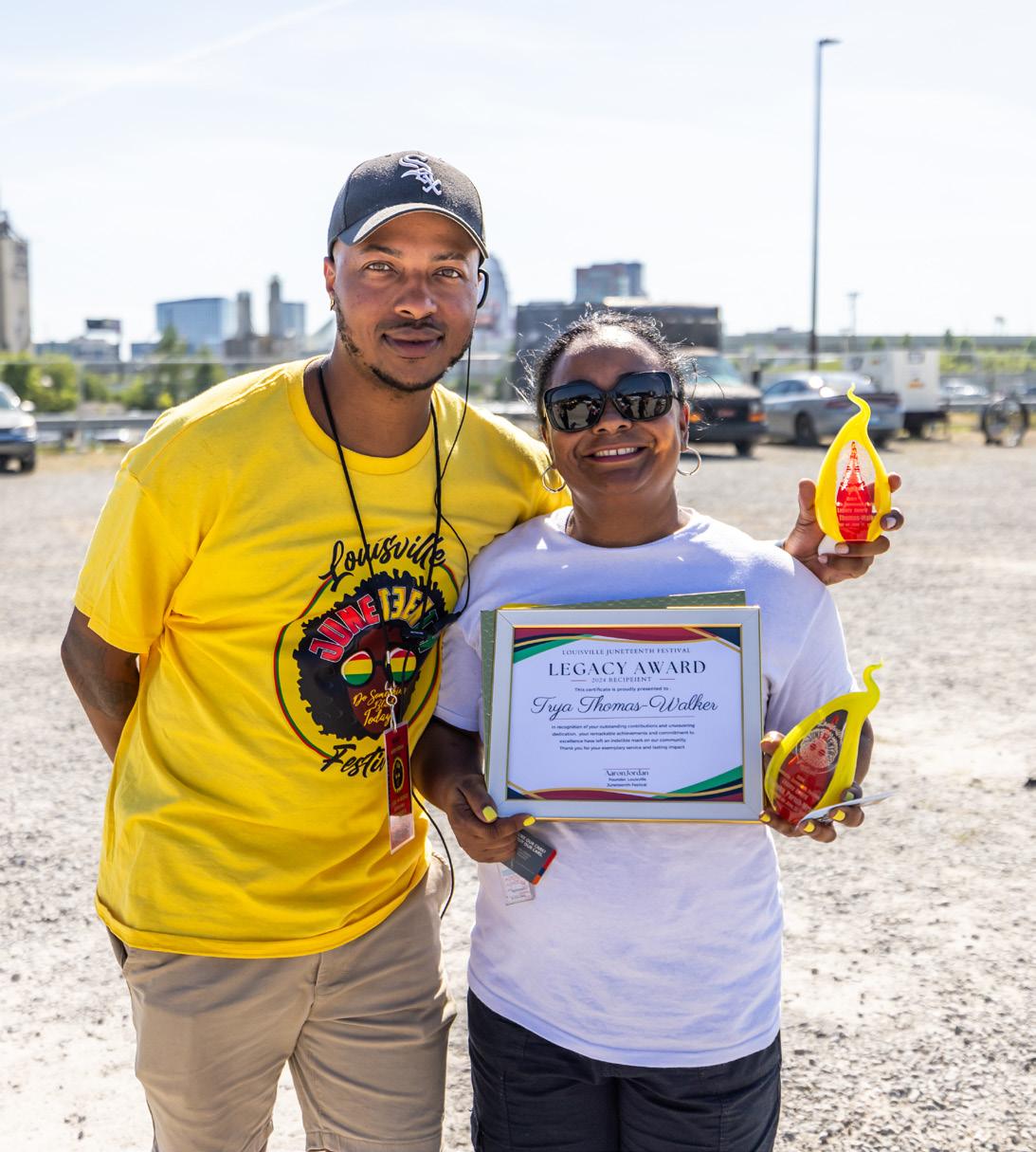


















PhotosbyKathrynHarrington
This year’s Kentuckiana Pride Parade and Festival saw an incredible record breaking attendance. Thousands came out for the annual event which started with the Pride Parade that traveled from NuLu through downtown Louisville and ended at the Pride Festival on the Big Four Lawn. The parade was packed with rainbow clad participants, colorful floats and performers. The vibrant celebration of love and acceptance continued inside the gates of the sold out festival where attendees enjoyed drag shows, a wide variety of vendors and danced all day and night to performers including The Aces and headliner Chappell Roan.

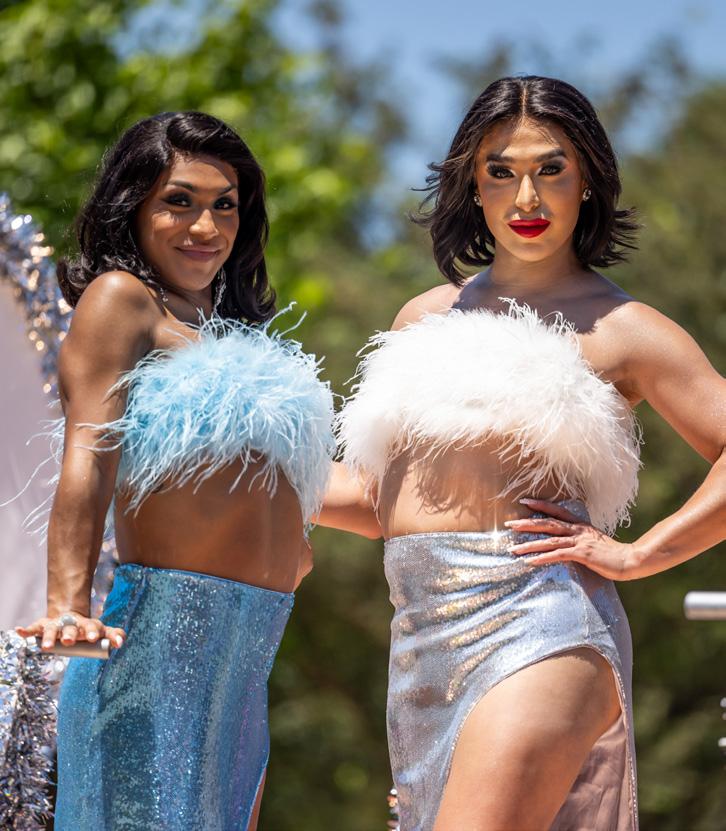















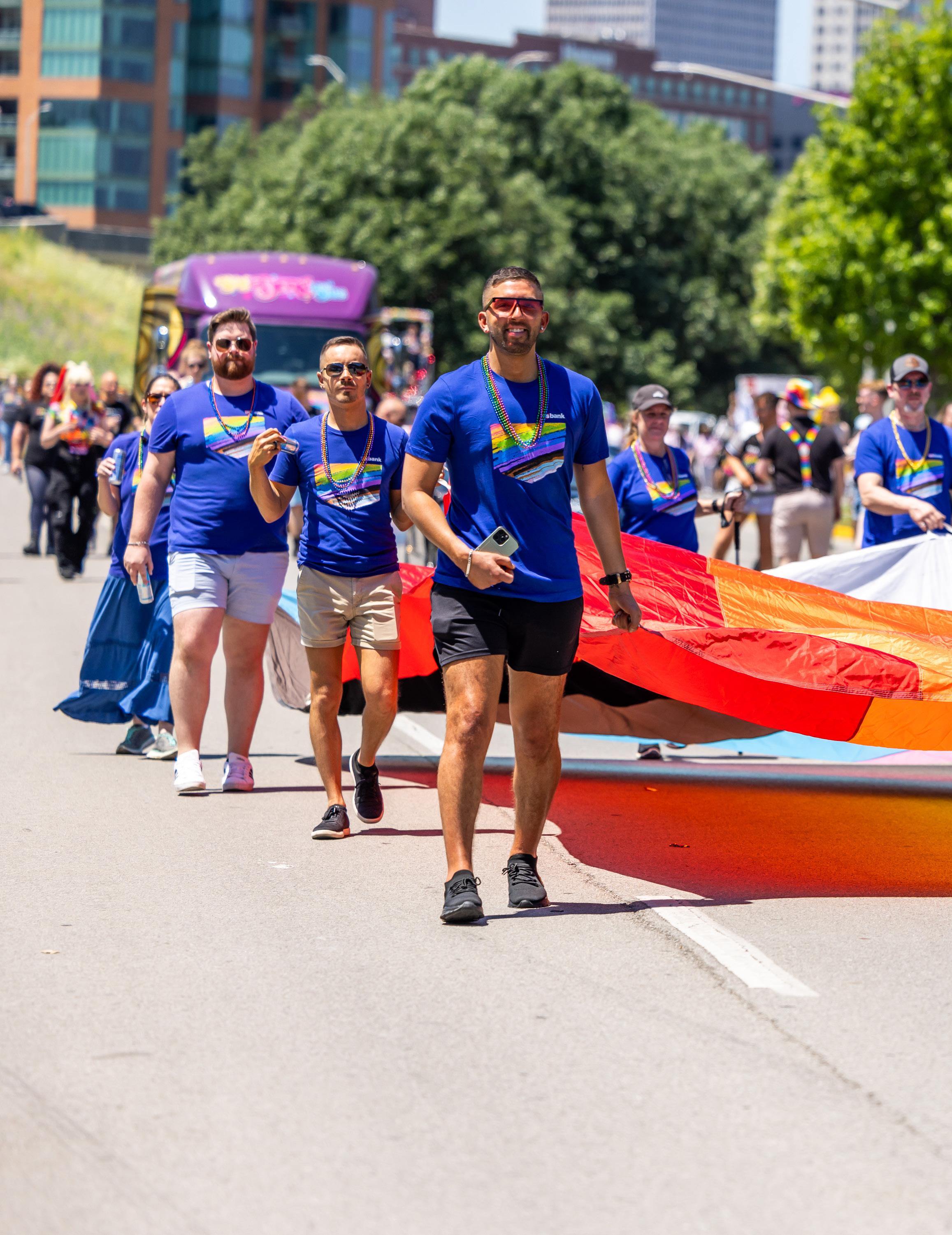
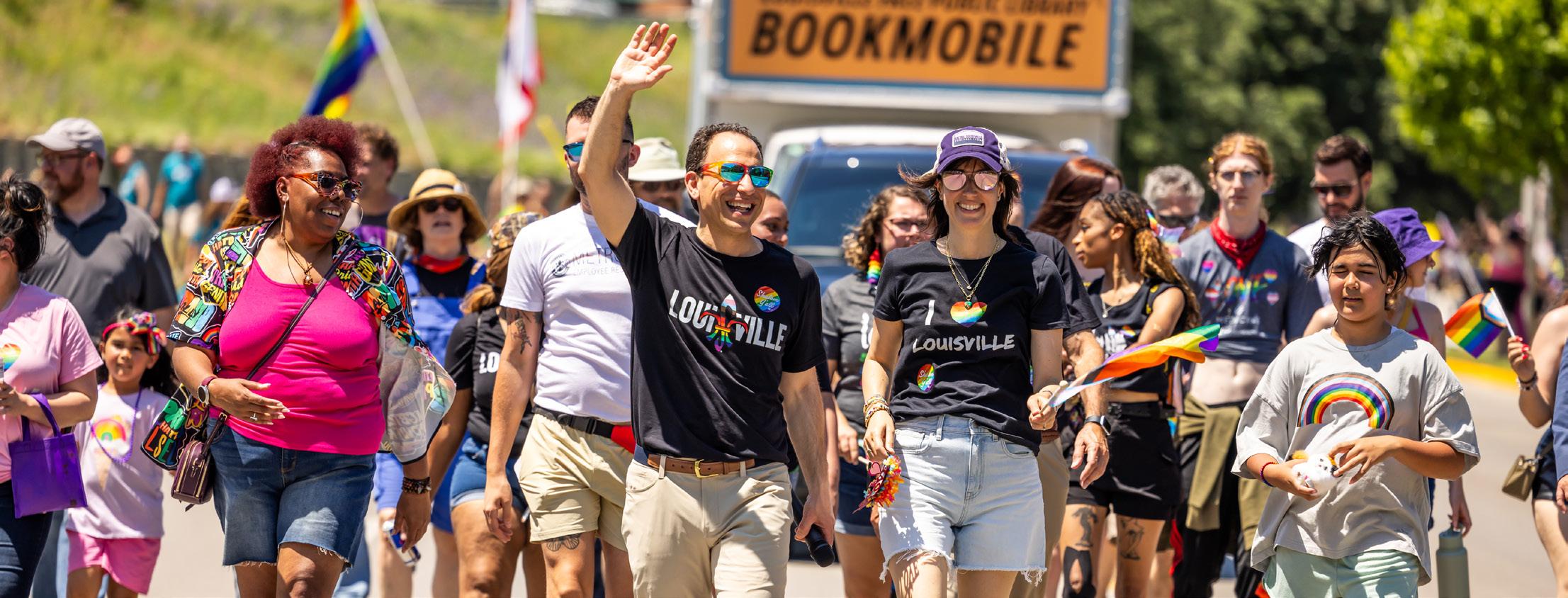

















PhotosbyKathrynHarrington
Gilda’s Club Kentuckiana held their Community is Stronger than Caner event along with the birthday celebration of Gilda Radner. The family-friendly social event included games, music, crafts, lunch and...birthday cake! Many other organizations had tables at the event including the Kentucky Cancer Program, Ovarian Awareness of Kentucky, Livestrong, the Louisville Pancreatic Cancer Action Network and more.








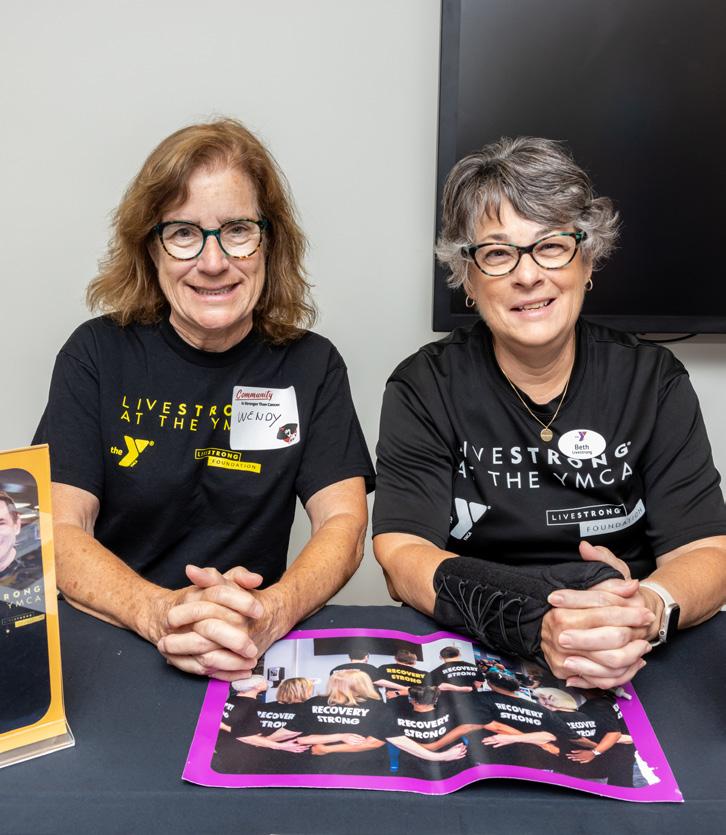














Thank you to our sponsors for your continued support:
Aesthetics in Jewelry
Baptist Health / Milestone Wellness Center
Bittners
Blue Grass Automotive
CaloSpa Rejuvenation Center
Chenoweth Square
Cultured
Details
Genesis Diamonds
Independence Bank
J Michael’s
Kentucky Humane Society
Kentucky Select Properties
Laura Rice
Louisville City FC / Racing Louisville FC
Mamili 502
Melanie Galloway
Rabbit Hole Distillery
Speed Art Museum
Susan’s Florist
The Skin Group
Vincenzo’s



